Fifty parting thoughts from the 2016 Australian Open

MELBOURNE – At the quarter-turn to the season, cleaning out the notebook (and MS Word file) from the 2016 Australian Open. And, if you’ll indulge this bit of unseemly self-promotion, I have a new book out this week from the Freakonomics-for-sports genre—and my publisher would be rightfully upset if I didn't mention it today. With that obligation fulfilled, onward…..
• Sometimes players—of all levels—concede “too good” after a point. Sometimes even after a match. But right now Djokovic’s entire level of tennis is simply too good. It’s been more than a year since he entered an event and failed to get to a final. He’s lost one match since last August. Even on an off-day—say, a day when he commits 100 unforced errors—he still can win. When he won the Australian Open for a sixth time on Sunday, beating Andy Murray in the final, it was another indication that he’s residing in his own gated community right now. Too good.
• Angelique Kerber offered the equivalent of a management seminar in the power of self-belief. Down match point in her first outing, she survived and built confidence with each round. By the time she got to the final, she essentially said, “I may lose, but I’ll have to be beaten.” Three sets later, she beat Serena Williams to take the 2016 Australian Open title. As much as players of all levels want to emulate the legends, performances like this are just as instructive.
Everything you need to know about Kerber’s Australian Open victory
• “Daddy, tell me about your 2016 Australian Open,” the child will ask one day. And, damn, will Andy Murray have one rollicking story tell. “Mom was home pregnant—and I was ready to join her if you’d come early. Grandpa Nigel had a health scare. Grandma Judy helped oversee a player who made a surprise run to the semis and then she had to leave early. Uncle Jamie won the doubles. Oh, I almost forgot: I came within a match of winning the men’s singles title.”
"I hope you took a vacation after that, Dad."
• For rounds 2–6, Serena Williams may have played as well as she had at any point in her career. In the final, though, her level dropped—in part because of nerves, in part because of the opponent and in part because of both. She ended up leaving her second straight major amid disappointment, stuck on 21, so to speak. All that said, Serena was exceptionally—just exceptionally—gracious in defeat. Read her transcript after the match and, well, just read it…
• Martina Hingis won still another major title, combining with Sania Mirza to take the women’s doubles. The partnership is simply dominating the field, having won 36 straight matches. If Hingis keeps this up, she’ll make the Hall of Fame for sure. Oh, wait…
Murray, Soares capture Australian Open men's doubles title
• Jamie Murray and Bruno Soares won the men’s doubles title, a first for both. And was there anything cooler than Andy Murray showing up at 1:00 a.m., the morning he was supposed to play in a Grand Slam final of his own, and video-ing the trophy presentation ceremony on his phone? (Now, organizers need to stop the madness of holding a doubles final AFTER the women’s singles final. No one likes a walkaway bout after the main event. How about a late afternoon start and create a tailgate environment?)
• Bruno Soares won a second trophy, teaming with Elena Vesnina to take the mixed title, beating Horia Tecau and Coco Vandeweghe in the final.
• In the boys final, Oliver Anderson beat Jurabeck Karimov by a quintessential junior score, 6–2, 1–6, 6–1. Vera Lapko of Belarus won the girls event, beating Tereza Mihalikova.
How Djokovic fared in 2012 Grand Slams after winning three in 2011
• How frustrated must Roger Federer be? He plays five dazzling matches. He minimizes his time on court. He watches Djokovic struggle through matches, including his 100-error survive-and-advance job against Gilles Simon. Then in semifinals, Djokovic plays the best hour of tennis in his life.
• Strange to say this about a 24-year-old, but Johanna Konta sure has a bright future. She has played top 20 ball since last August and was terrific reaching the Final Four here. Just prior to the 2015 U.S. Open, she was playing in the Vancouver Challenger. Now she’s more than $1 million wealthier and likely to be seeded at the French Open. This ought to inspire so many players. What’s more, between now and mid-summer, she’s defending fewer points than Kevin Love.
GALLERY: TOP PHOTOS FROM THE WOMEN'S FINAL
Australian Open 2016 women's final
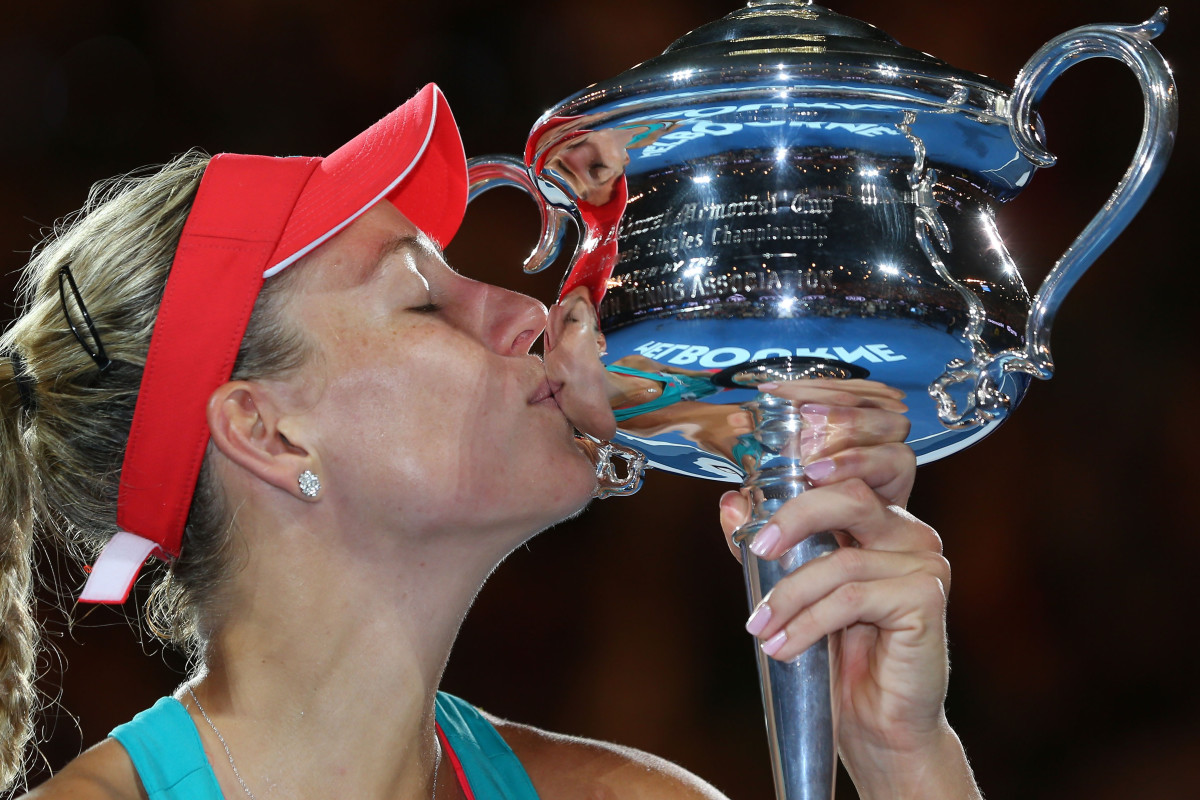
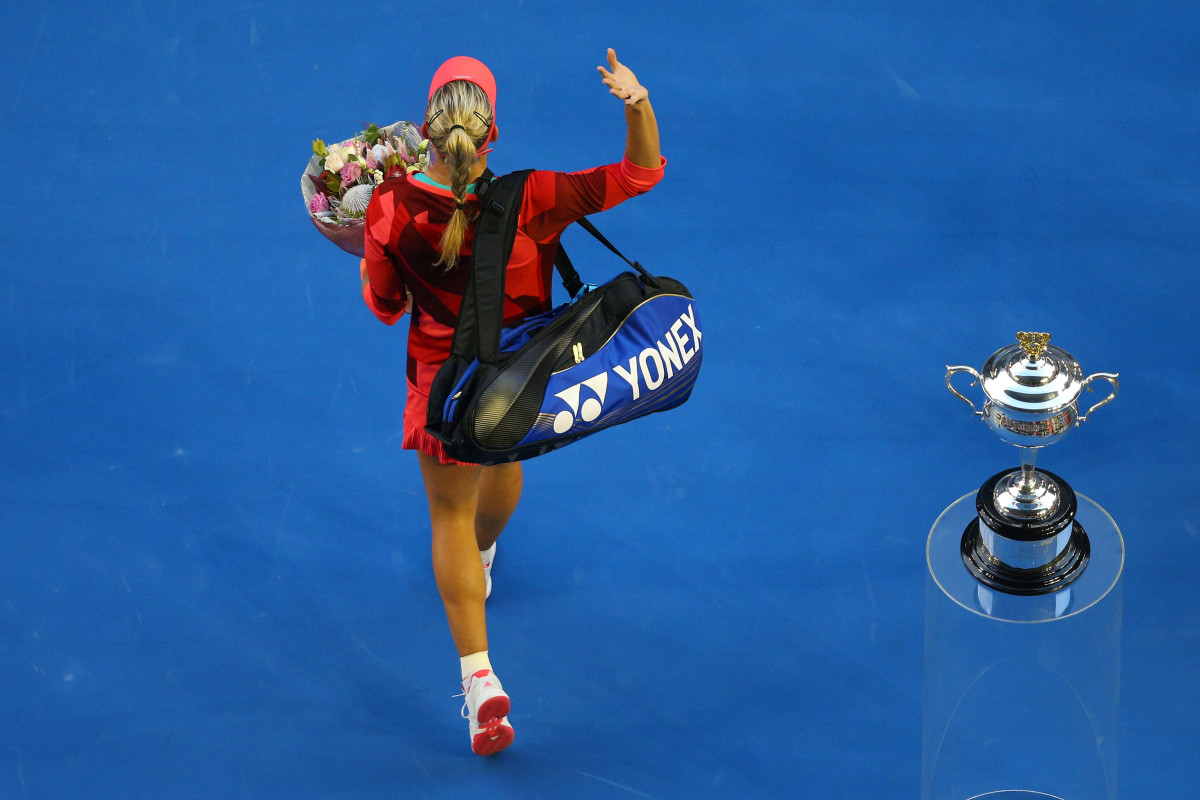
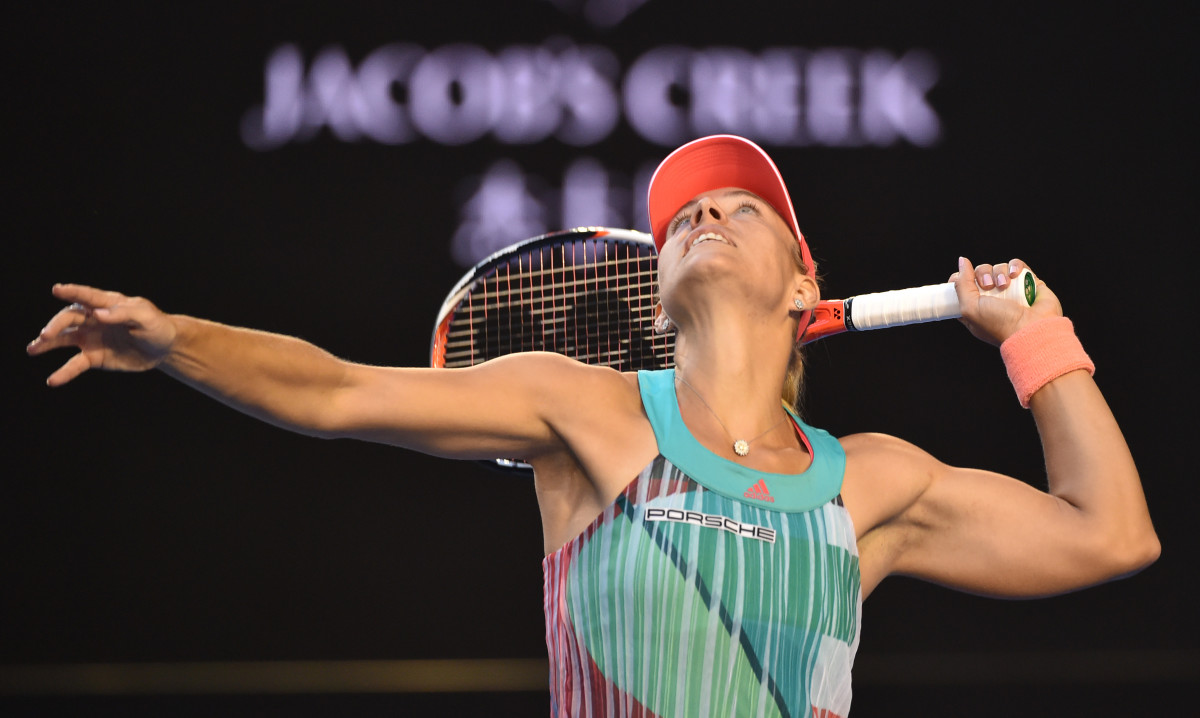
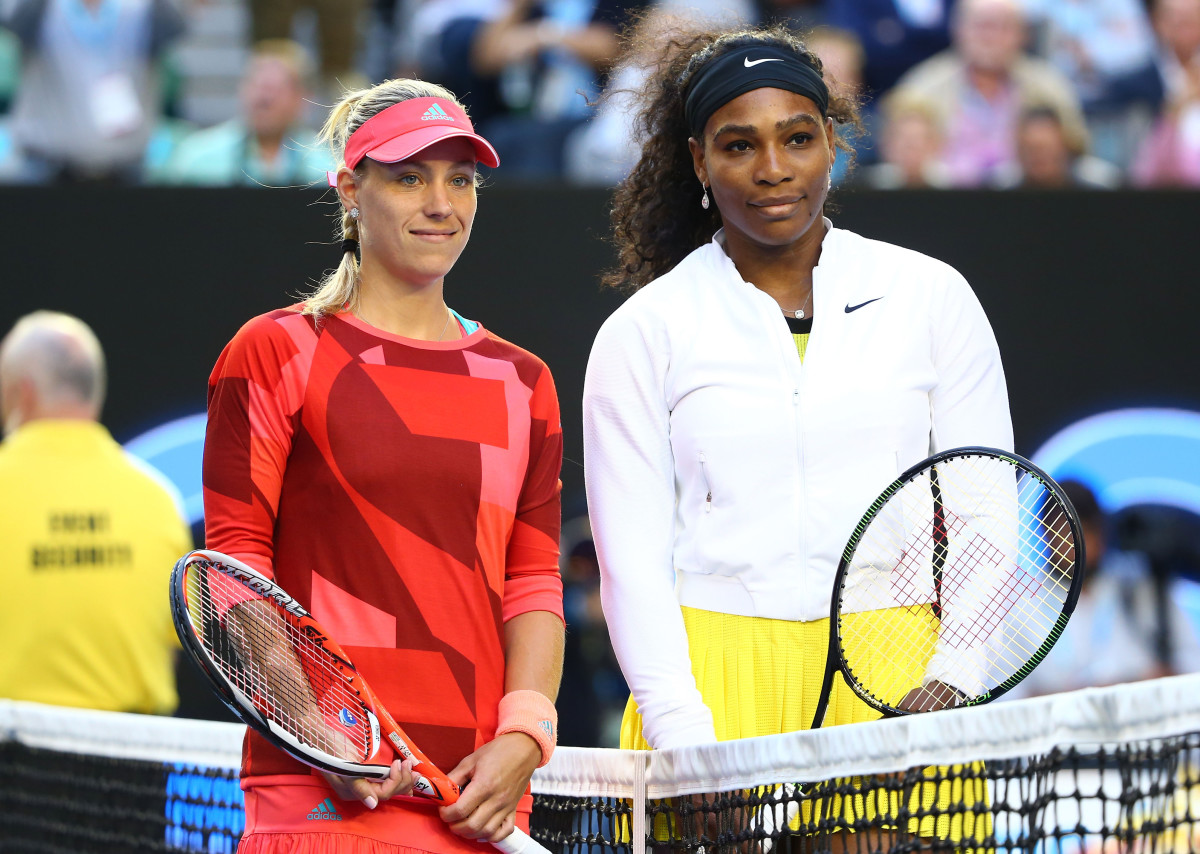
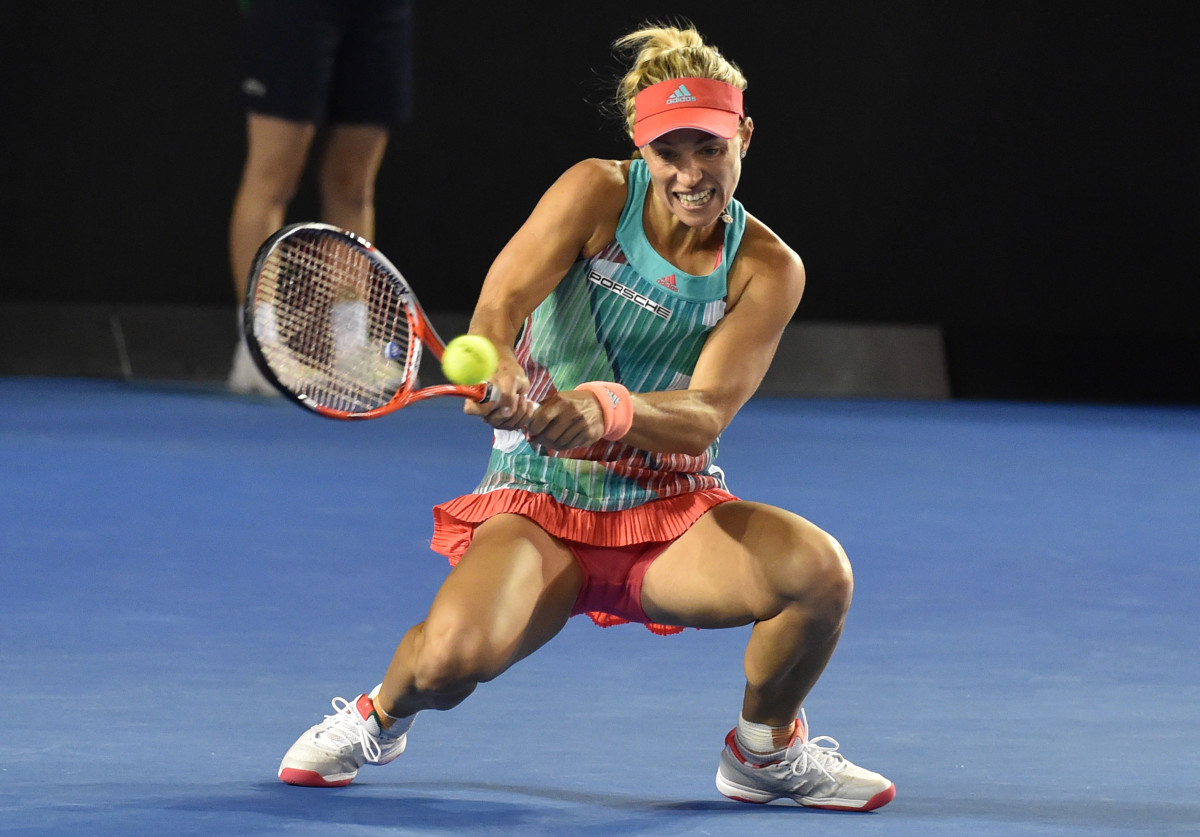
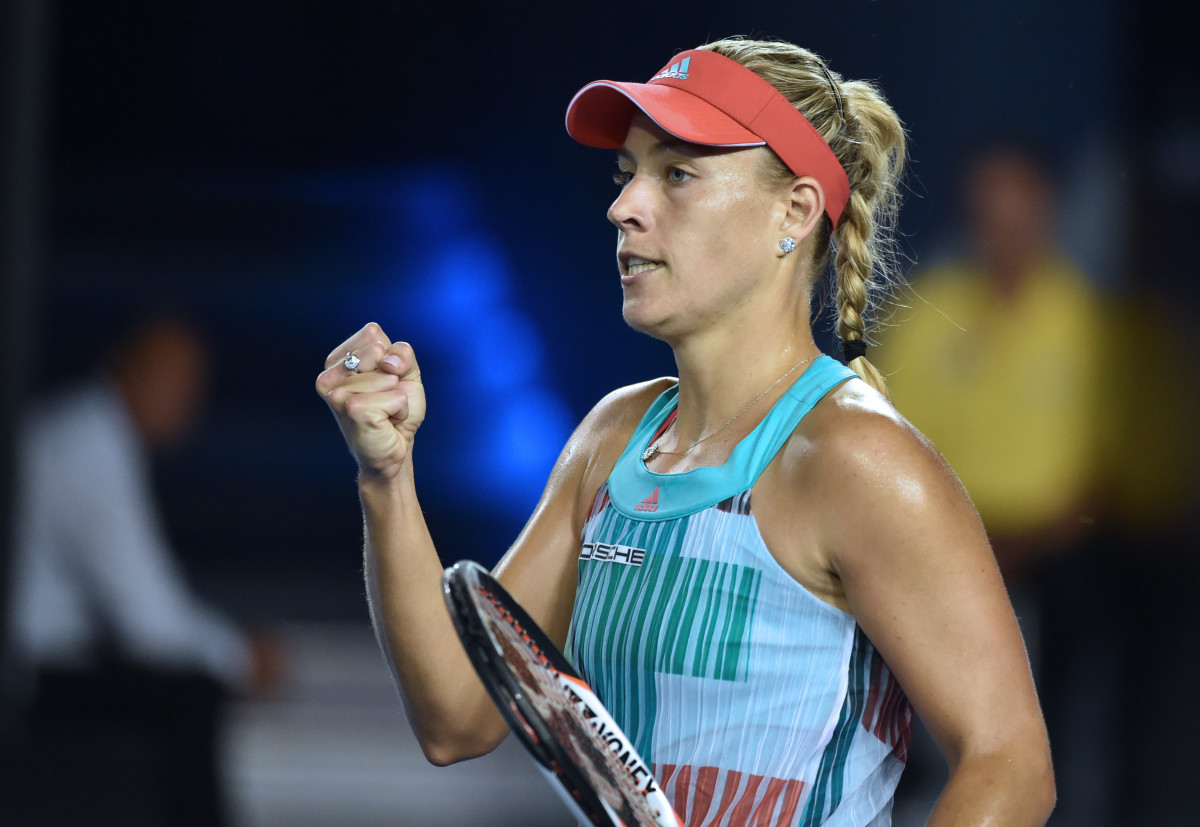
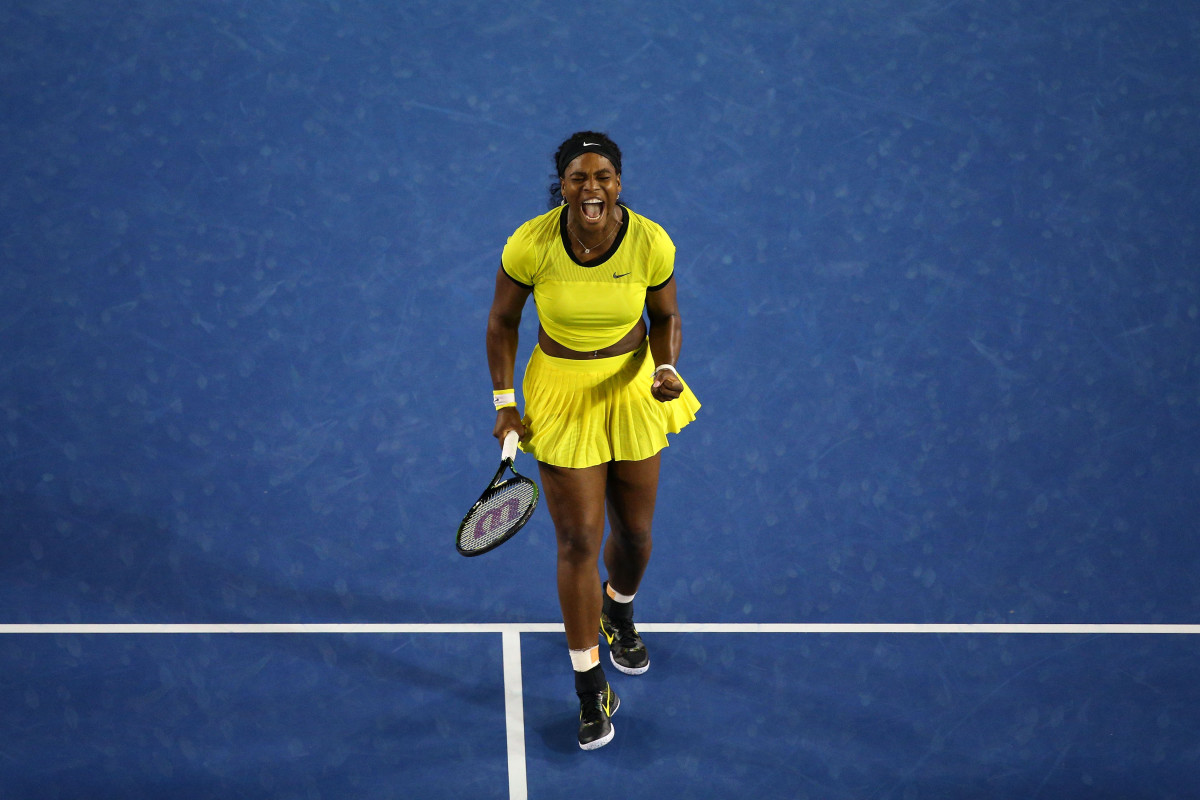
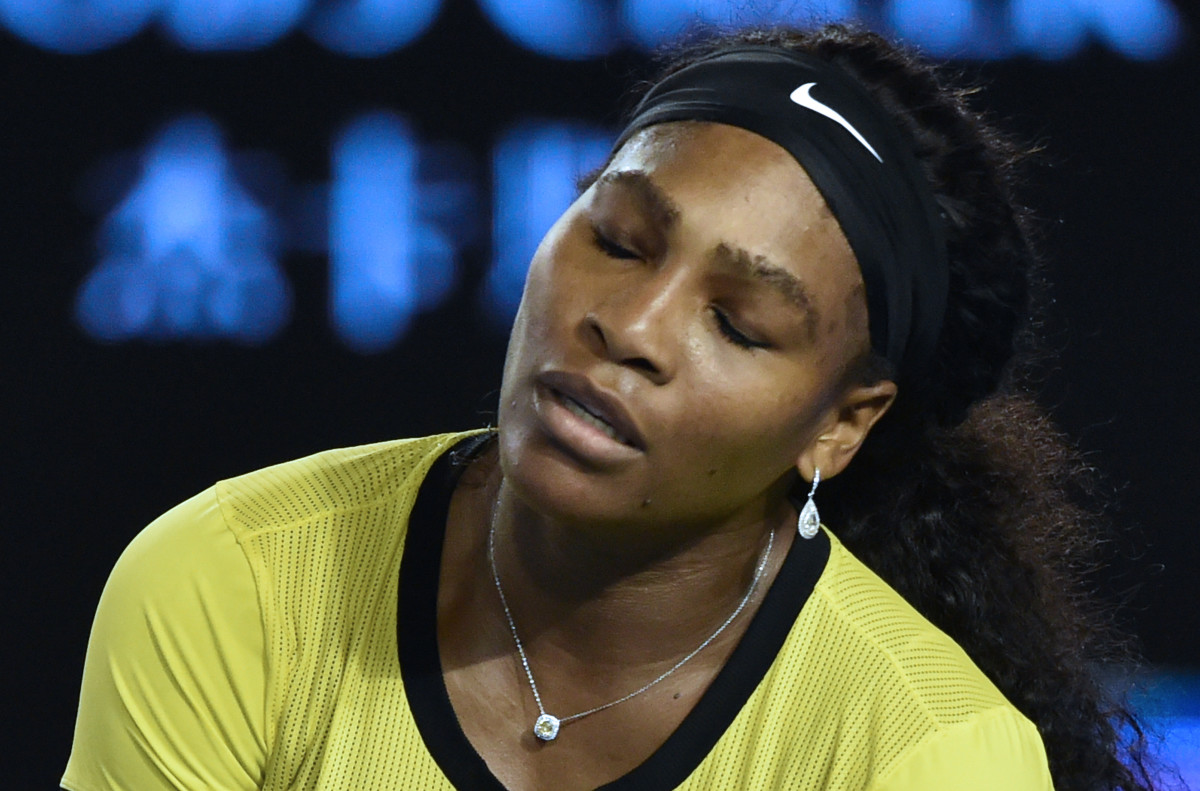
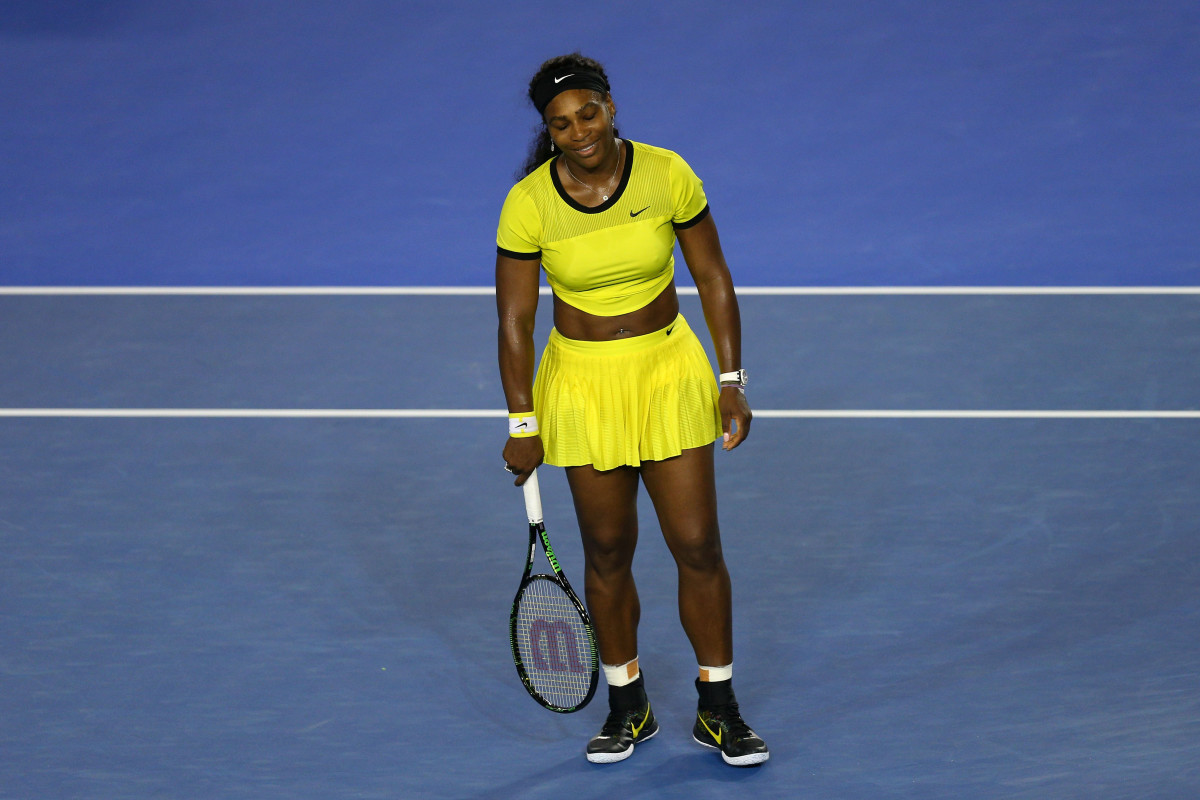
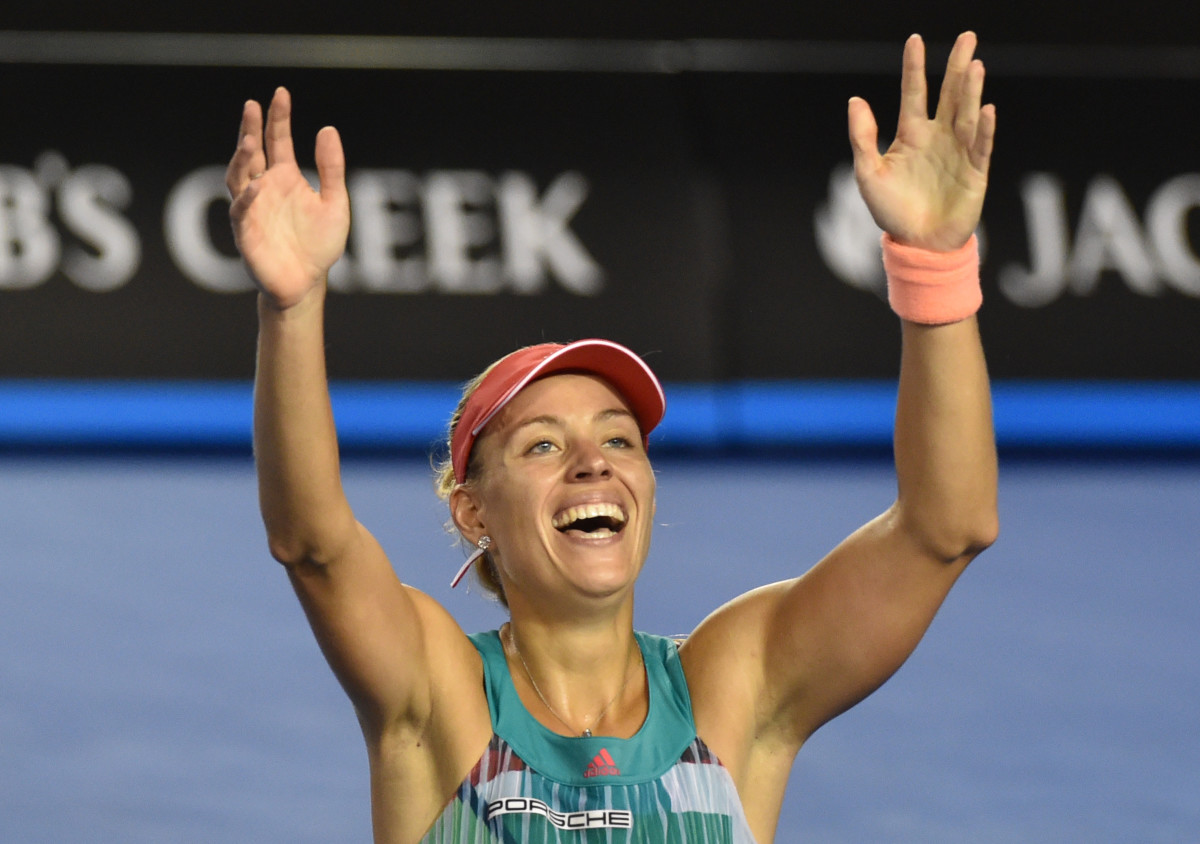
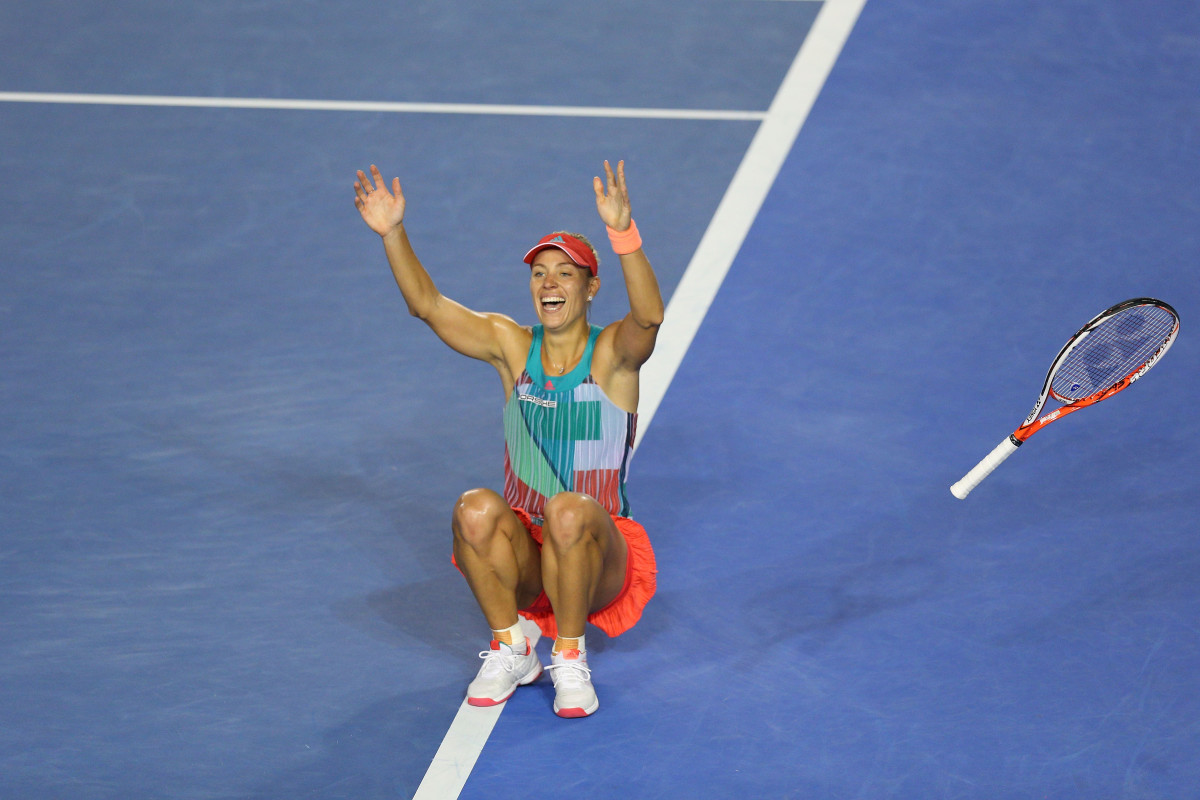
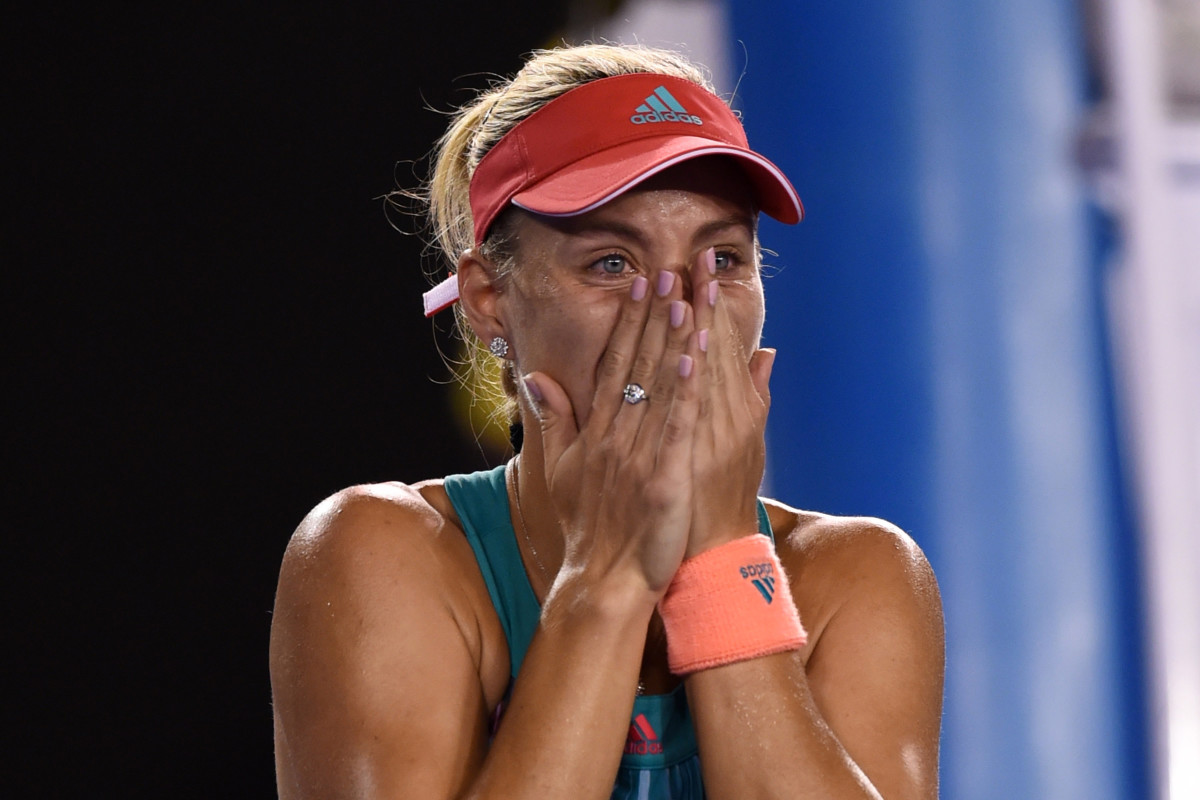
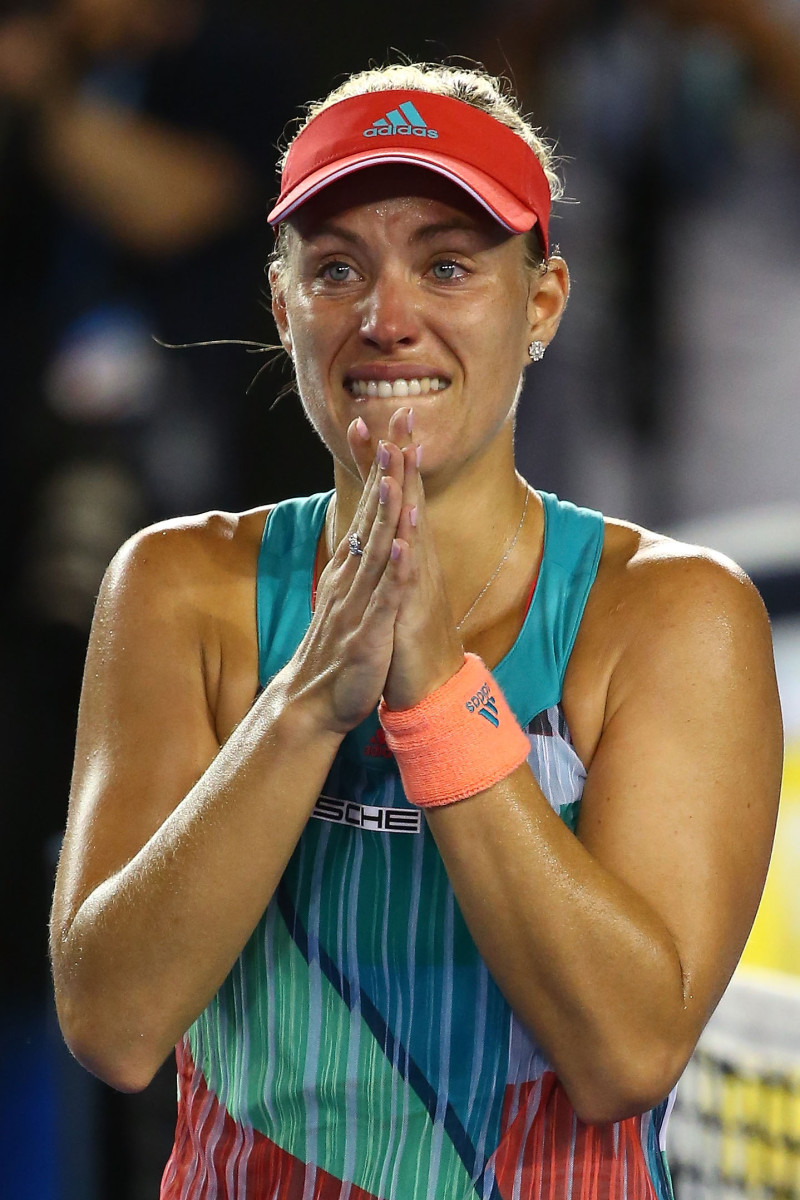
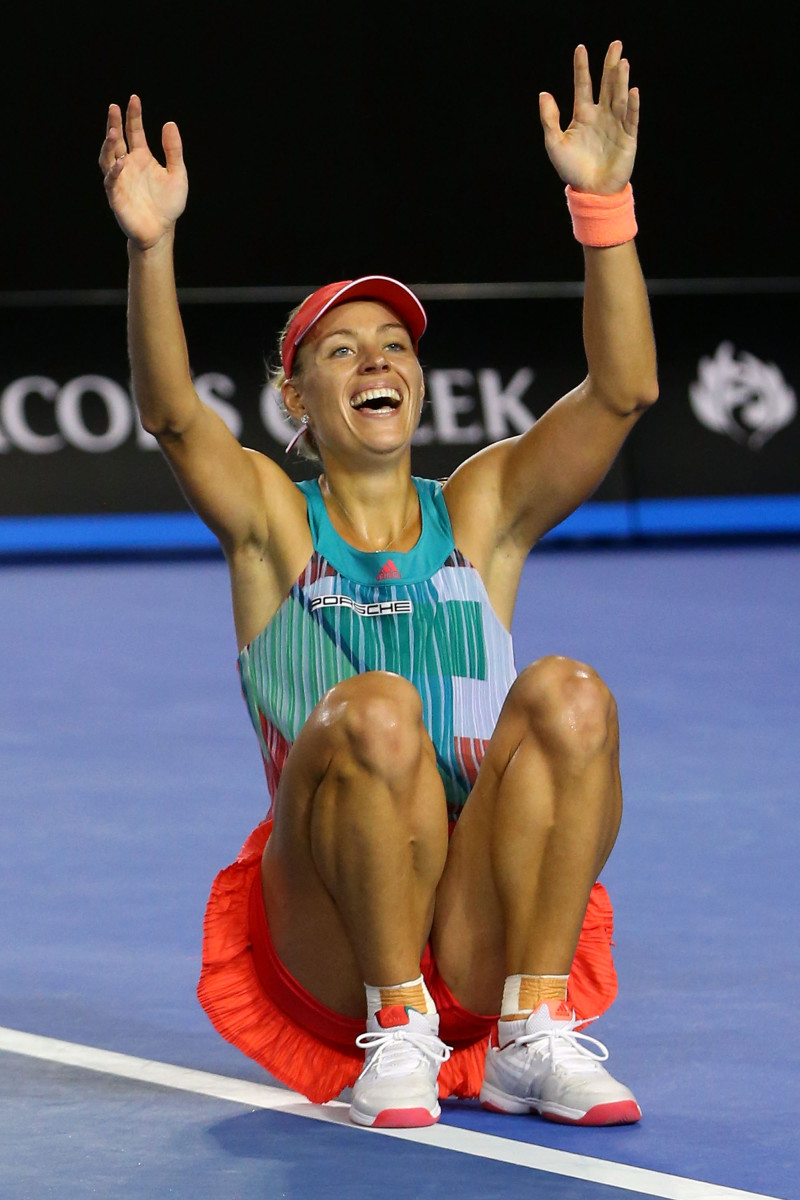
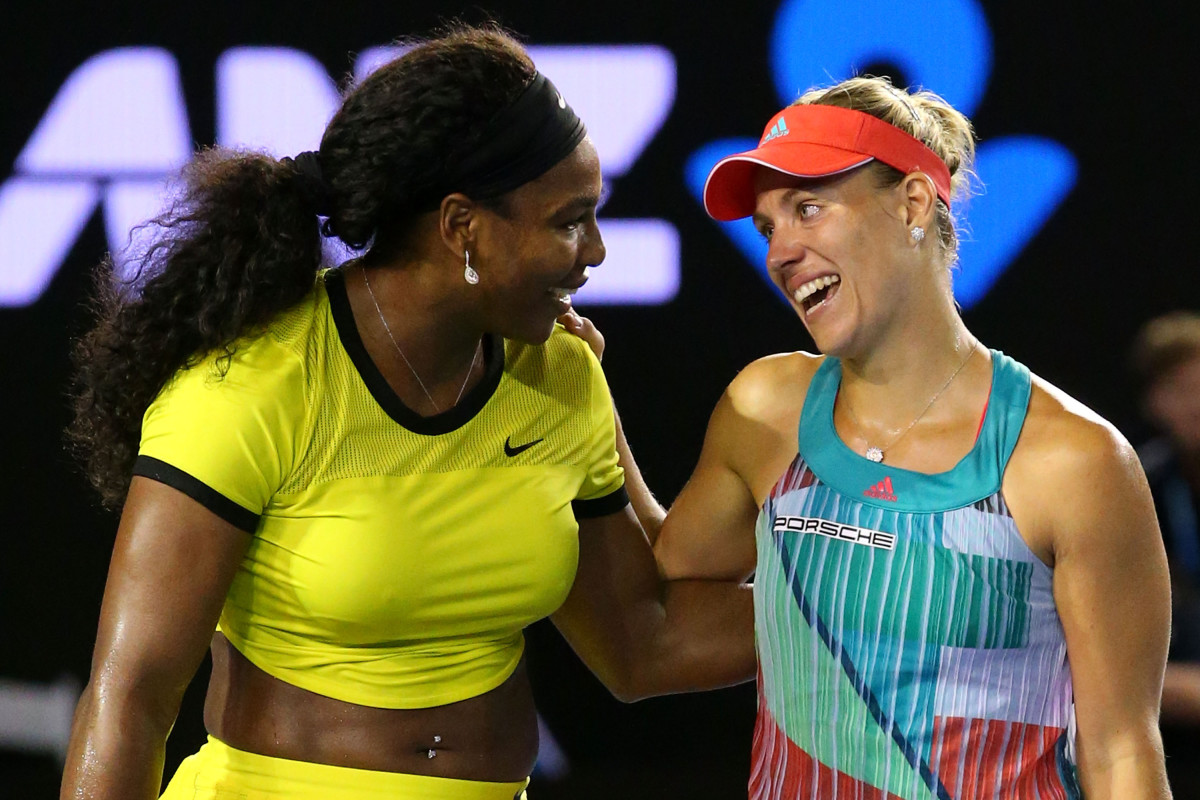
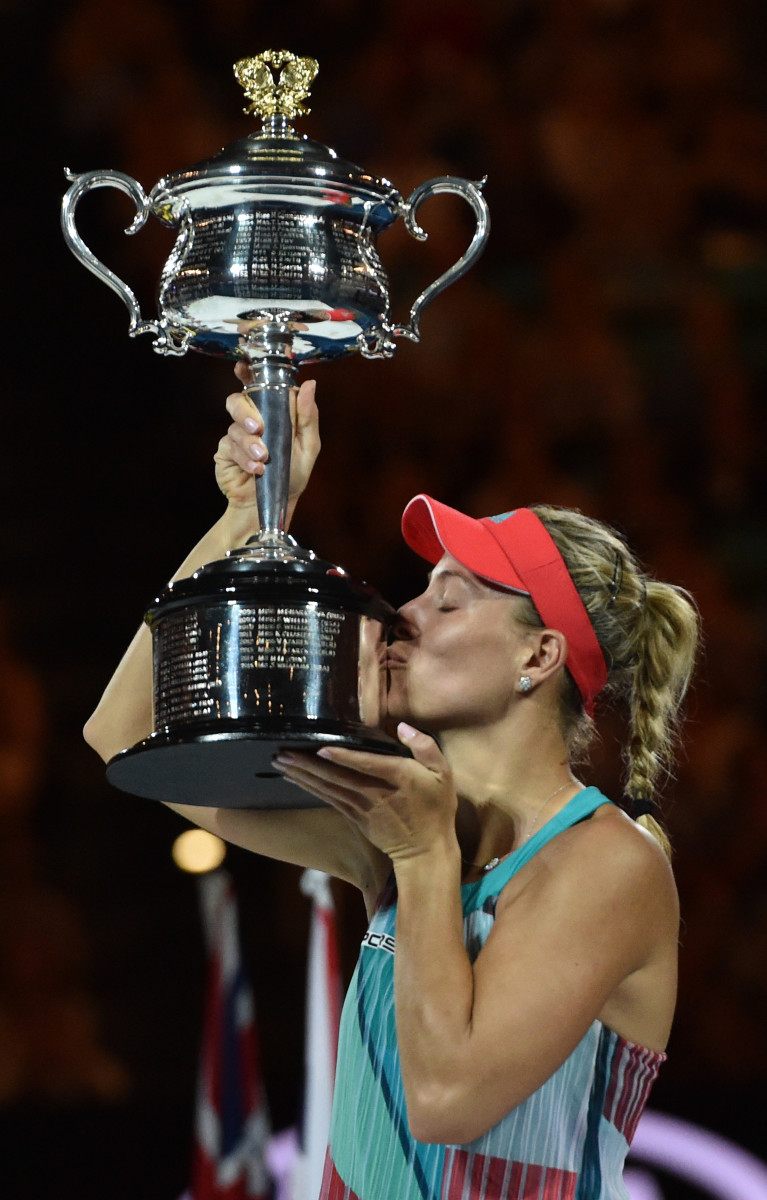
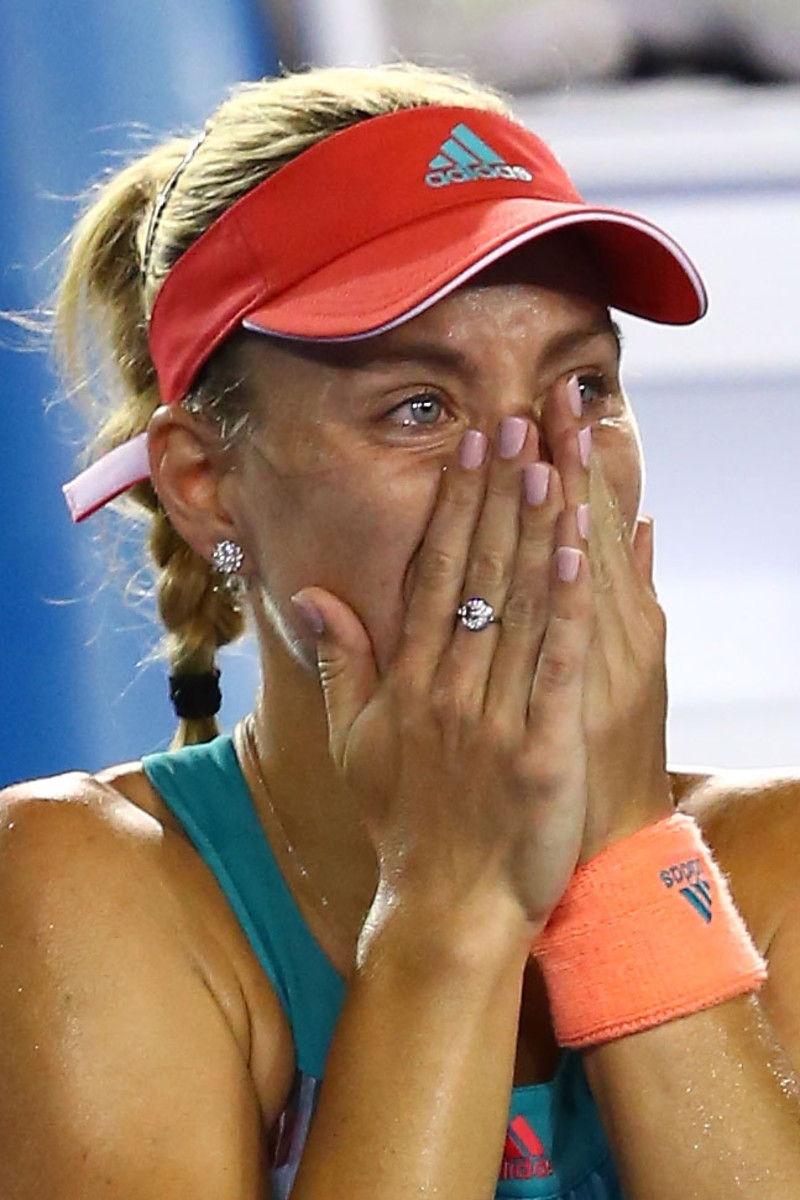
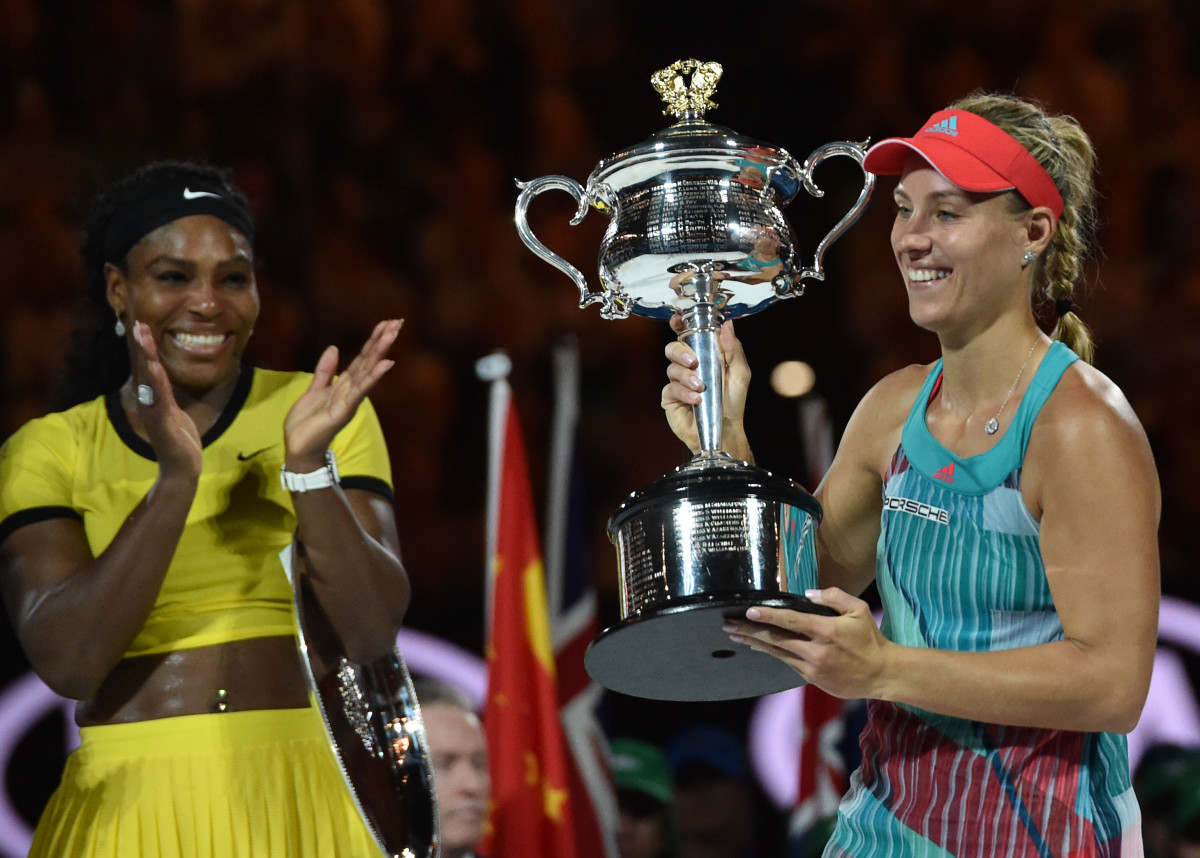
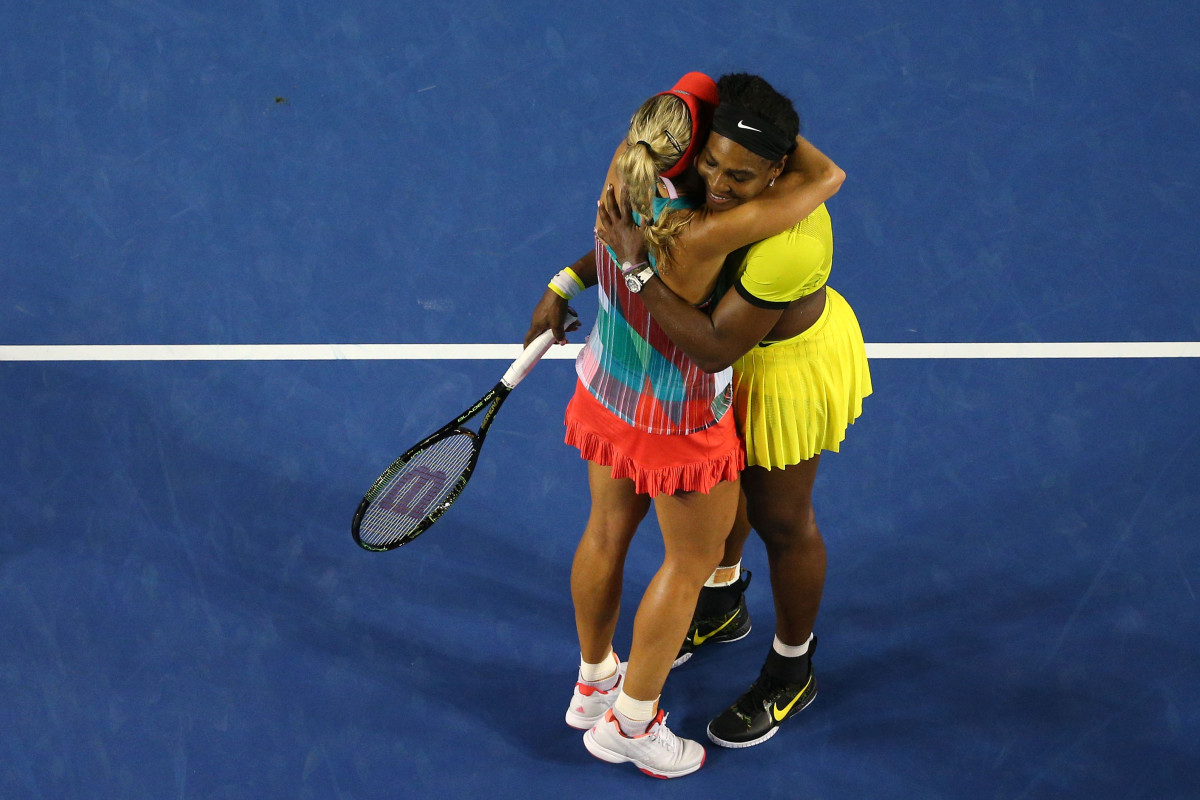
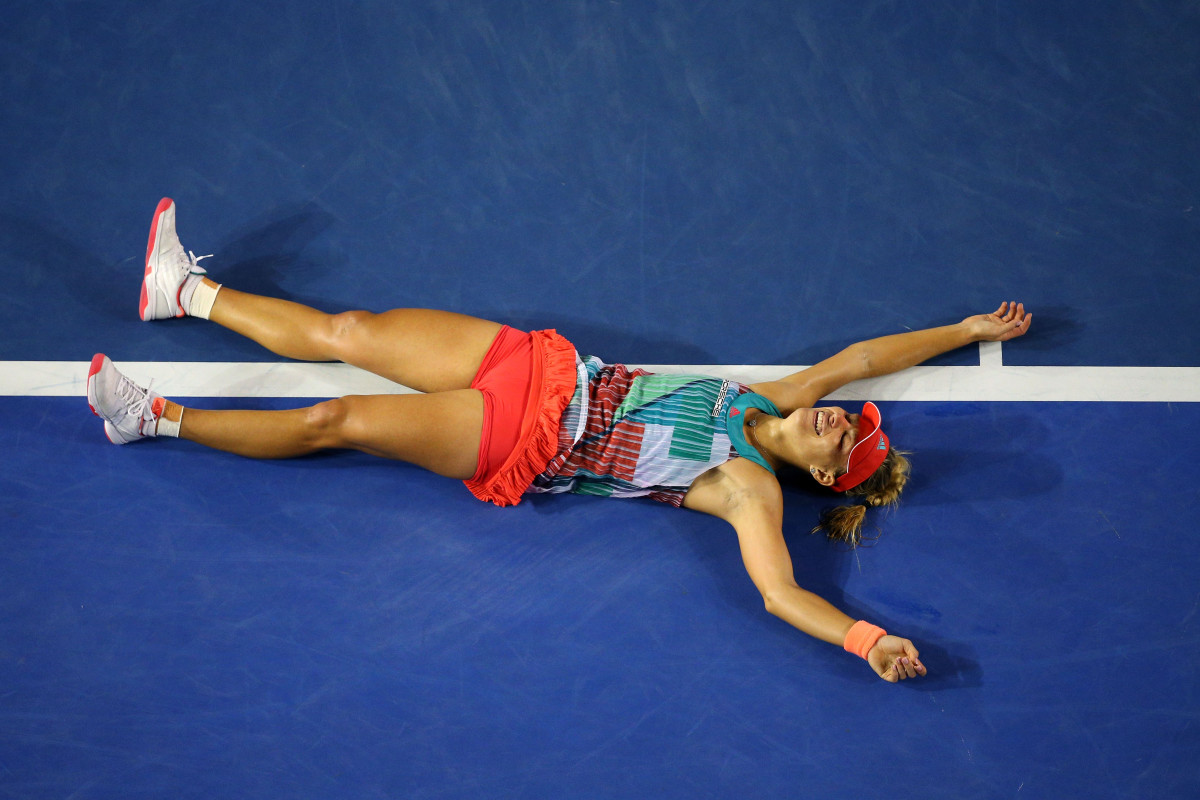
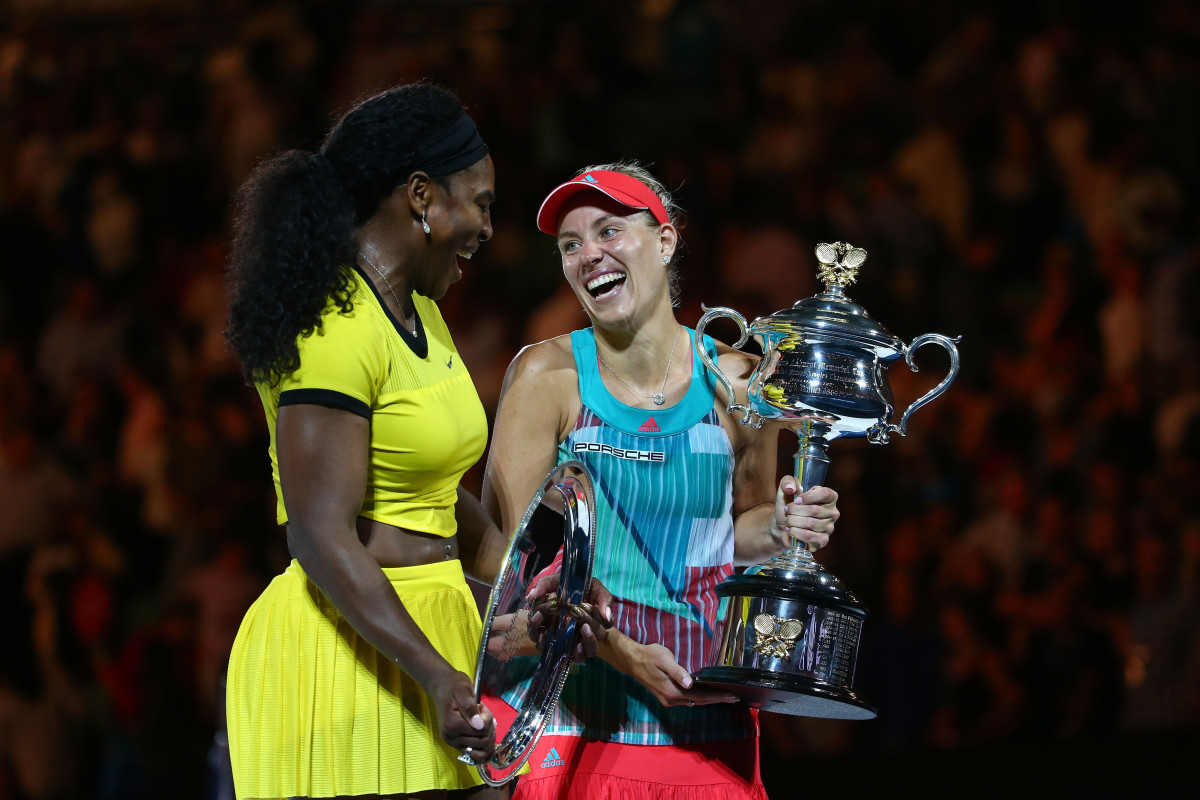
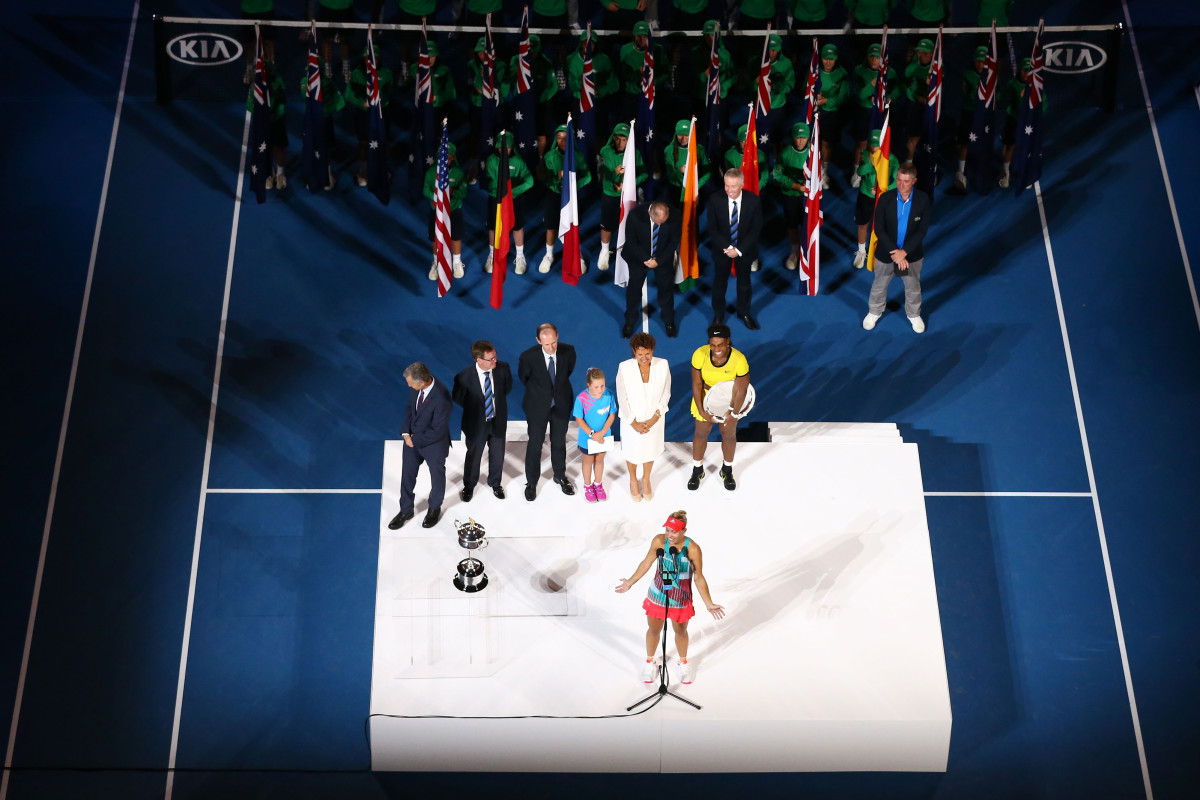
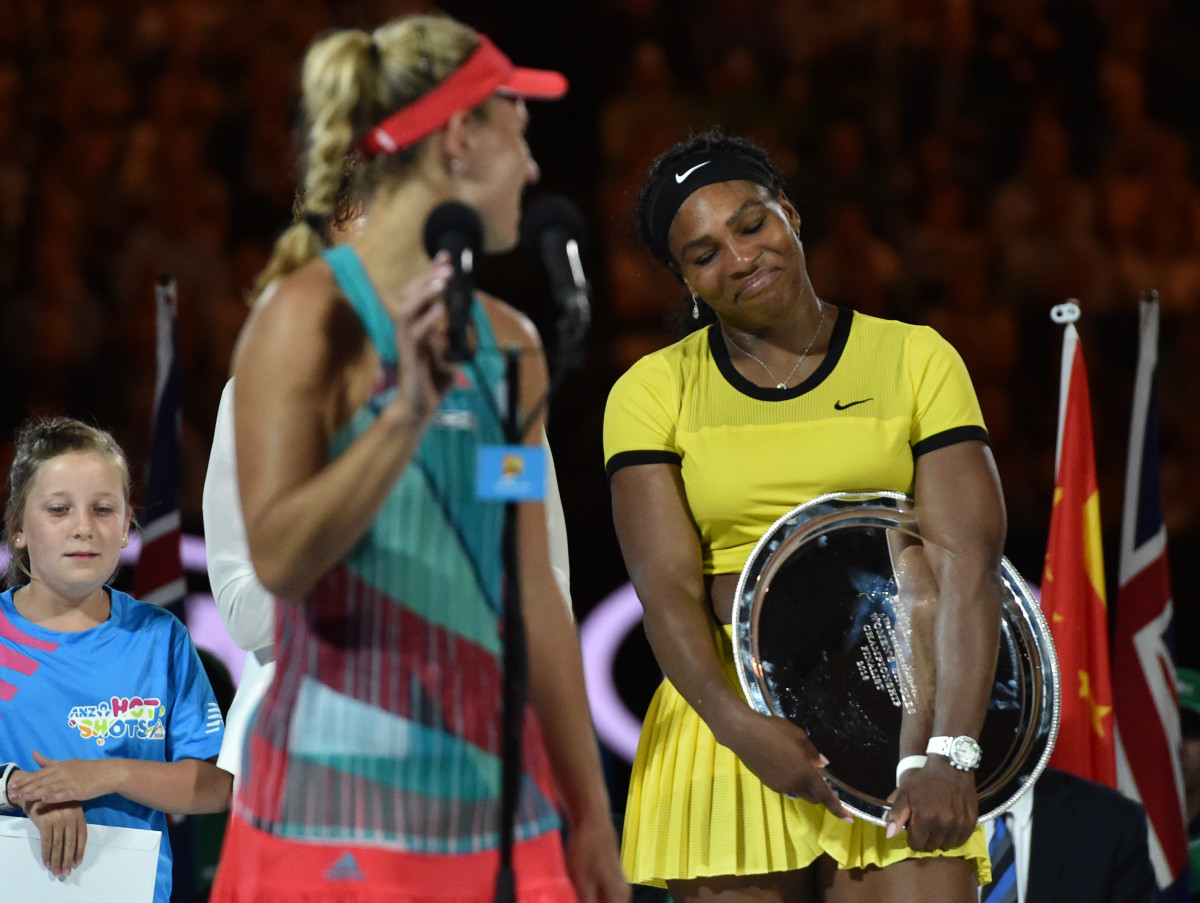
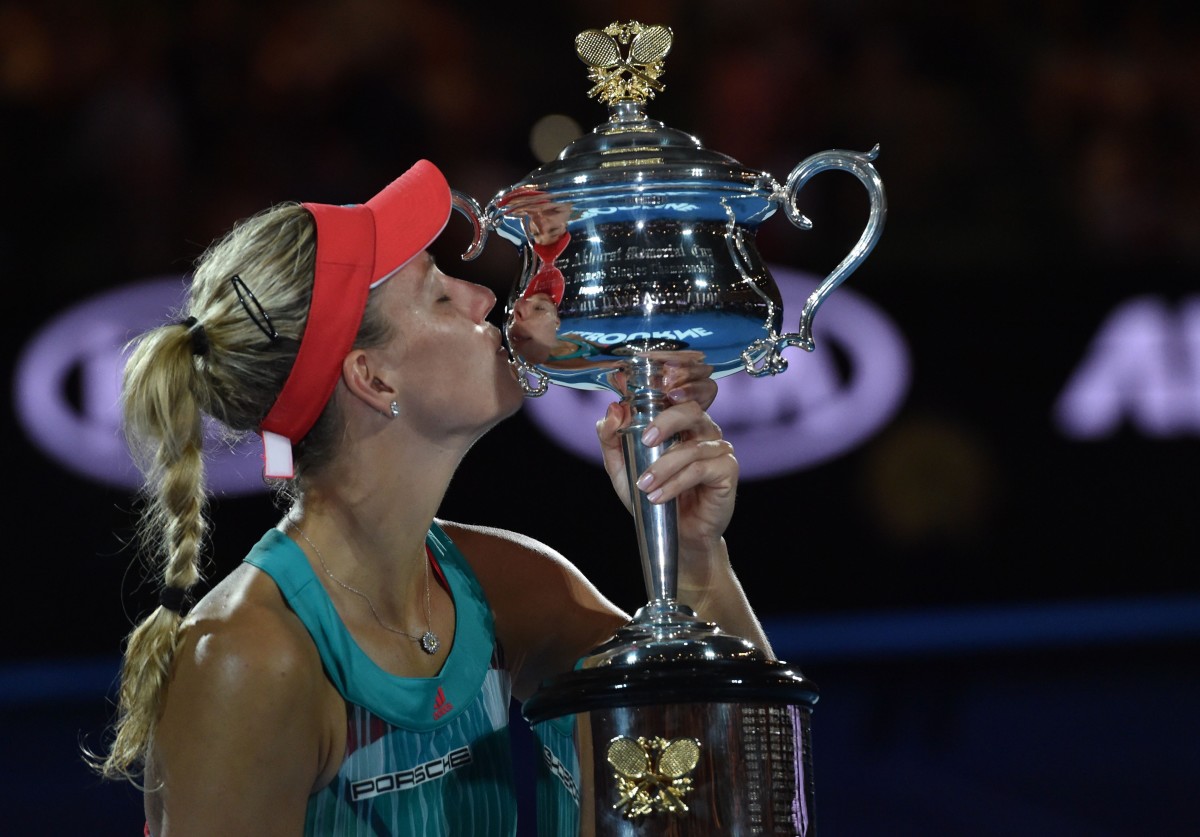
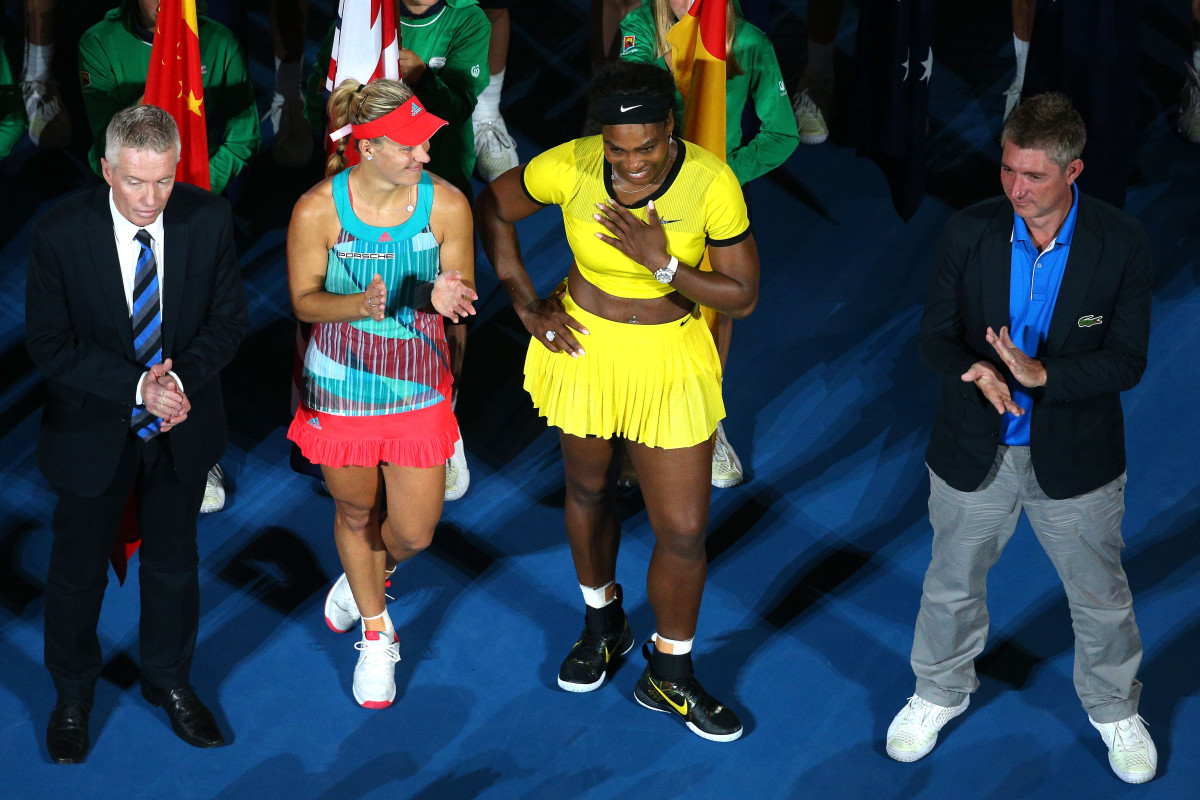
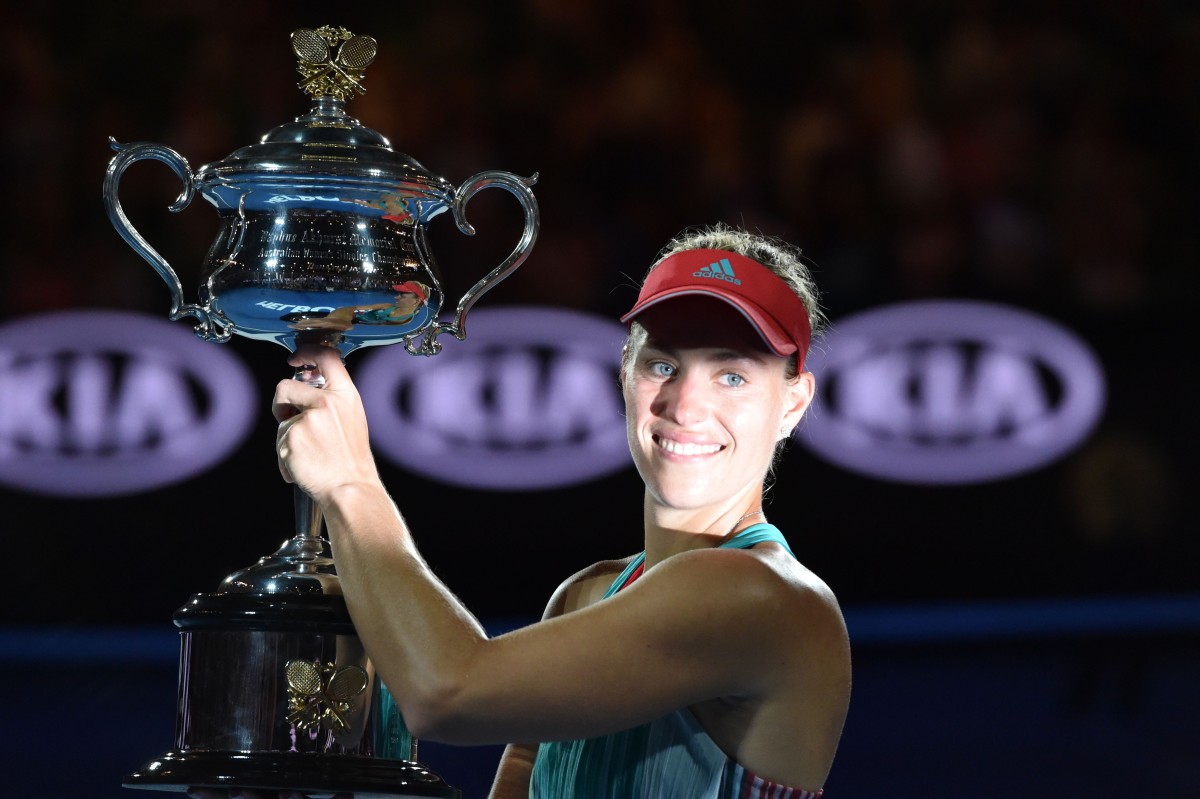
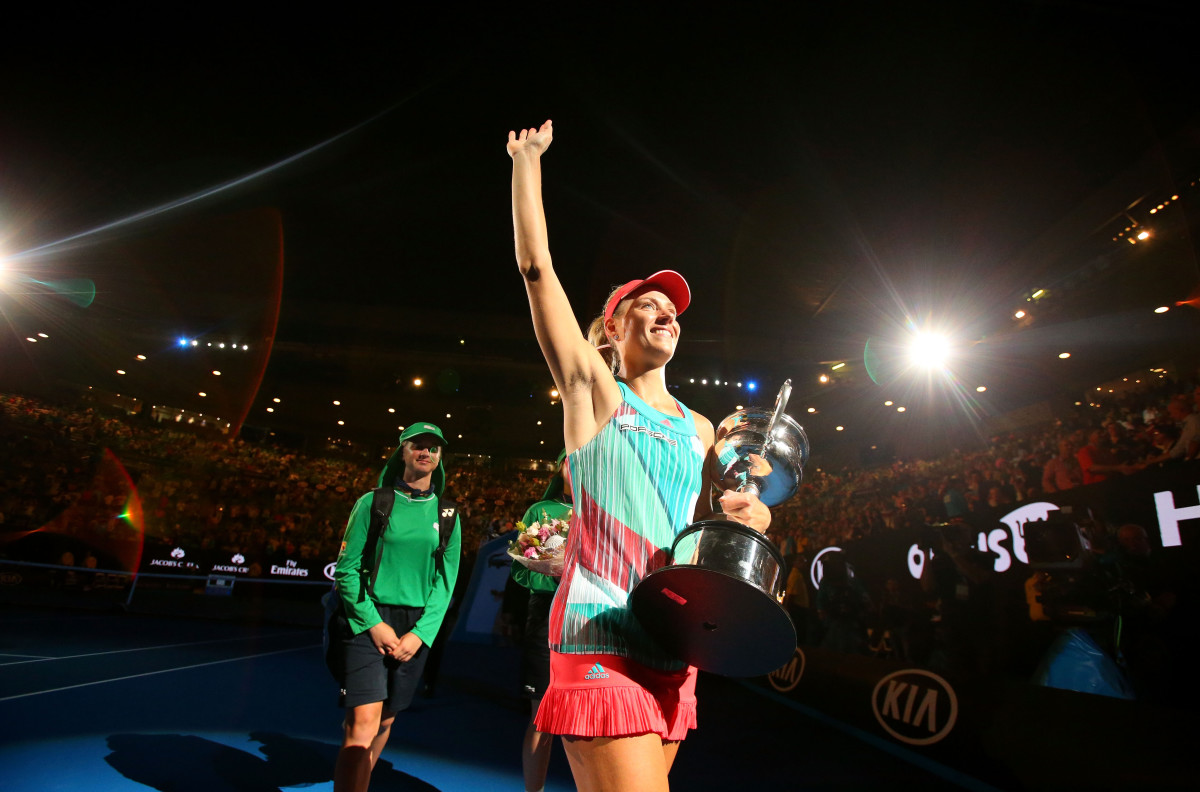
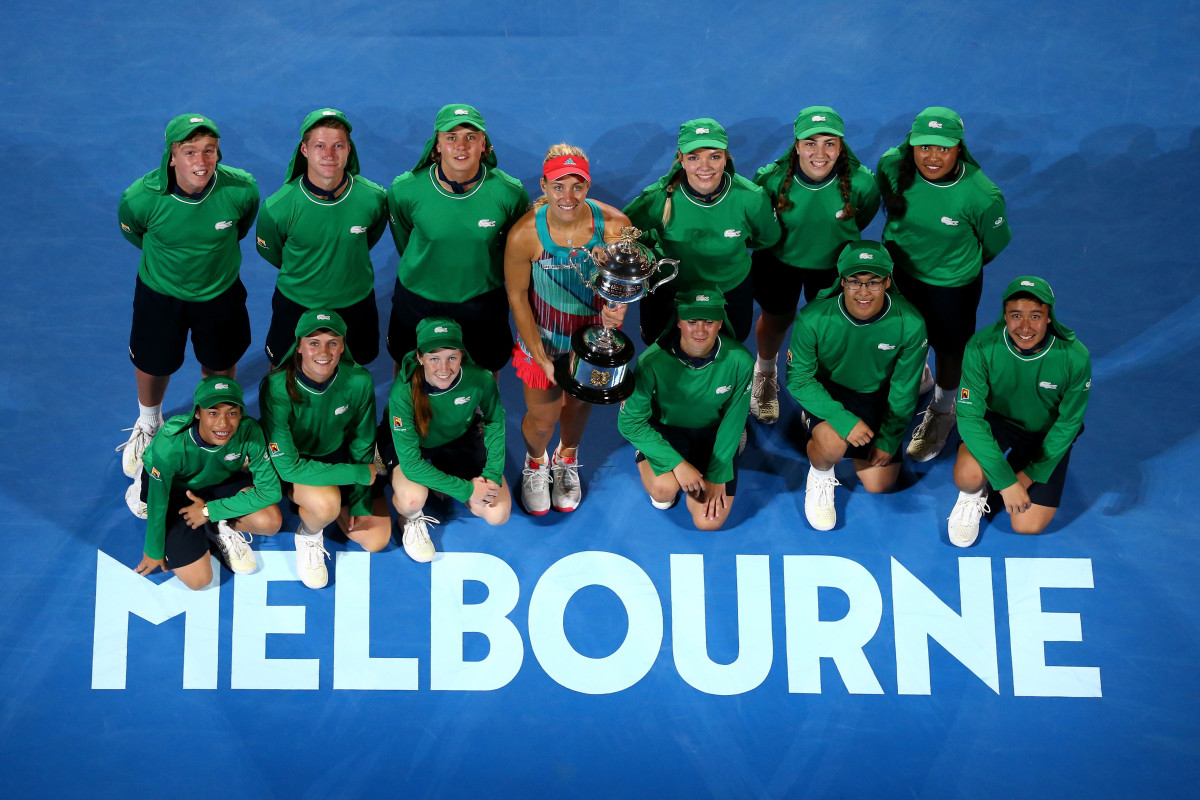
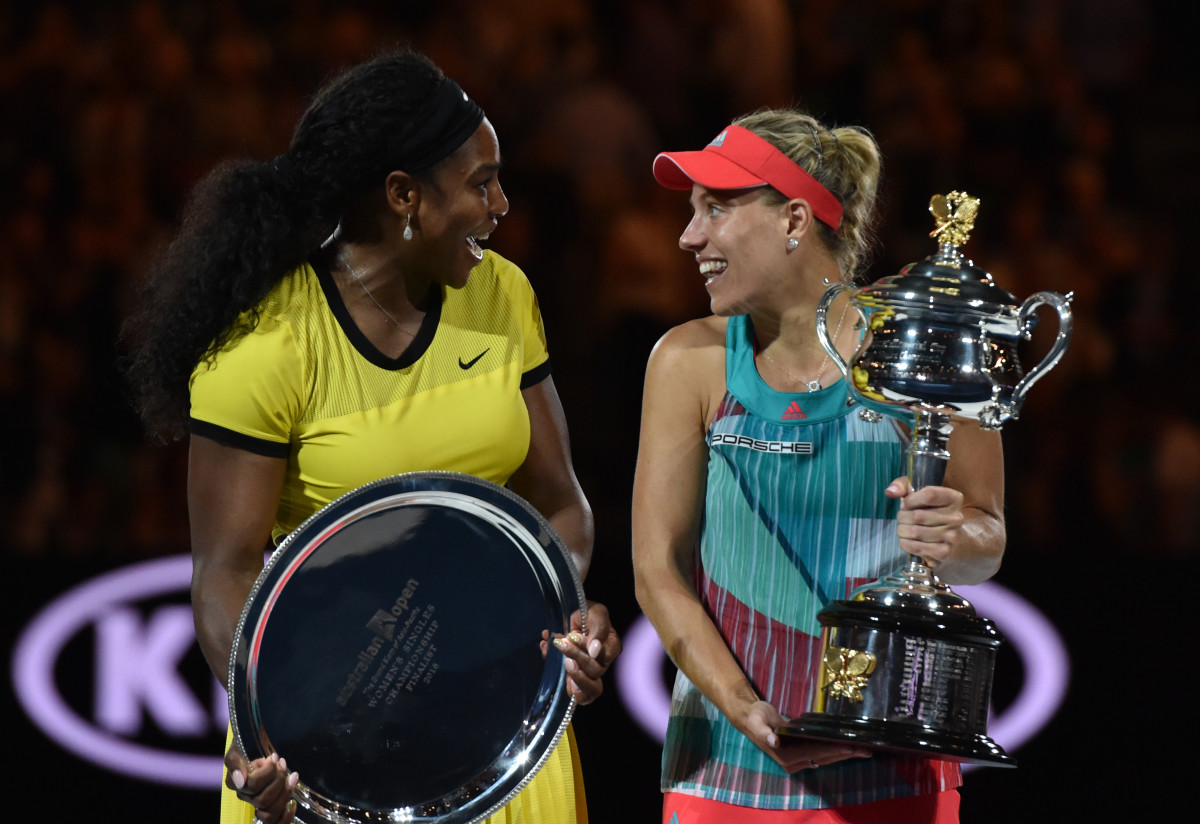
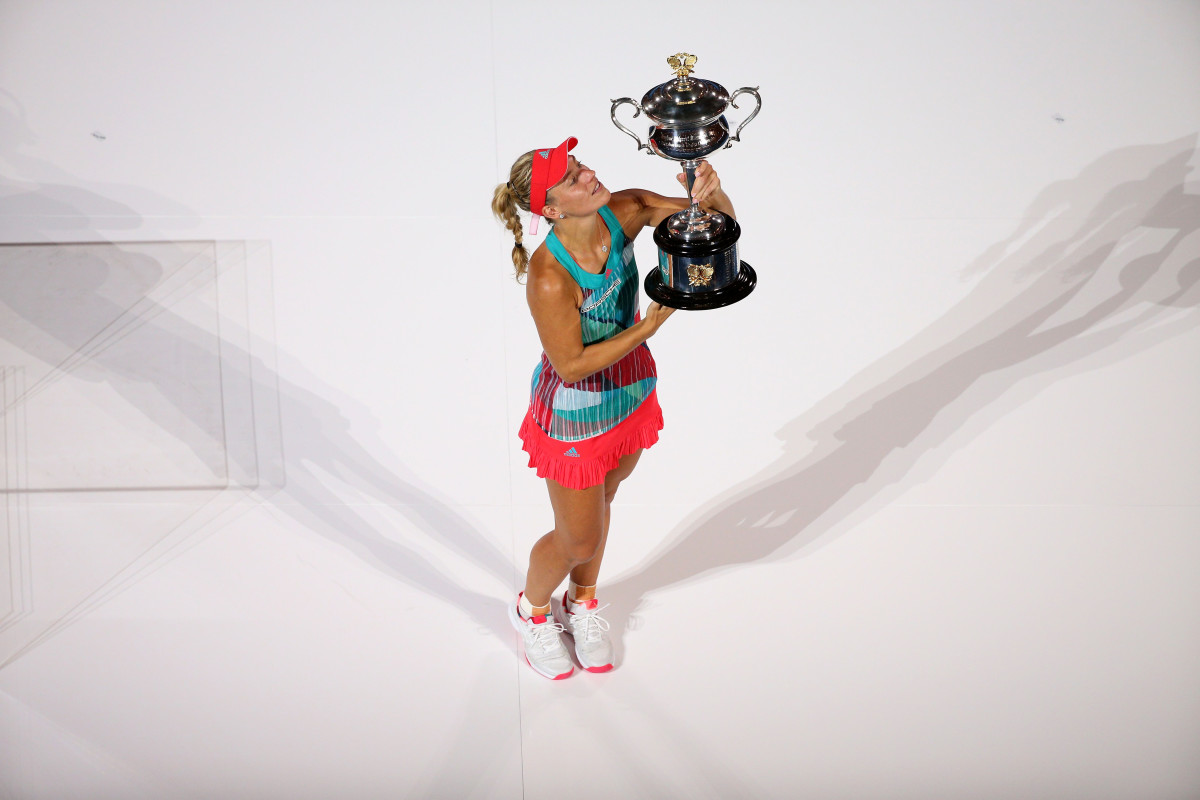
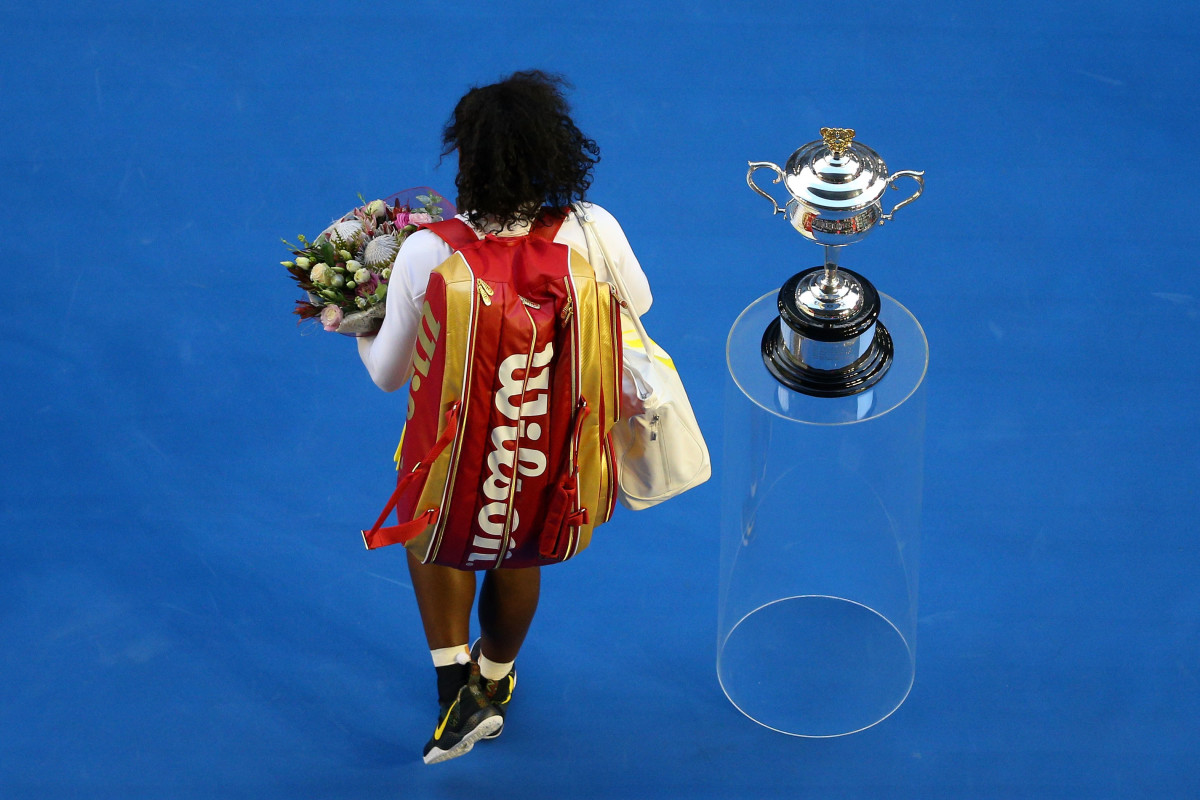
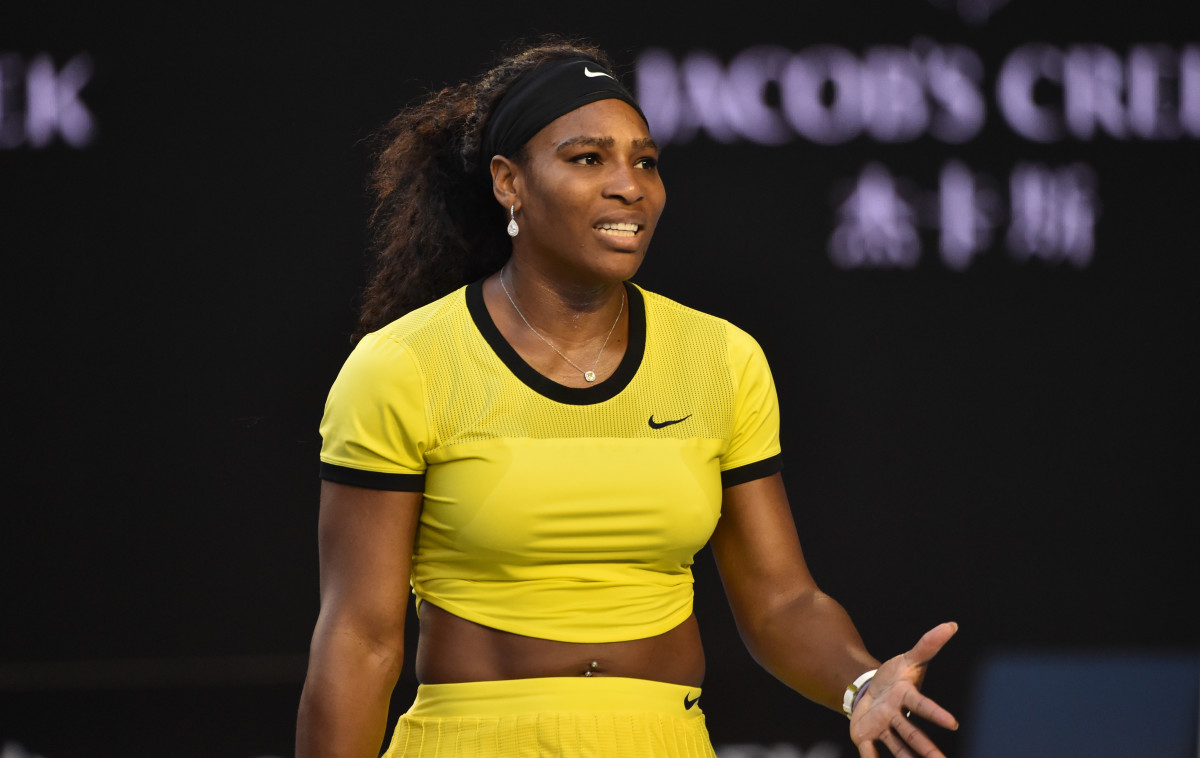
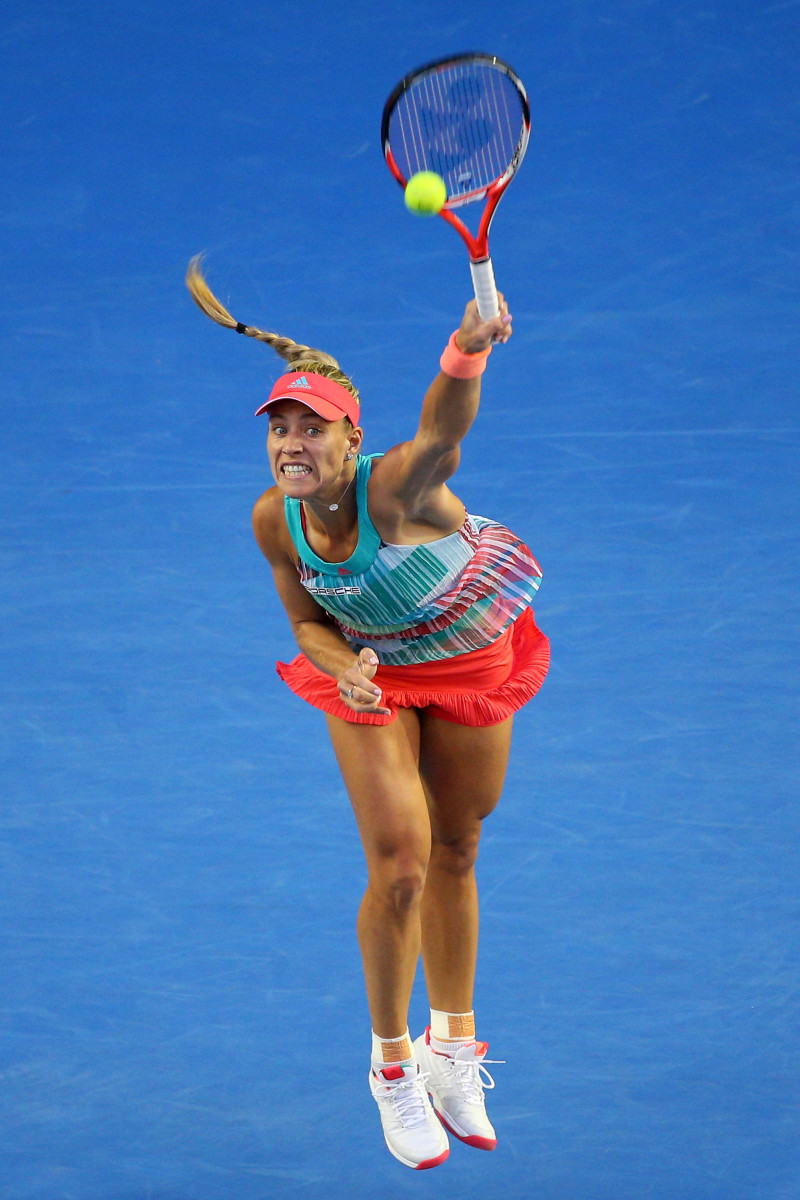
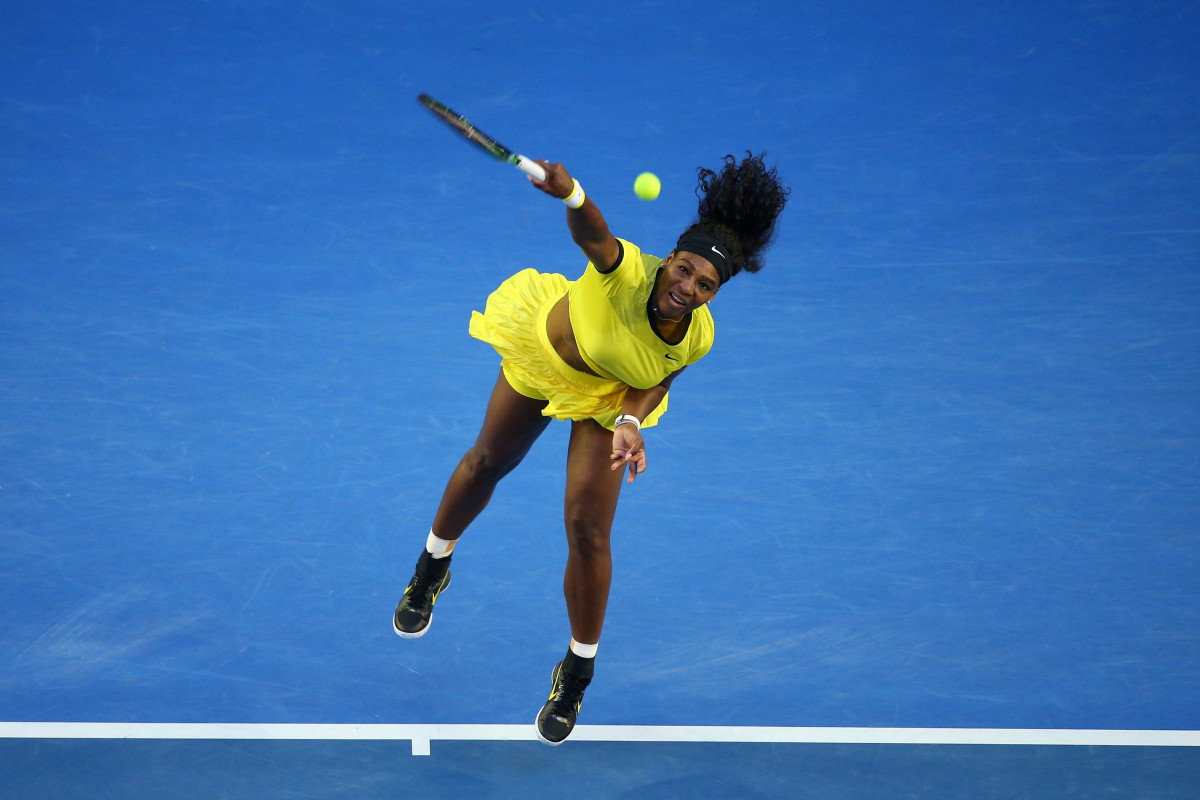
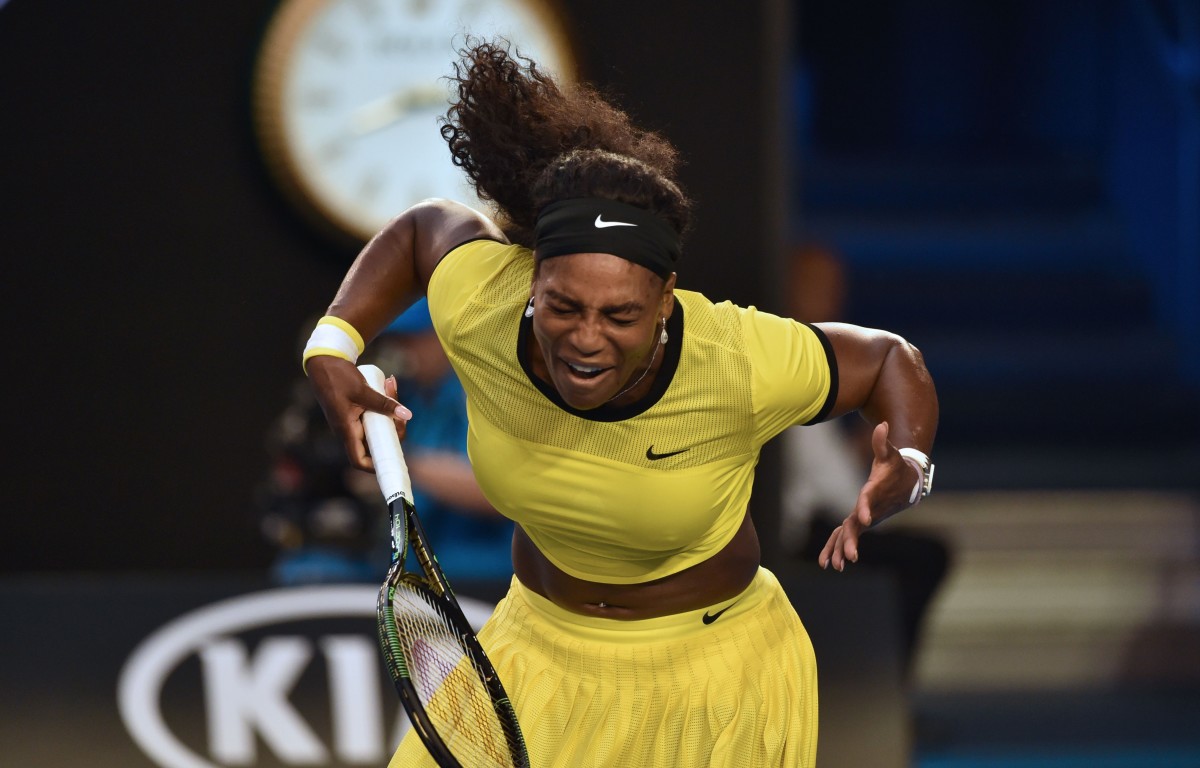
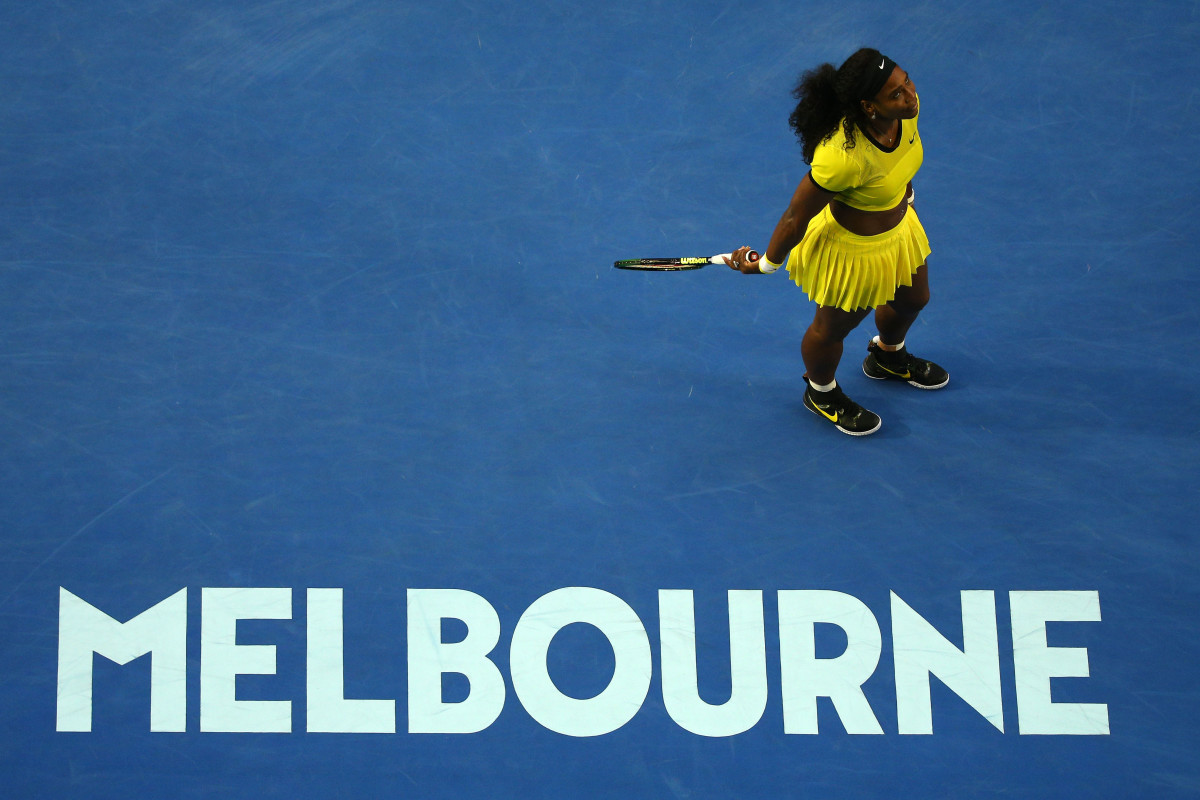
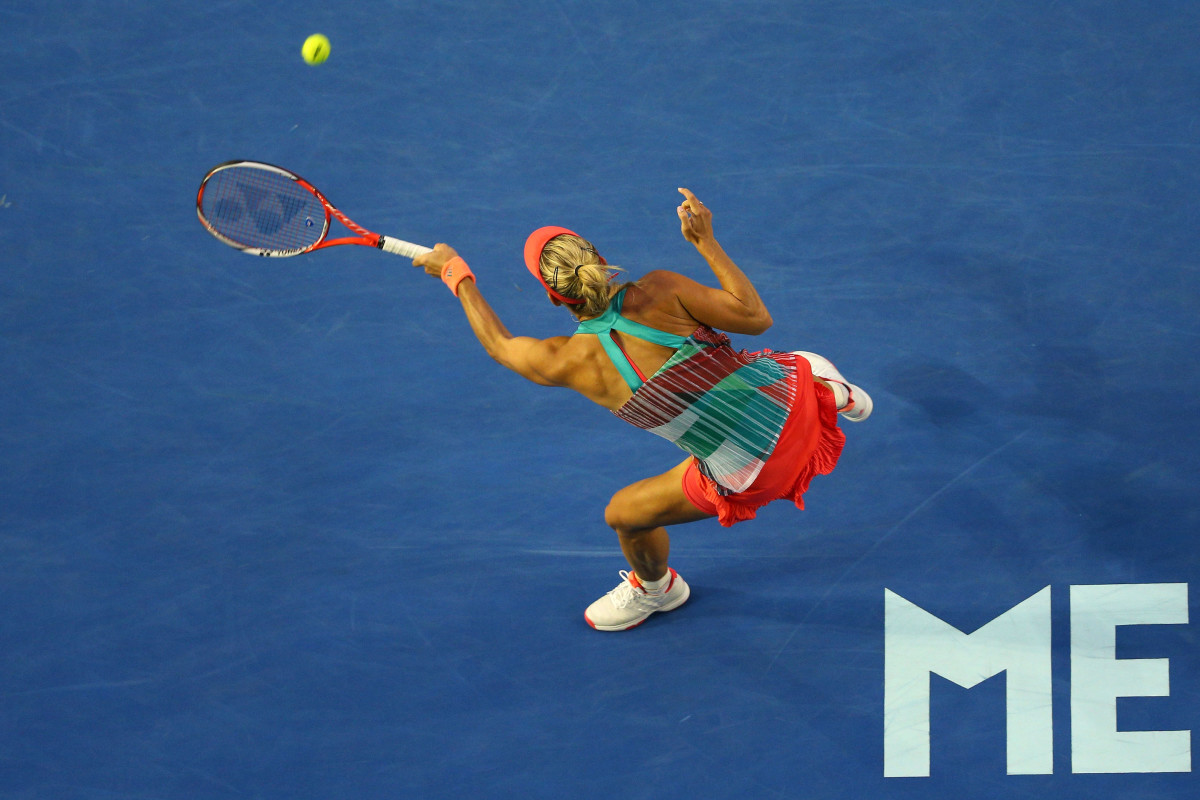
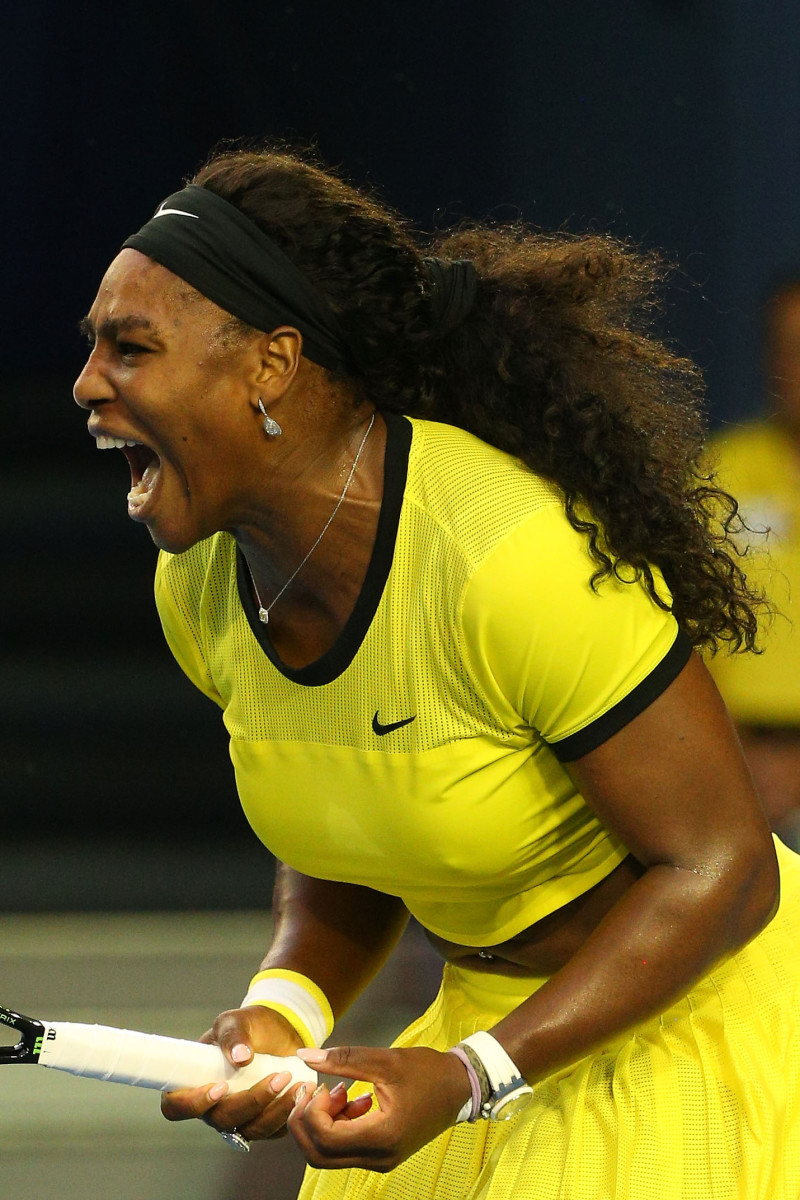
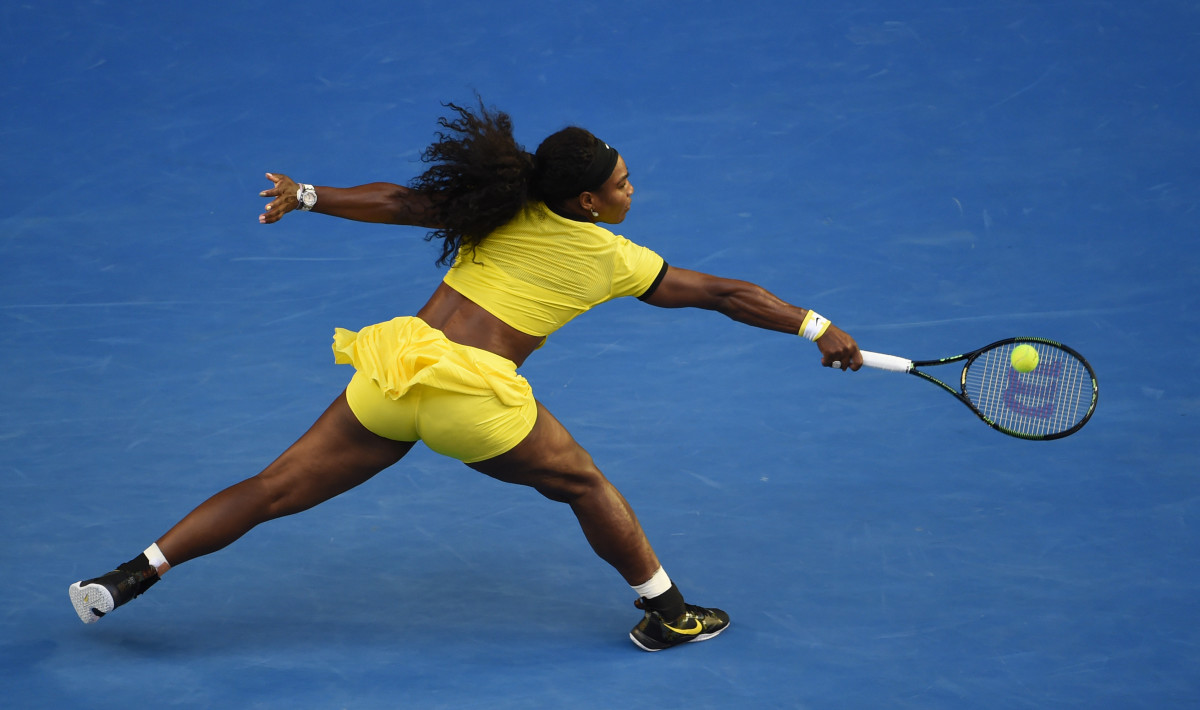
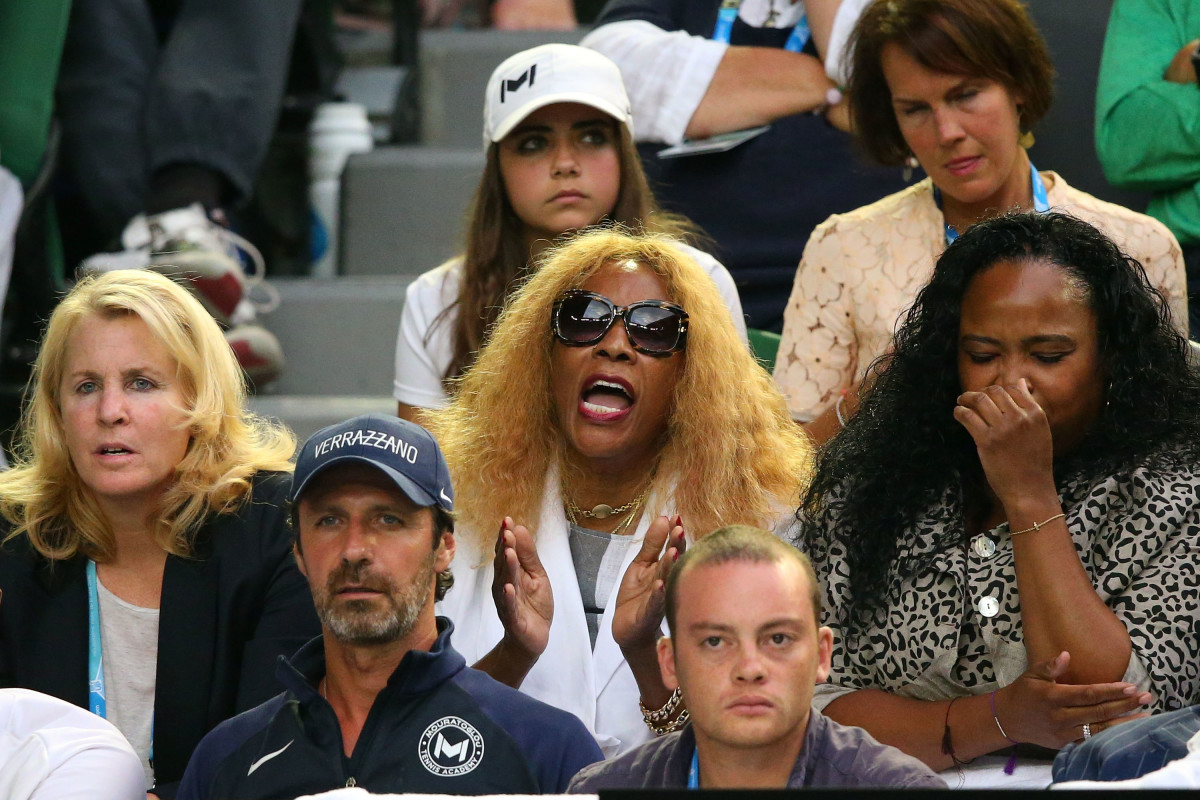
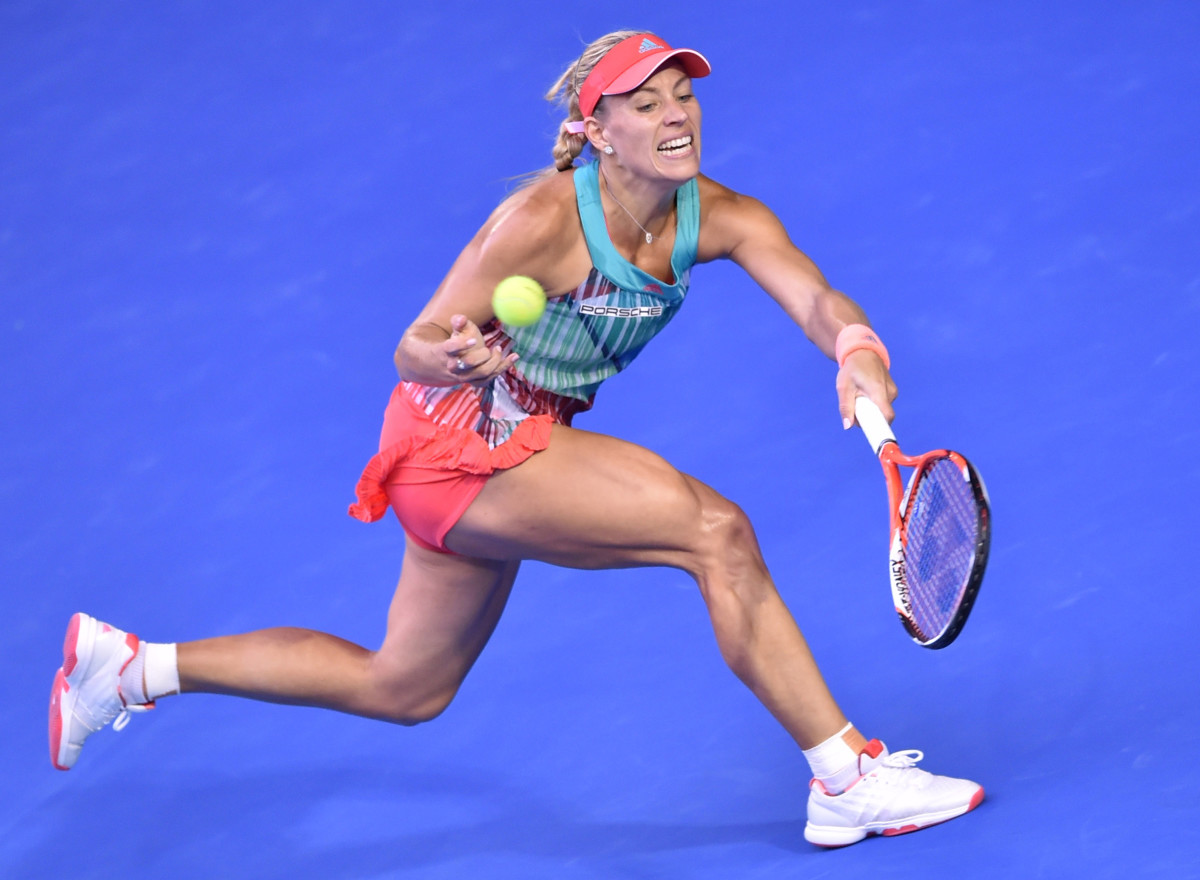
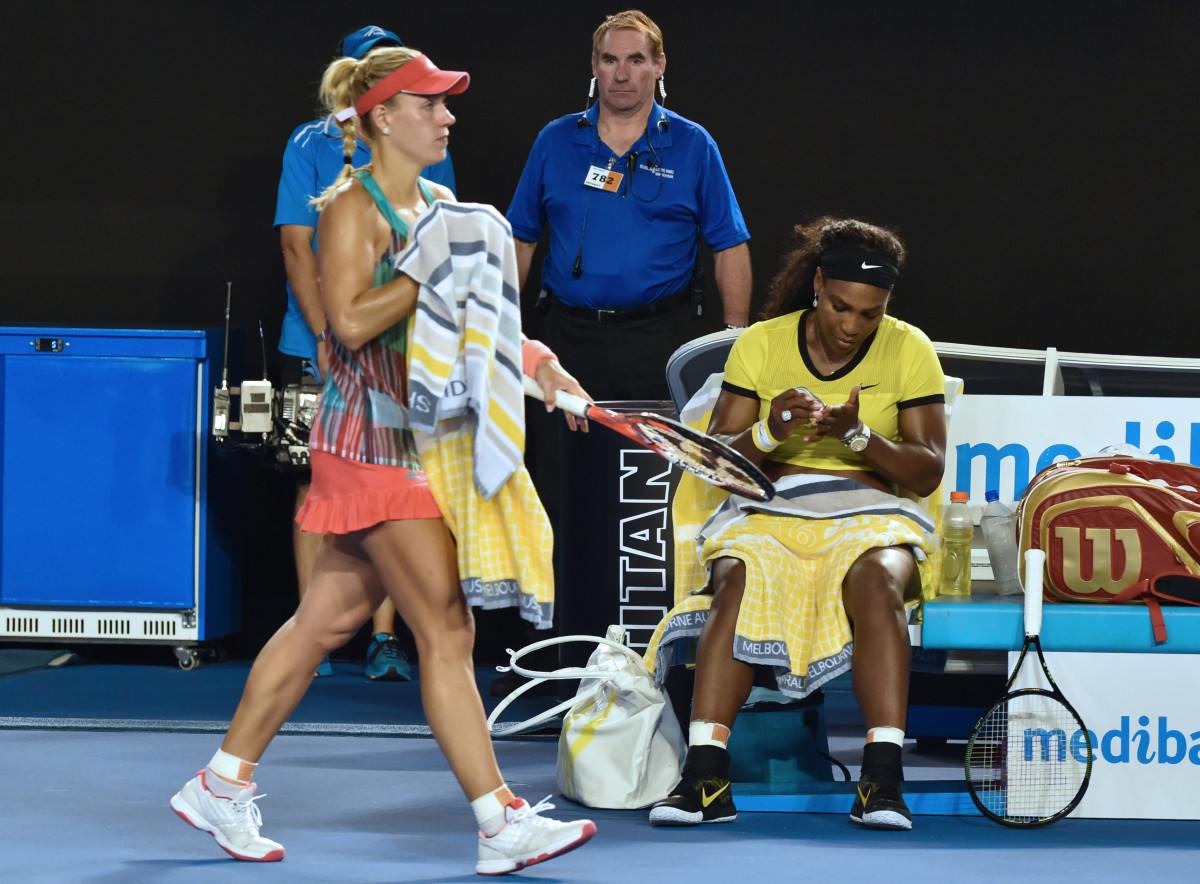
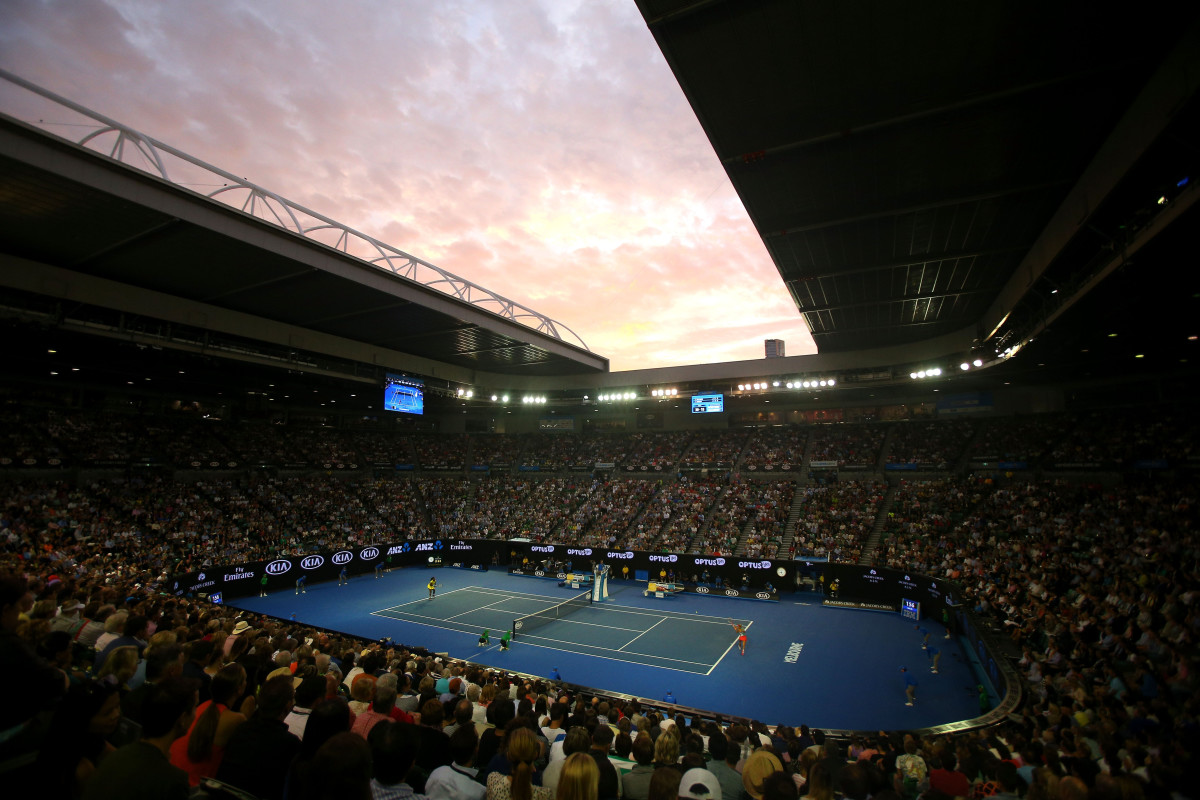
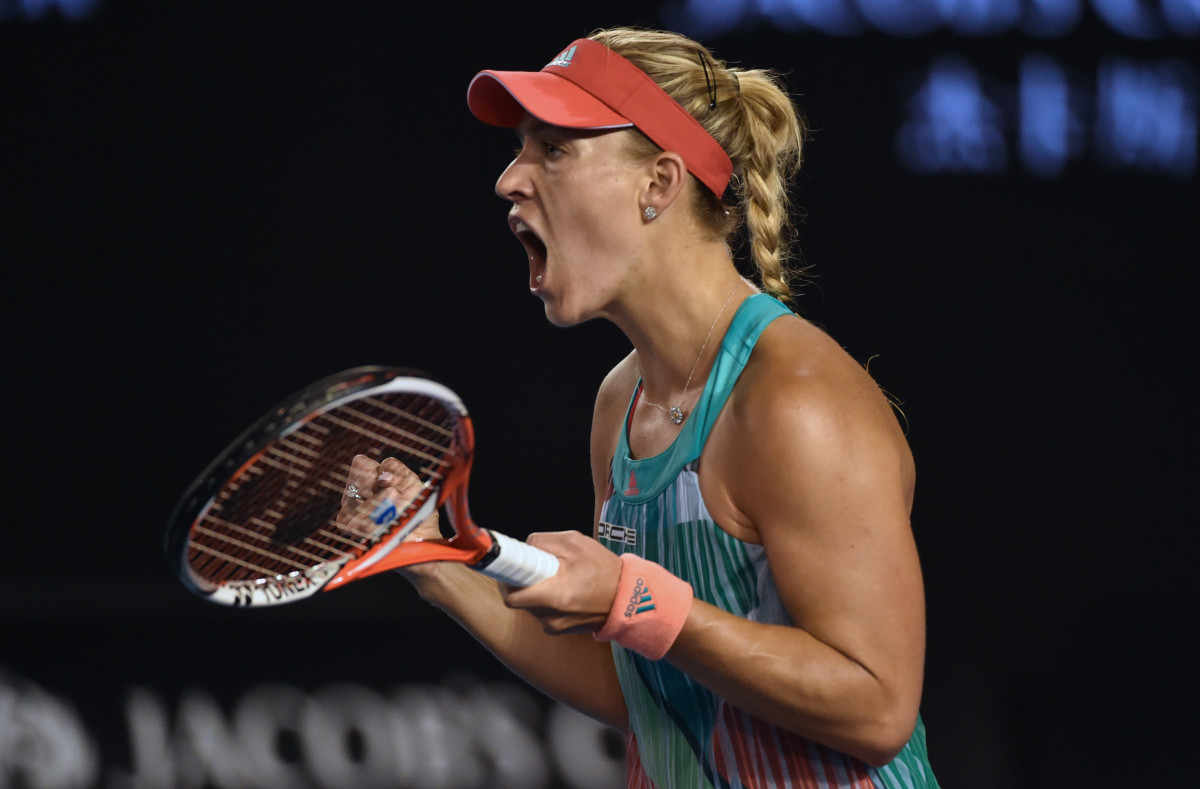
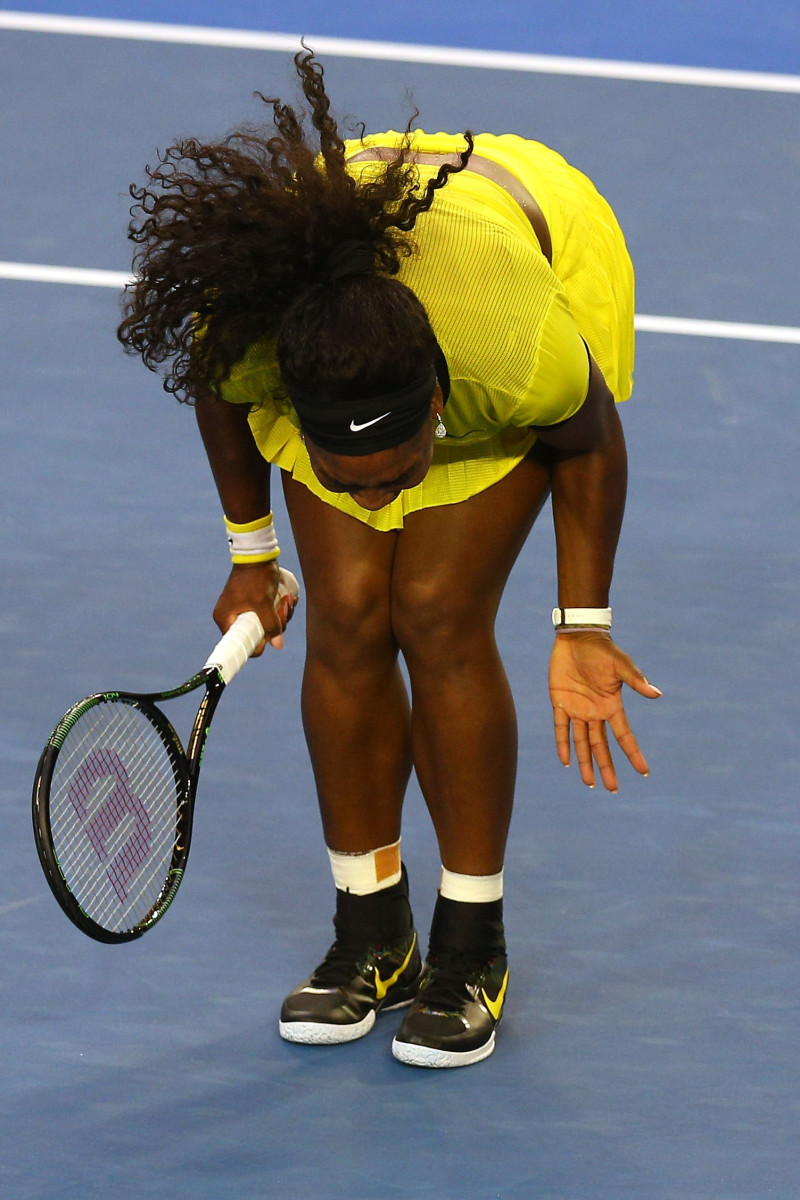
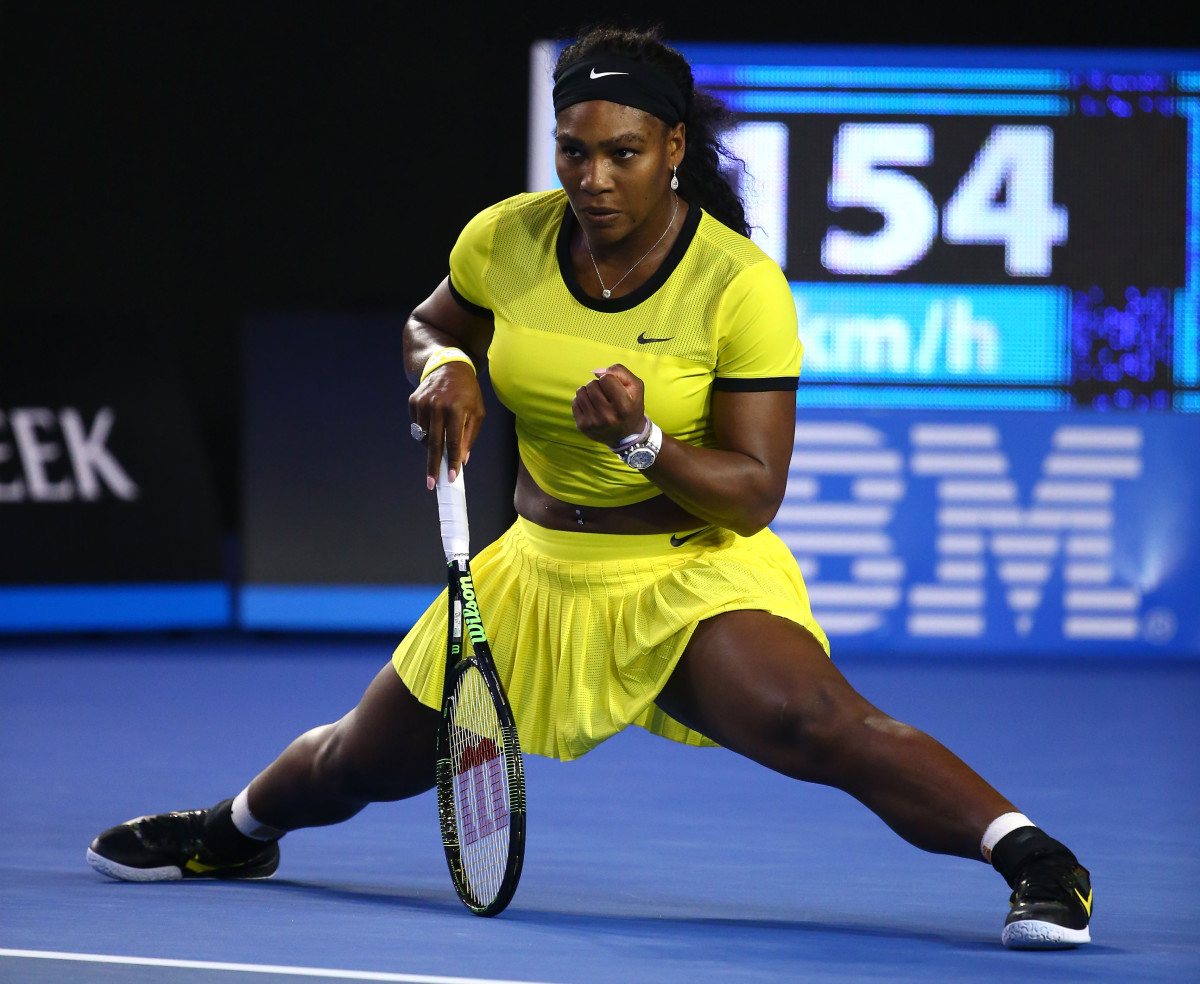
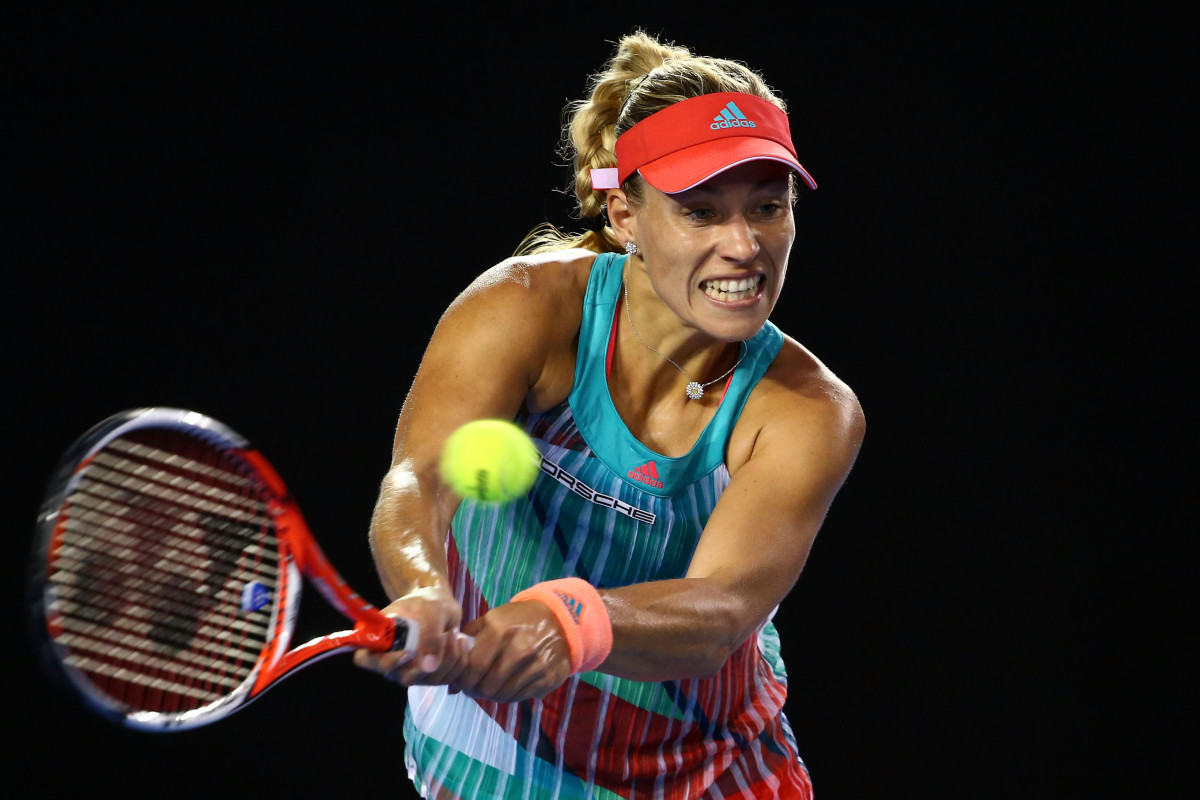
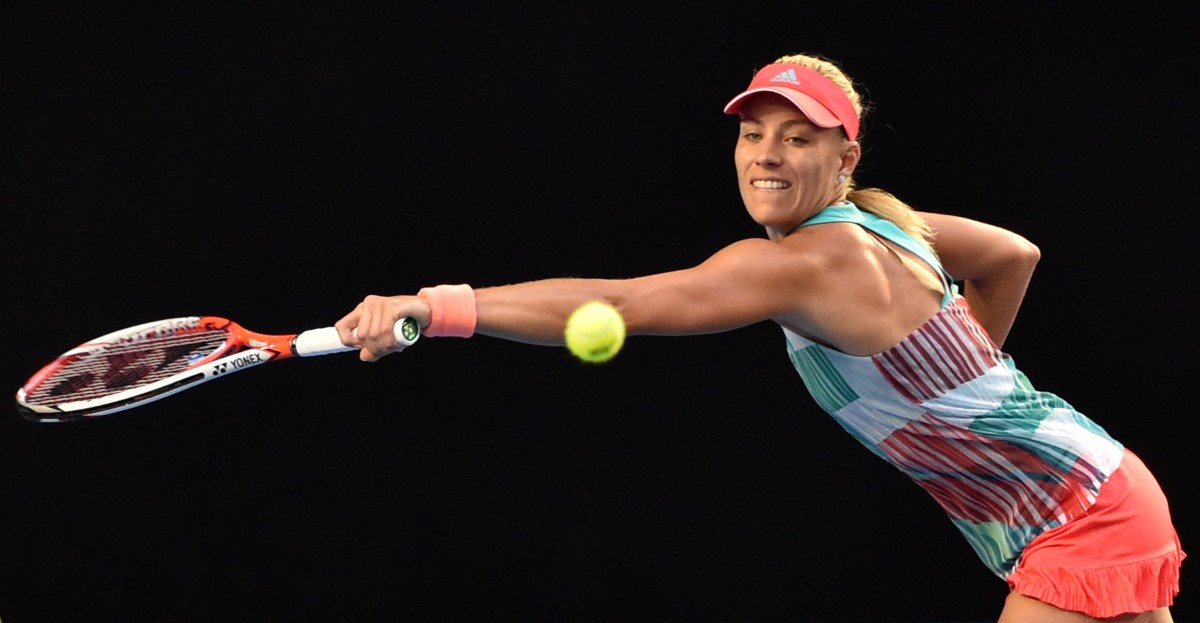
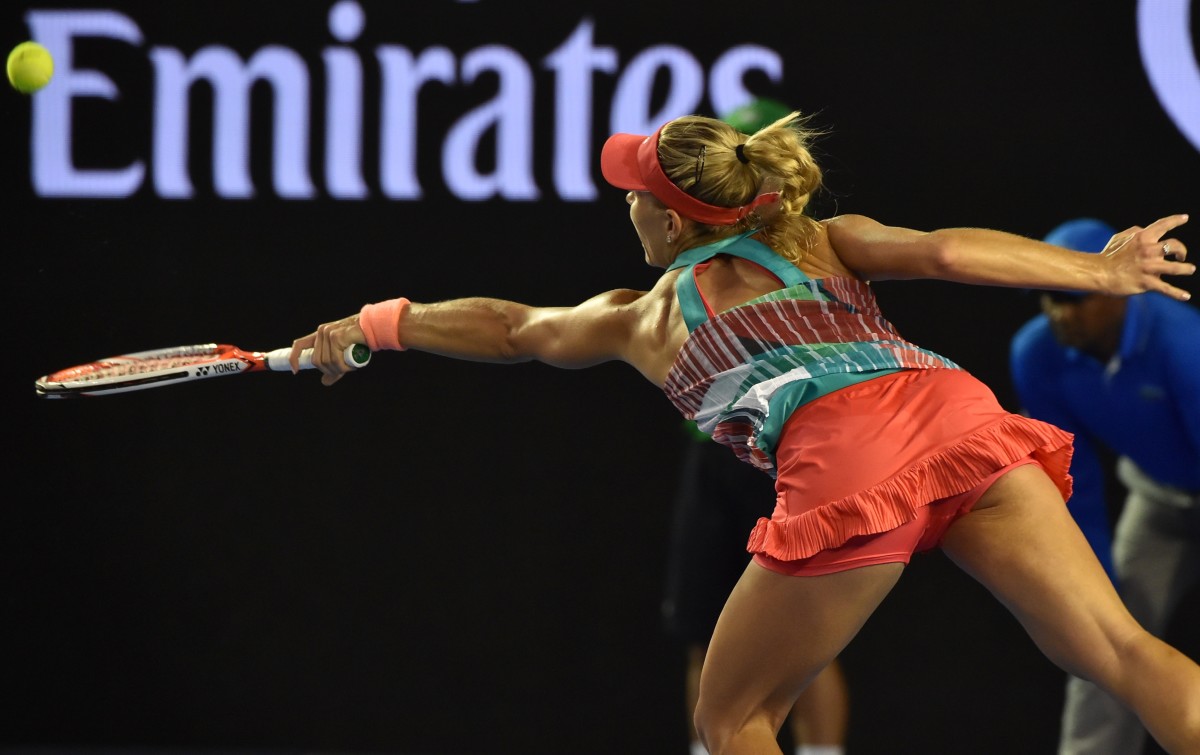
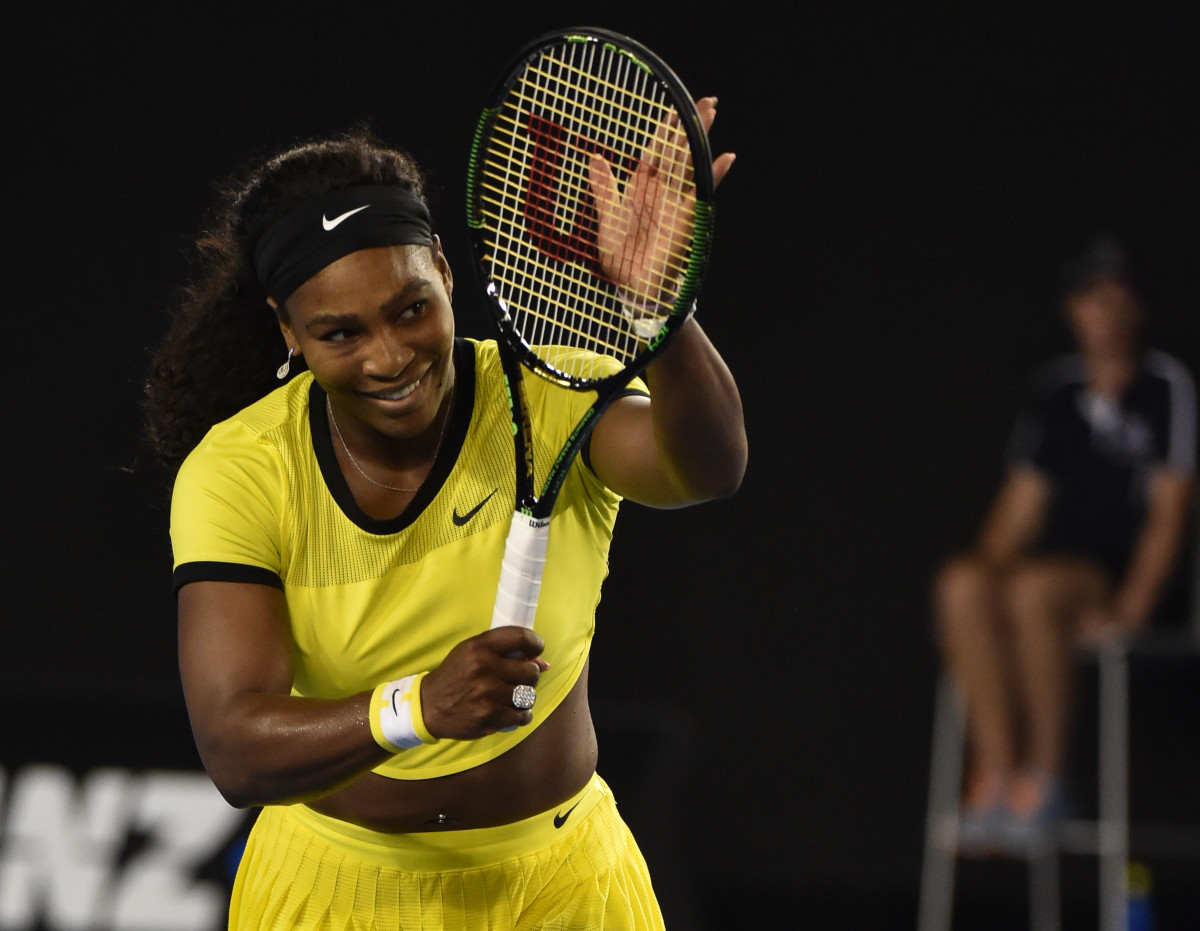
• What a bittersweet tournament for Milos Raonic. The Canadian plays the tournament of his life, showing off his devastating power and improved mobility to win five matches (including a five-set takedown of former champ Stan Wawrinka) and go up 2–1 sets on Andy Murray. A few games from the biggest win on his career, he injured his thigh and falls 6–2 in the fifth. With full health—no small caveat—how does he not Wimbledon within the next few years?
Daily Data Viz: How Kerber defeated Serena in Australian Open final
• Lots of top WTA players leave here on a down note. Simona Halep lost in round one. Same for Venus Williams. And Sloane Stephens. Petra Kvitova in round two. Garbine Muguruza lost listlessly in round three. A few players—Konta, Zhang, Daria Gavrilova—saw their stocks rise. But a lot of players in the “who could conceivably beat Serena?” category took steps back.
• Was there a better story of this tournament than Shuai Zhang, who came here with half a mind toward retiring and ended up reaching the quarterfinals instead?
• I was in the gym at my hotel and local TV showed a replay of the Rafael Nadal-Fernando Verdasco match. If I’m Nadal, I’m displeased and dispirited that I’ve been bounced early from still another major. But the truth is, no one was beating Verdasco, the way he played that last set. Just an extraordinary high level of tennis.
A few of you asked, quite reasonably, how Verdasco could play so well against the great Nadal and then look so mortal in a loss to DudiSela just 48 hours later? The question answers itself. To beat a player of Nadal’s caliber, an opponent has to play the match of his life and take sizable risks. Which is why so often we see a drop in level after an upset.
Sports gambling consultant Scott Ferguson addresses match-fixing
• Serious treatment of the match-fixing scandal doesn't lend itself to bullet points. But here are assorted takeaways. 1) The notion that the sport is contaminated—that systemically, honest competition is being undermined? That’s ludicrous. Carl Bialik at FiveThirtyEight did a great job explaining how irregular patterns ≠ corruption. 2) But you know what else is ludicrous? These blanket denials. The data and patterns should disturb every administrator. When the same names appear again and again, the odds of coincidence or mitigating circumstance go down each time. And last week in the lounge, player after player recounted off-the-record stories—most, though not all, from 250-level events on down—of dubious conduct. 3) The optics of tournaments taking sponsorships from betting houses while this scandal rages (and players are prohibited from doing so) are lousy. And the responses that “betting is legal in most of the world” and “betting houses help with detection” is a cop-out. Who says you the two are mutually exclusive? 4) The overall damage control wasn’t bad, but tennis has done a poor job outlining the scope and scale of this and differentiating the tiers. One example among many: last week, Nick Lindahl pleaded guilty to a match-fixing charge, which, of course, is disgraceful. But this headline doesn’t reflect the fact that Lindahl won ONE tour match. This doesn't mean fixing is consigned to challenger level players at small events. But context is important. If we say, “the election was marred by fraudulent voting,” the first question: “What election? The presidential election? The country school board? Something in between?” Context matters.
Novak Djokovic says he was offered $200,000 to throw match in 2007
5) We gripe often about the stifling and corrosive impact of tennis’ (often undisclosed) conflicts of interests, about the assorted double- and triple-dipping, the vested interests. This scandal represents some fallout: how does an entity seek truth and self-police when there’s so much coziness? 6) Adam Lewis, the figure chosen to lead the independent review on tennis’ anti-corruption mechanisms and practices, has a terrifically impressive CV. But anyone else find it odd that, as administrators went to great lengths to stress independence, they have chosen someone who has represented tennis players (including Mariano Puerta and Richard Gasquet) and—again, per his own resume—has prior dealings with the Tennis Integrity Unit? 7) A great unspoken, but an issue multiple players brought up unprompted: how often are the players complicit; and how often are they acting under duress?
• You want more soapbox sanctimony? You got it! We beat this drum at every major. But maybe after match-fixing has been addressed (start with a tenfold increase in funding to the Tennis Integrity Unit), the adults can address the rash of injuries. It might mean taking on the equipment manufacturers, again, potentially upending a cozy relationship. It might mean dealing, in a meaningful way, with an overcrowded schedule. It might entail science and data and not the guesswork preferred by so many. But waaaaay too many players are getting hurt; and way too many matches (including a men’s semifinal) are being decided not by ball striking, but by who is less injured. Yes, injuries are part of sports. Yes, players should be rewarded for excellent fitness and punished for substandard fitness. But when it's the first major of the year and so many players are this banged up, we have a problem.
Tennis' vulnerability to corruption, match-fixing lies in economics
• Same song, specific verse: count me as officially worried about Madison Keys, whose bid to return to the semis was thwarted by another aggravation of her abductor injury, as she lost a painful-to-watch three-setter to Shuai Zhang. Last year Keys withdrew from or retired during NINE events. One reason her Grand Slam record is so much better than her record in conventional tournaments: her body has a hard time with matches on back-to-back days. Again, here is a 20-year-old, terrific athlete, trains sensibly. And you suddenly wonder if durability will be the defining issue of her career. This should not be happening.
• Such a strange tournament for Victoria Azarenka. Despite her modest seeding (14), she is the second favorite after Serena. She plays like it for a week, giving up just 11 games in her first four matches. Then she struggles off the ground, plays the big points poorly and loses in the quarters to Kerber for the first time in seven matches.
Hingis, Mirza win Australian Open doubles title
• It made for a lot of jokes, but the faltering currency rate here has a huge impact on players. Two years ago, there was parity between the Australian dollar and the U.S. dollar. Today, it’s around $.70. If I’m a player like Djokovic—and anticipate earning seven-figures a year here for the foreseeable future— I’m smelling a serious arbitrage opportunity here.
And here’s a wild stat:
1976 prices:
Gallon of gas: $.59
Gallon of milk: $1.65
Winner’s check, Australian Open: $7,500
Those prices today, if adjusted for inflation
Gallon of gas: $2.49
Gallon of milk: $6.98
Australian Open prize money: $32,000
Actual 2016 prices:
Median price, gallon of gas: $2.27
Median price, gallon of milk: $3.38
Australian Open singles champion prize money: $3,400,000—and that’s with a weak Aussie dollar!
• Halep’s early loss made a lot more sense when we learned that she’s had a hard time simply getting out of bed for the past two months on account of a virus. (We’re told it started in her nose, moved to her ears and stomach.)
Cu părere de rău, țin să anunț că sunt nevoită să renunț la participarea la Fed Cup, deoarece voi fi supusă unei...
Posted by Simona Halep on Sunday, January 24, 2016
• After losing early—another mystifying loss for such a talented player—Petra Kvitova parted ways with longtime coach David Kotyza. If the decision wasn’t altogether surprising, this is: Kvitova has yet to name a replacement. I’m not sure you make a move like that without a succession plan.
• We have an APB out for the S.A.B.R., Federer’s sneak attack tactic, which was the toast of the U.S. Open. The symbolic value—I’m still in the basement tinkering—was immense. But we also have an APB out for the shankosaurus. Nice to see Federer with so few mis-hits, thanks, no doubt, to the larger racket.
Australian Open Day 6 Mailbag: Lauren Davis, the riddle of Kyrgios and more
• Can someone do an Aussie-style 30 for 30 on Ash Barty, who was here, showing off her cricket technique. Three years ago—as a 16 year-old!—she reached the doubles final. She quits tennis cold turkey, claims to be giddily happy, and, far as we know, has no immediate intentions of returning. Good on her, as they say.
• I’m not sure how much we learned about Nick Kyrgios, who lost in round three to Tomas Berdych. Kyrgios is wildly talented and entertaining. Knew that. He has vast potential. (As Pat Rafter told us, “If he doesn't get to No. 1, something went wrong.”) Old news. He still needs emotional maturity if he is to maximize his potential. (To wit: He is surrounded by enablers, but has no real coach.) Check. He has a regrettable habit of humiliating others—in this tournament’s case, respected chair umpire James Keothavong—a trait that separates Kyrgios from, say, quarterfinalist Gael Monfils, who might be wed more to entertainiment than to winning but is thoroughly likable and benign? Check. At this point Kyrgios career like one of those “ticking clock” movie premises. Will maturity and better decision-making arrive before it’s too late?
• Long as we’re here, I’m not sure we learned much about Bernard Tomic either. We know he’s talented and capable of 11-20 level tennis. It redounds to this: either he proves Roger Federer wrong or he doesn’t.
Venus Williams to play at Indian Wells for first time since 2001
• On the plus side, it was great to hear that, after 15 years away, Venus Williams is entering Indian Wells. On the less plus side….Venus usually comports herself with extraordinary grace—and is lauded for it accordingly. But her decision, again, to skip a post-match press conference was disappointing. For one, it’s a rule that 255/256 of the other players follow. And while press conferences can be unpleasant, especially following defeat, it’s the forum for making yourself accessible and accountable, for taking ownership of wins and losses, for congratulating the opponent, for speaking about the event and host city. (All of those “I love Melbourne” player testimonials, which help fuel the growth of this tournament, which fuel the radical increase in prize money? They stem largely from press conferences.) Venus was fined $5,000 by the ITF—highest fine of the tournament, by the way—but, beyond that, it was an act unworthy of one of the sport’s leaders. Sermon over.
• Roberta Vinci beats Serena Williams—springing one of the sport’s great upsets—and reaches the U.S. Open final. In the next major she….falls to 82nd-ranked Anna-Lena Friedsam?
Ana Ivanovic's coach Nigel Sears collapses at Australian Open
• Speaking of, spare a thought for Friedsam—an athletic and hard-charging German who is far better than her ranking suggests. In round four, she is serving for the match, 5–2, against Aga Radwanska and comes down with a nasty case of the cramps. Wrong opponent. Radwanska does not miss a ball and runs out the show 7–5.
• One of the tournament’s scarier and more serious moments came on the middle Saturday when Nigel Sears took ill while watching the player he coaches, Ana Ivanovic, take on Madison Keys. As Sears was transported to the local hospital, the match halted. Meanwhile, a few hundreds yards away, Sears’ son-in-law, Andy Murray was in action, too. The tournament handled a delicate situation well and alerted Murray about the situation as soon as the match was over and, rightfully, permitted him to skip post-match obligations. Still, there was something unsettling and strange about watching Murray play on, oblivious, while millions knew this intimate detail about a family member.
• One of the tournament’s endearing moments: Federer, waiting to go on court, reacting like a fan, as he watched Lauren Davis dump a gimme volley into the net that would have given her set point over Maria Sharapova. (Davis, much to her credit, won the set anyway.) This was another example of Federer’s tennis geekdom and affection for the sport. Still, we hear Federer was not aware of the camera and was not pleased about it. As much as we all like access and behind-the-curtain peeks, there have to be some sacred and safe places for athletes. Putting a small camera in the warm-up area smudges that line.
• Among the celebrity-guests: Mick Fanning, the Aussie surfer, perhaps best known to Americans as the dude who punched the shark.
Tennis to launch Laver Cup, a Ryder Cup-style team event, in 2017
• While it’s hardly unique to this event, I can’t recall seeing more points lost by players dumping attempted drop shots into the net. Never mind that it’s a “bail out shot” as the commentators say, often an act of nervousness that tells the opponent, “I don't trust my strokes.” Statistically, it’s simply not effective.
• For those worried, understandably, that the Miami event might leave the U.S., here’s some comfort. We hear there’s a good chance that it might not even leave the state, and is likely to relocate to the USTA facility in Orlando.
• Speaking of new events, in theory, the Laver Cup—a Ryder Cup derivation announced during finals weekend—is an intriguing idea and makes sense on any number of levels. But it also risks devolving into Tennis Politics 101. The ATP can't be pleased about an unsanctioned mid-season event with top players, held just prior to the Asian swing. And how many IMG- and CAA-represented players will compete in an event promoted by a rival agency?
• Henry James is credited with the line, “Tell a dream, lose a reader." You could expand that to, “Tell a travel nightmare story, lose a reader.” (And then we had to wait at the gate for the crew to arrive…Zzzzzz) Still, suffice to say, I had a rough time getting here. On the final leg from Sydney to Melbourne, Viktor Troicki sat a few rows from me. This was on a Sunday afternoon. Troicki had won the Sydney tune-up. But how was he to maximize his chances at the Aussie Open when he arrived in town less than a day before first ball? As it was, he lost in the third round to Raonic (no shame there) but it prompts the question: does a player with realistic expectations of winning a Slam enter an event the previous week?
Novak Djokovic beats Roger Federer to advance to Australian Open final
• Clearly compromised by injuries, Dmitry Tursunov had little to give in his first round match against Stan Wawrinka. We laughed out loud, though, when local television commentators read off his hobbies, absent irony, “Tursunov loves walks on the beach, cuddling and annoying people.”
• There is an “I” in Thiem. Yet he is selfless. Dominic Thiem deserves some applause for this bit of sportsmanship.
• Nice tournament from John Millman, who got to the second week and had chances against Tomic. We also liked his assessment of his friends: “A fair few of them flew down for the match and made the best of, what is it, Heineken Saturday today? I was a bit worried they would be a bit legless.”
• Indiana geekdom: for a state in the guts of America, there sure is a rich tennis history. Longtime host to a pro event. Home of former ATP CEO Mark Miles as well as veteran Rajeev Ram. The law firm that represented Hamburg in the dispute with the ATP? Based in Indianapolis. Here in Melbourne, Jack Sock’s coach, Troy Hahn, ran into Ram in the lounge. Fifteen years ago, they played for the state title.
• We've seen players make an error and then abuse the net in many ways. This gesture from Kiki Mladenovic, though, was a first.
GALLERY: FASHION AT THE 2016 AUSTRALIAN OPEN
Fashion at the 2016 Australian Open
Madison Keys
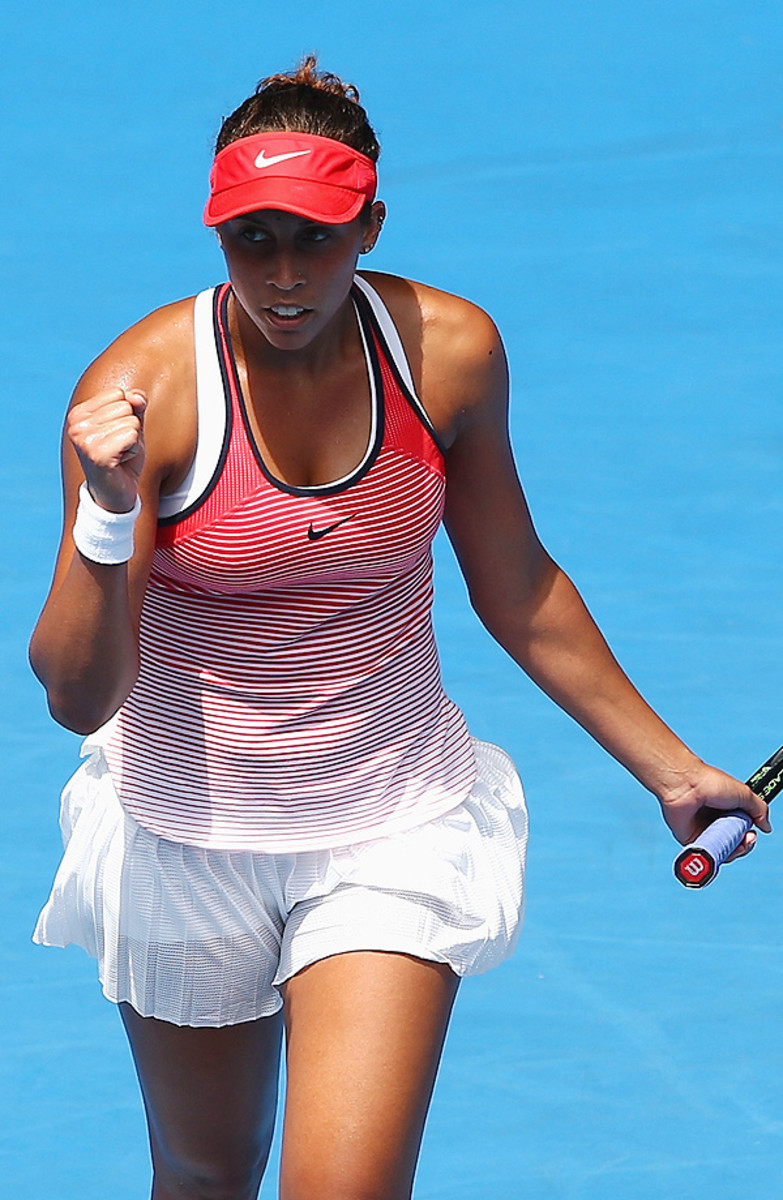
Novak Djokovic
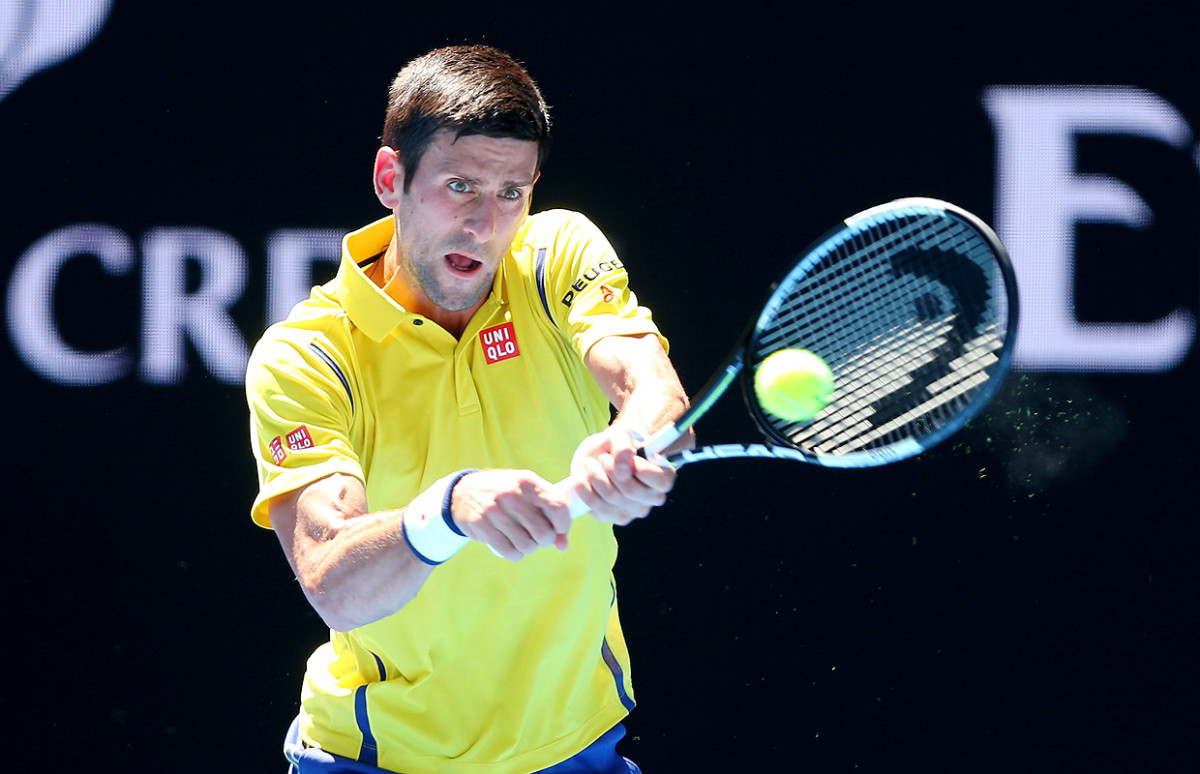
Maria Sharapova
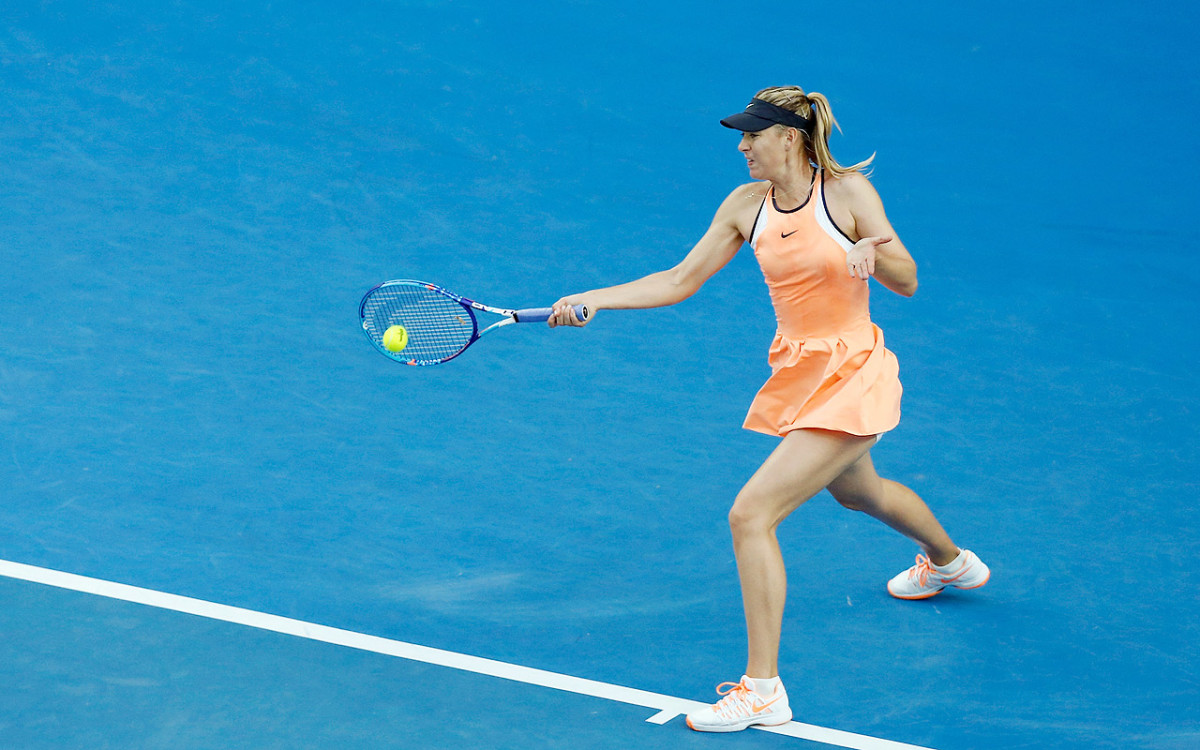
Roger Federer
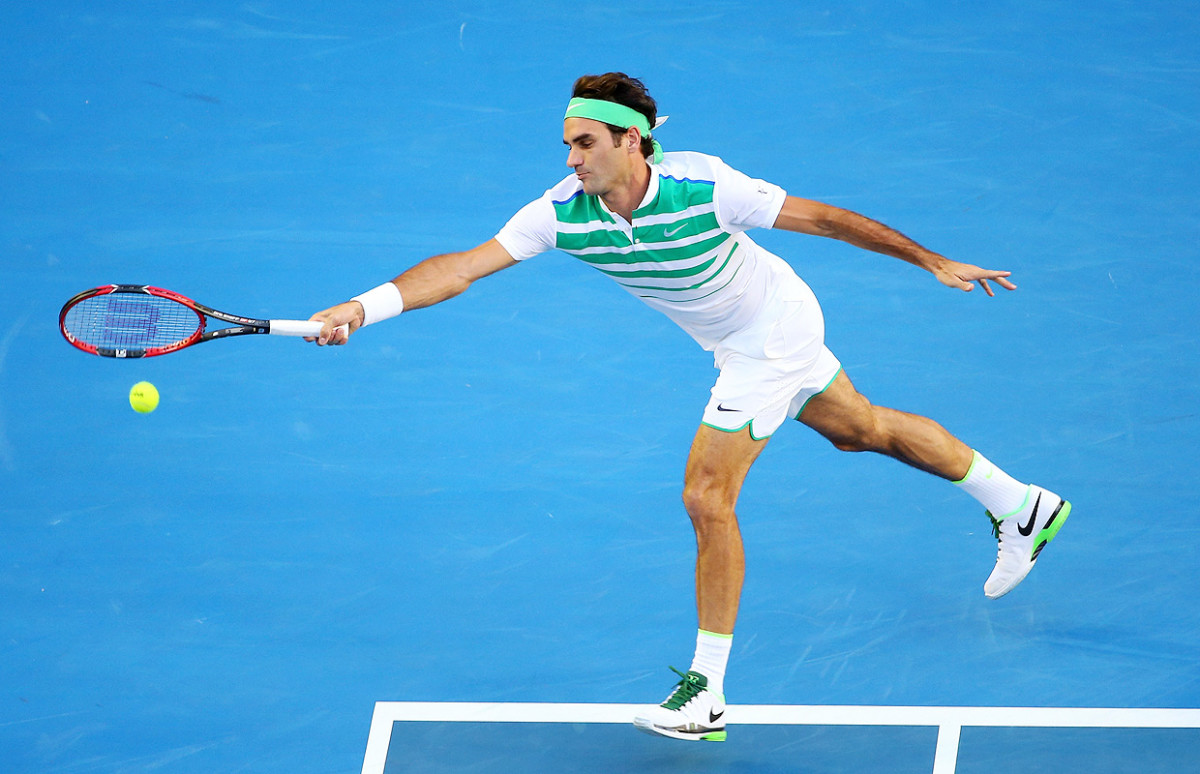
Serena Williams
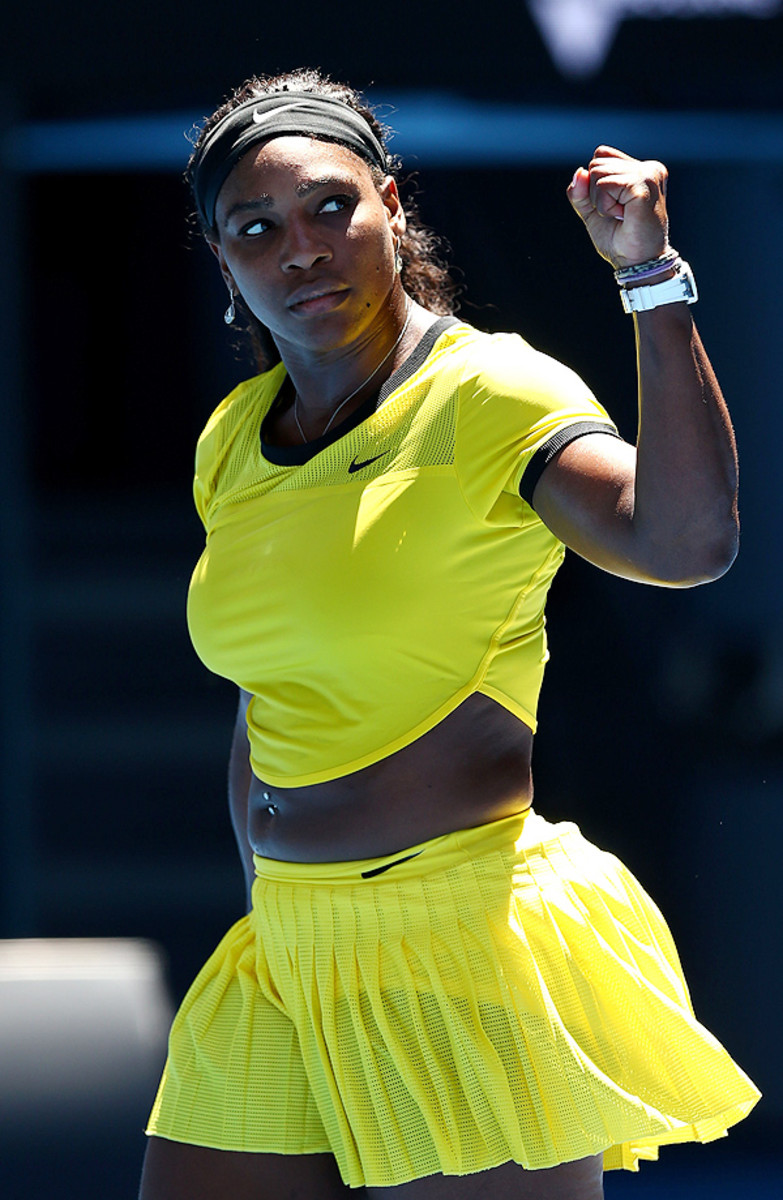
Simona Halep
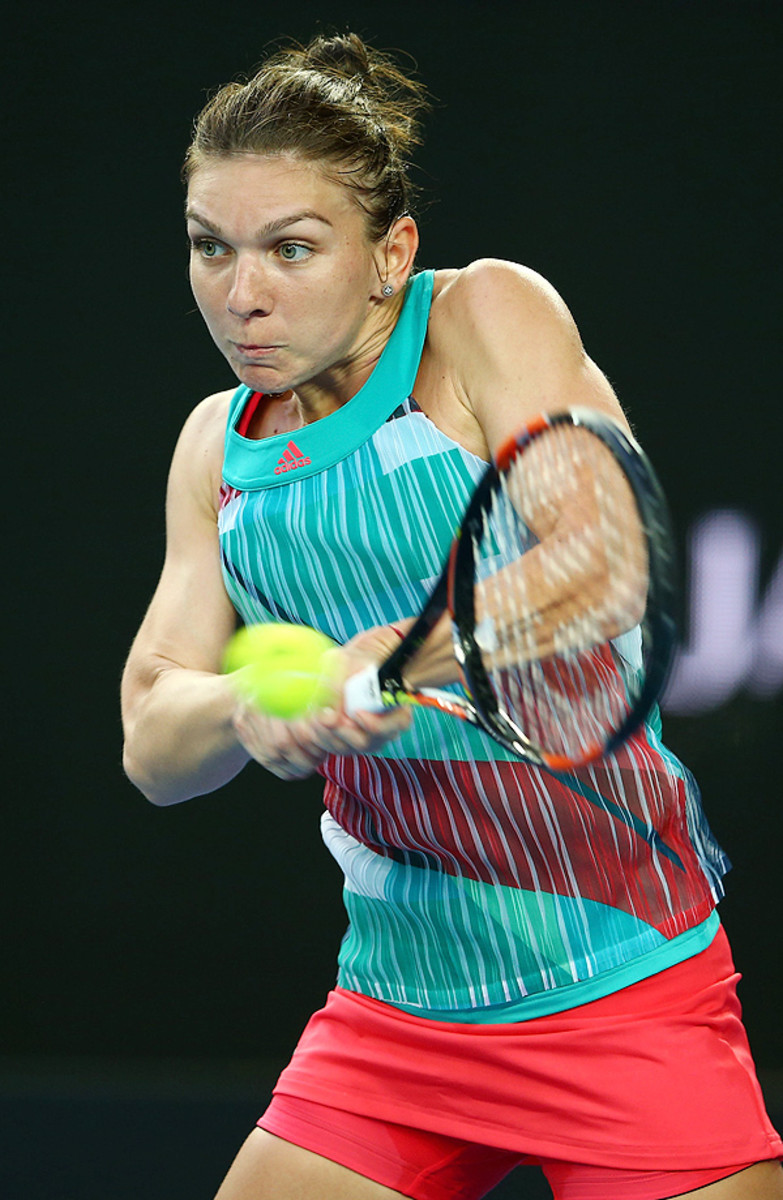
Andy Murray
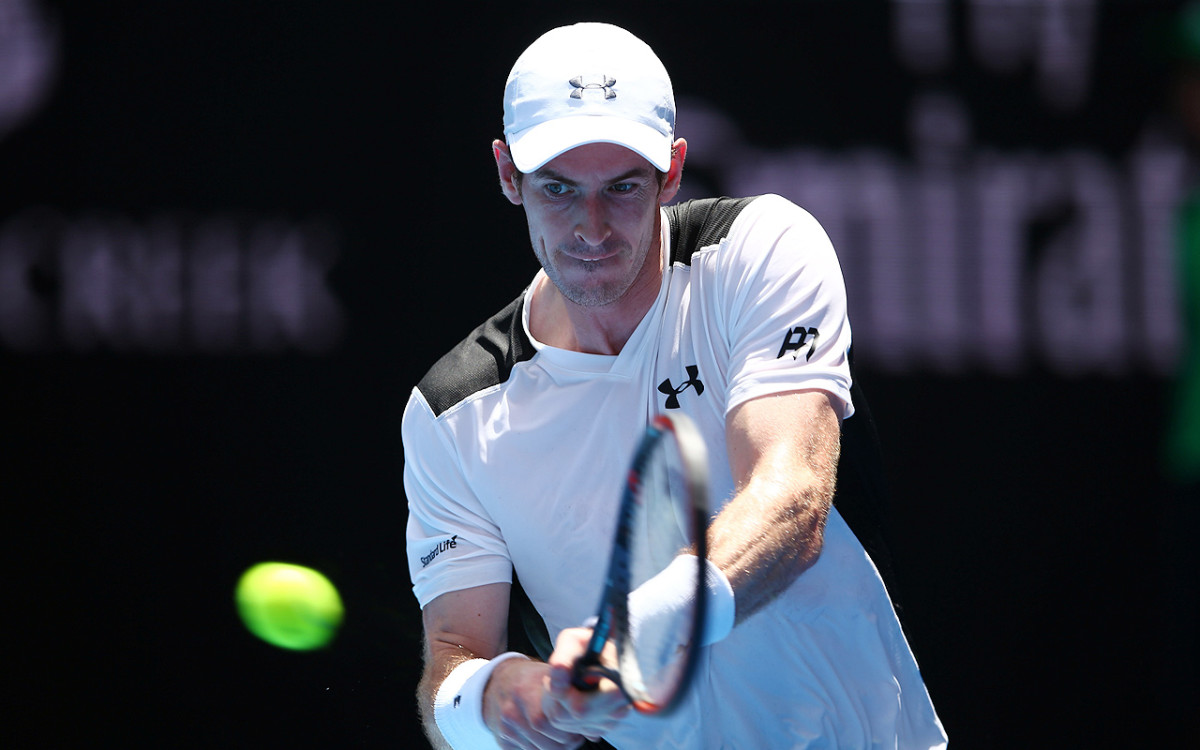
Caroline Wozniacki
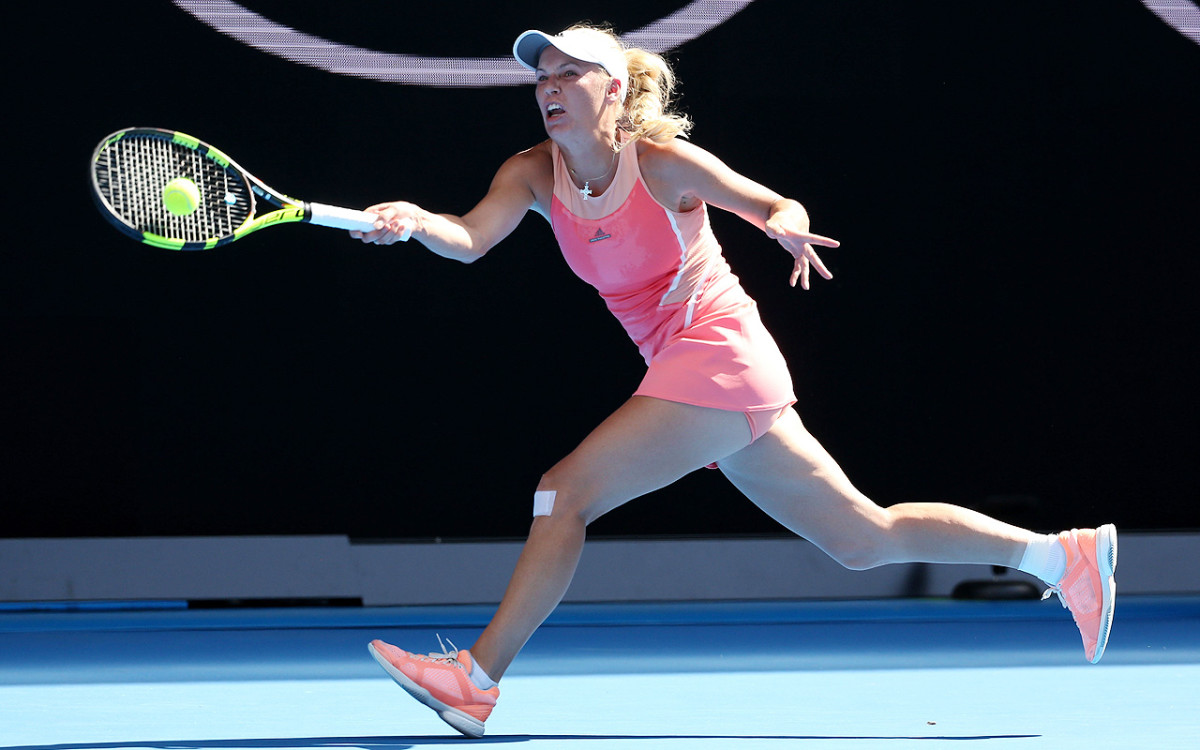
Rafael Nadal
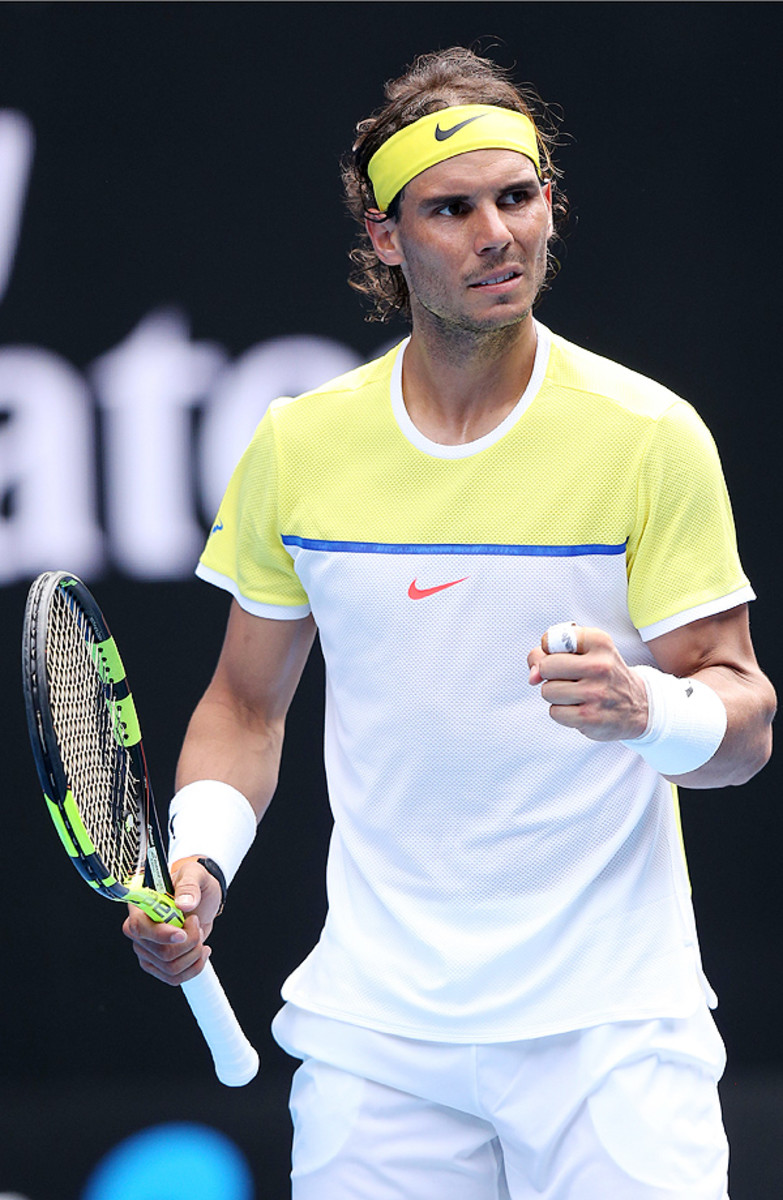
Ana Ivanovic
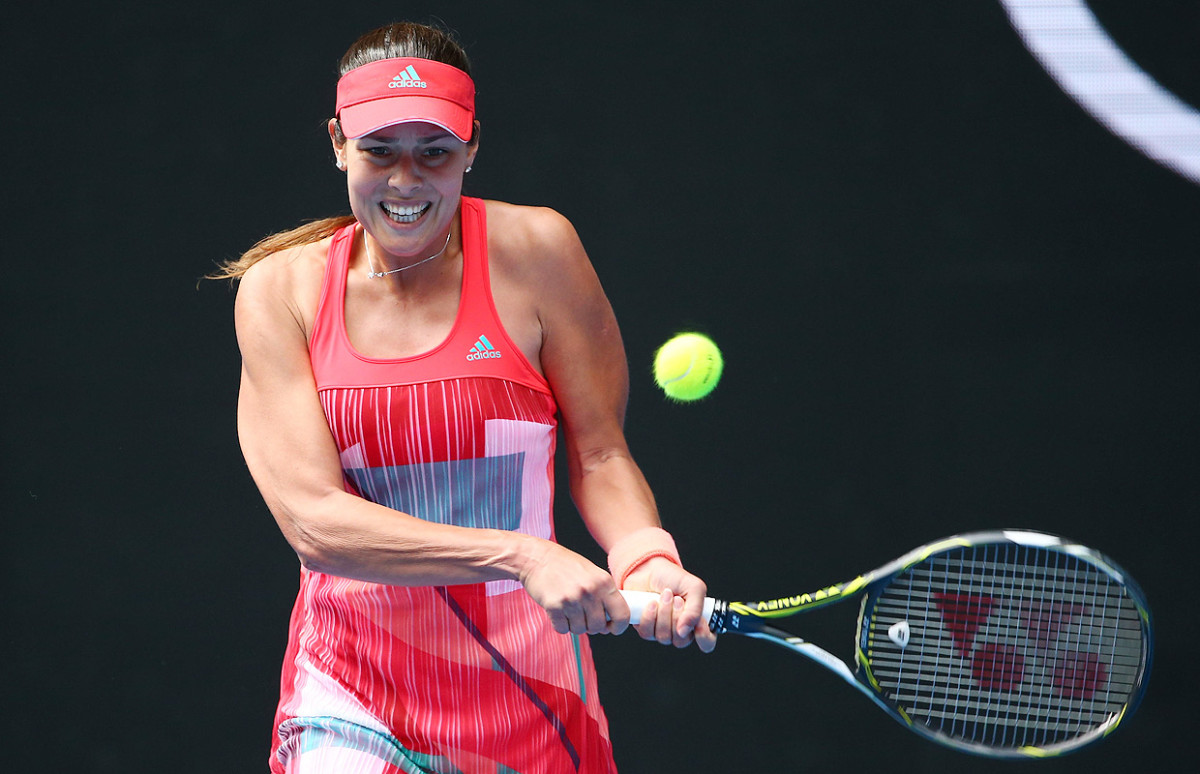
Roberta Vinci
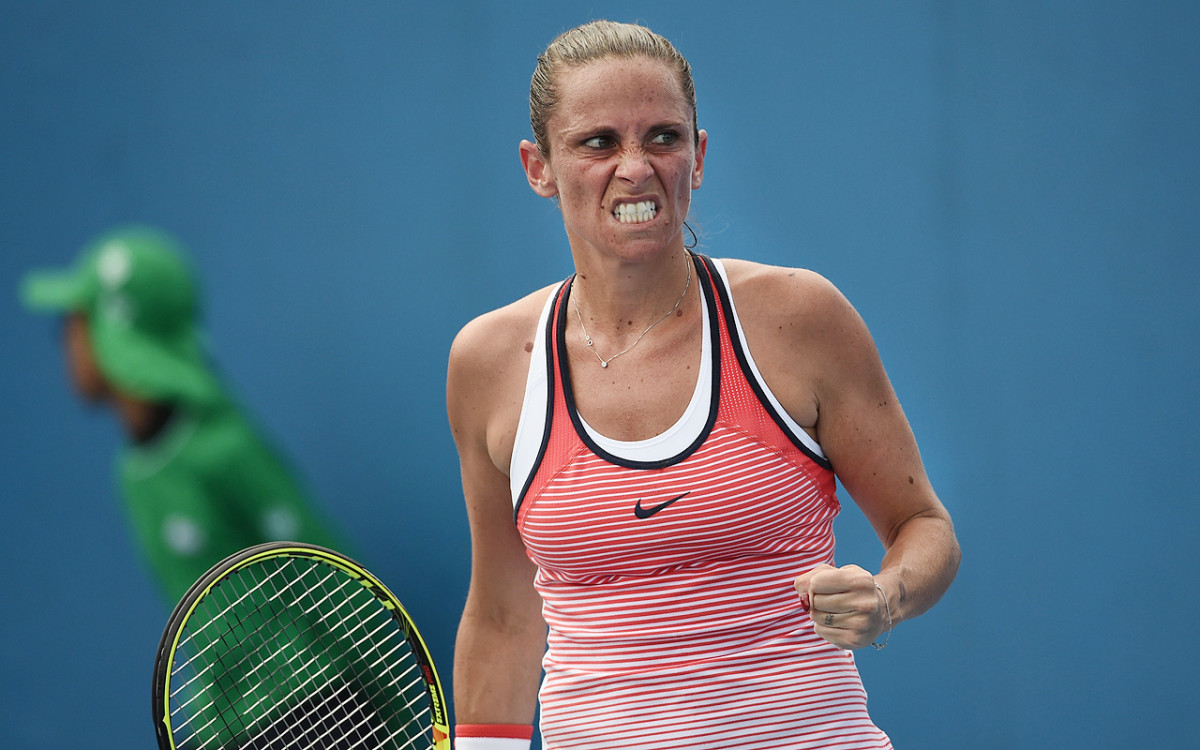
Venus Williams
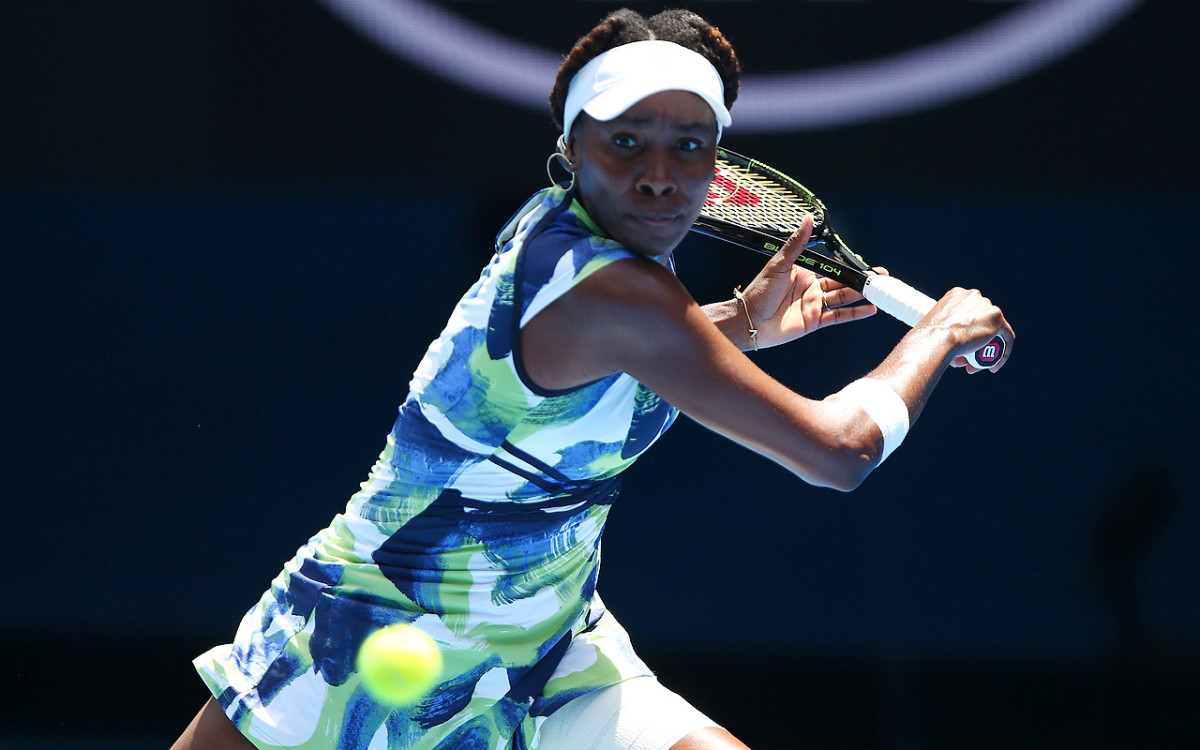
Tomas Berdych
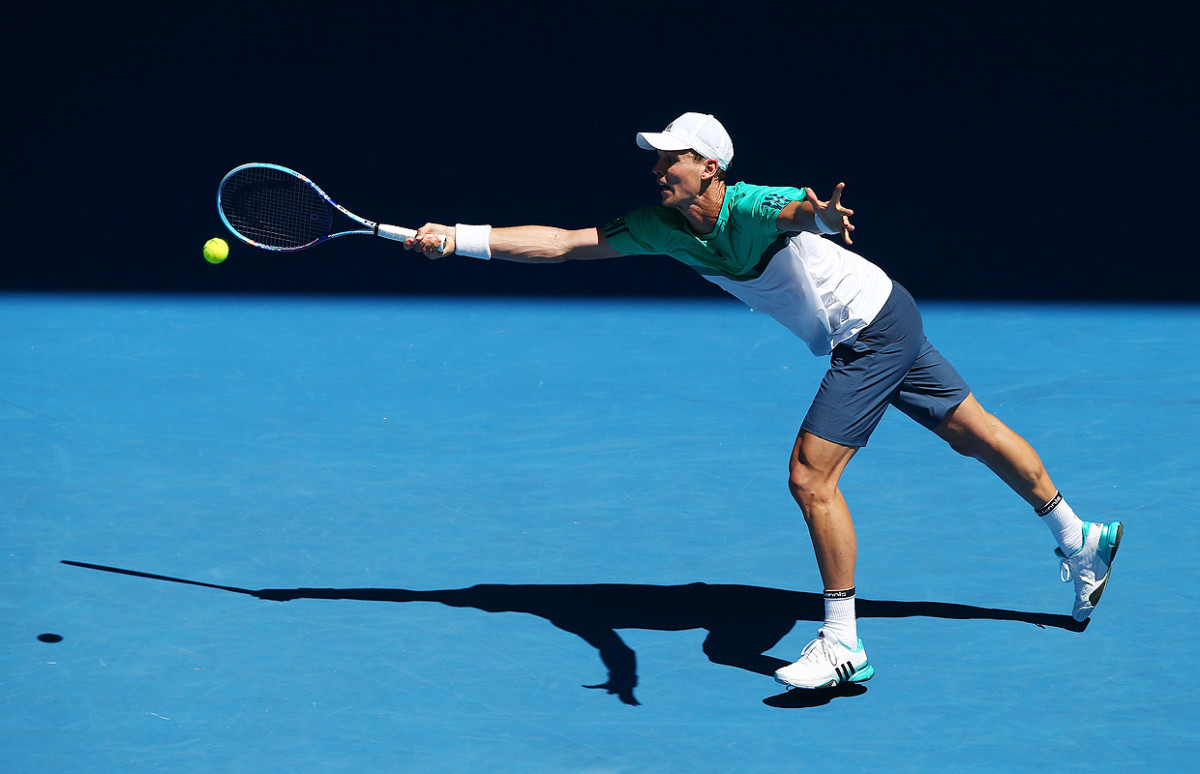
Marin Cilic

Angelique Kerber
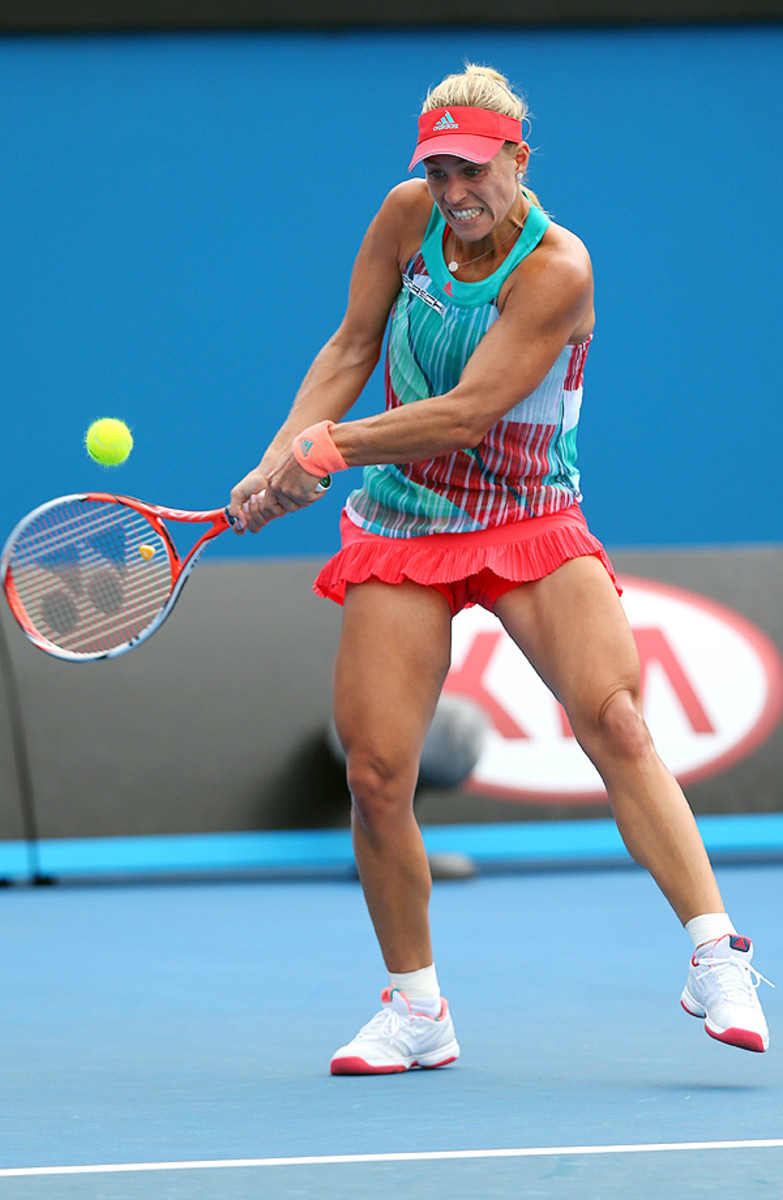
John Isner
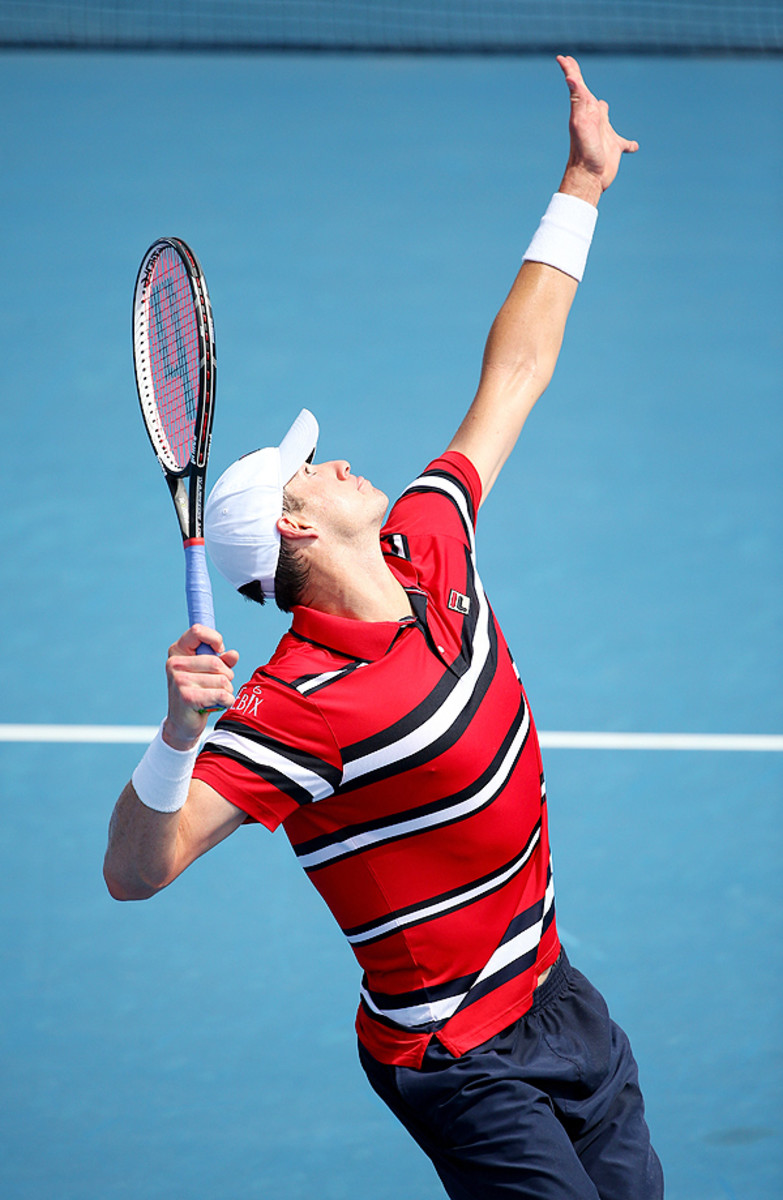
Jo-Wilfried Tsonga
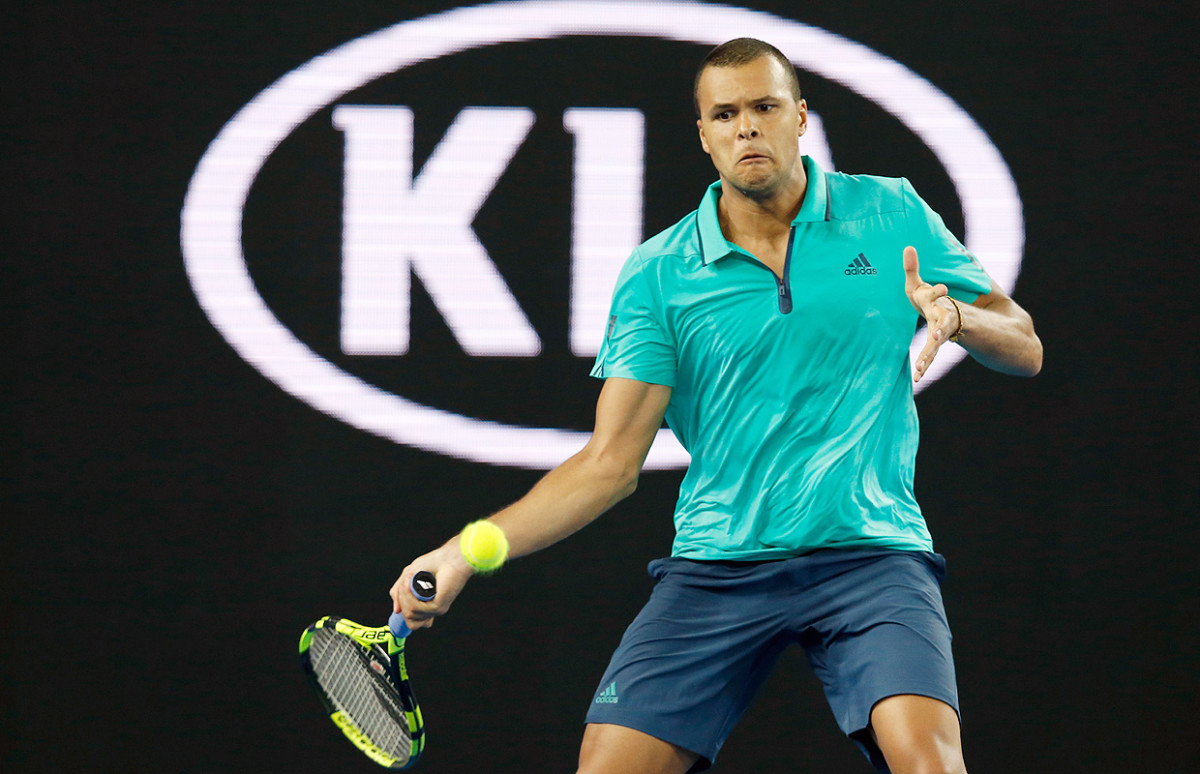
Jelena Jankovic
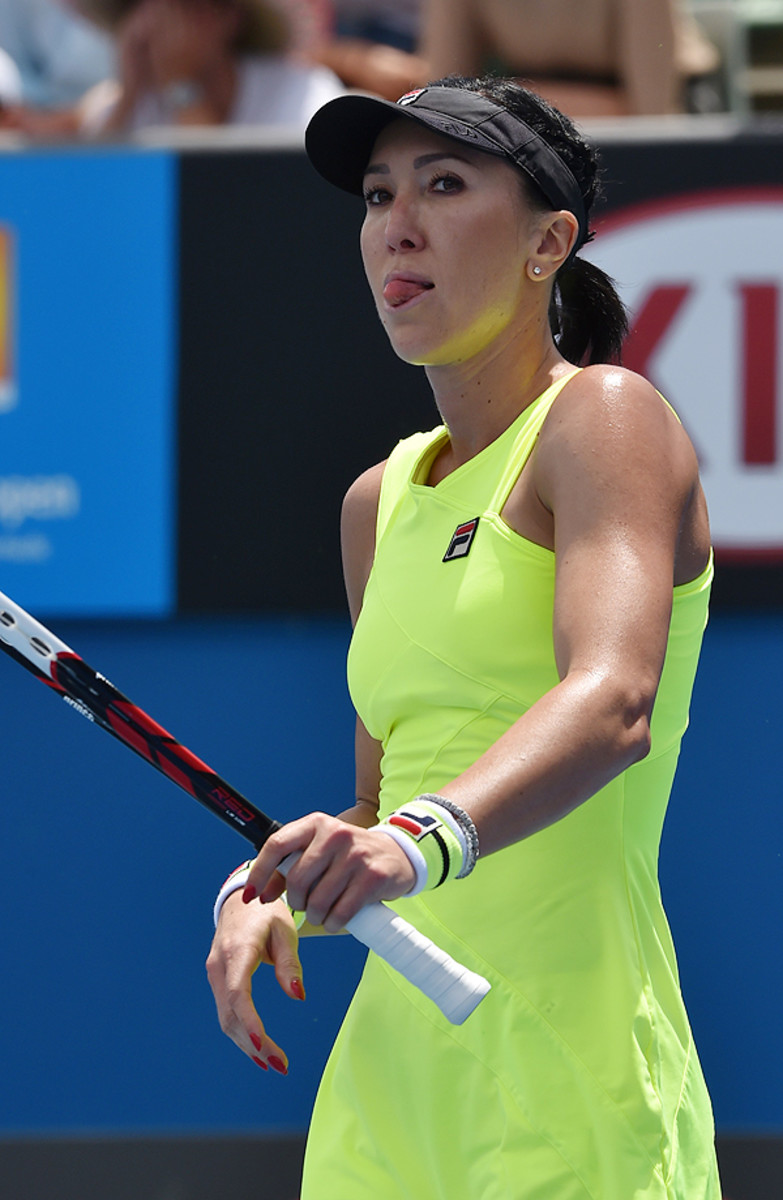
Petra Kvitova
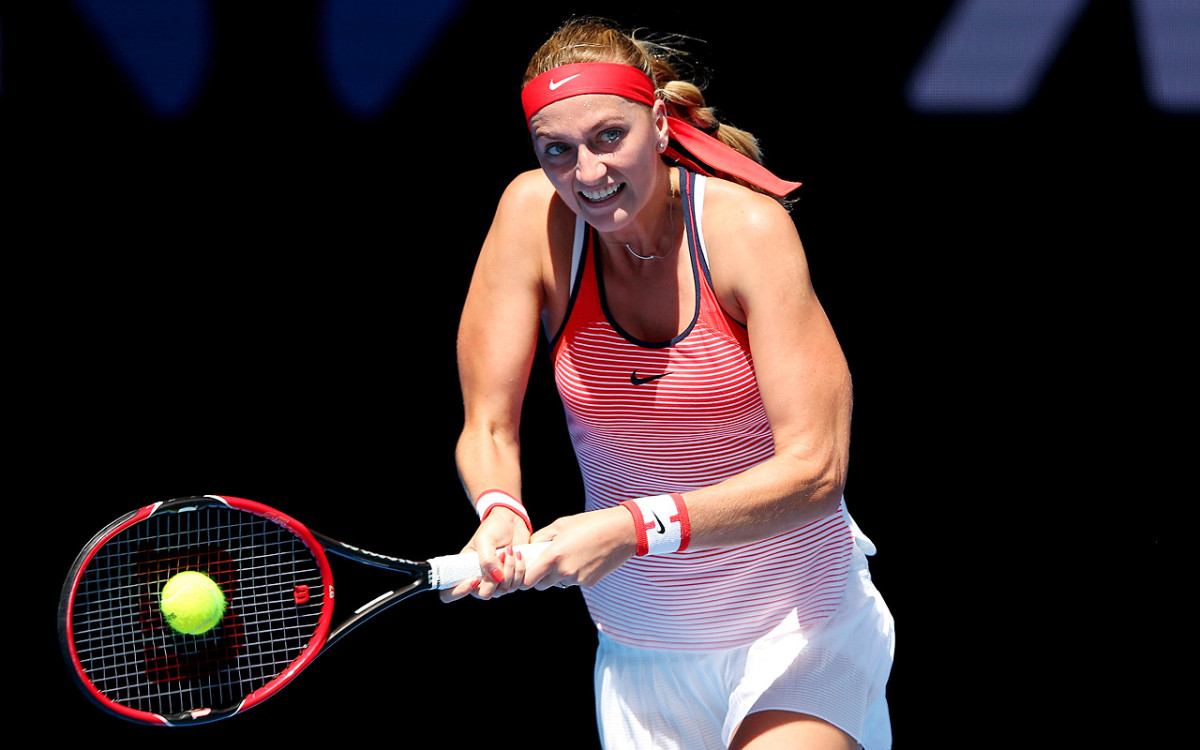
Kei Nishikori
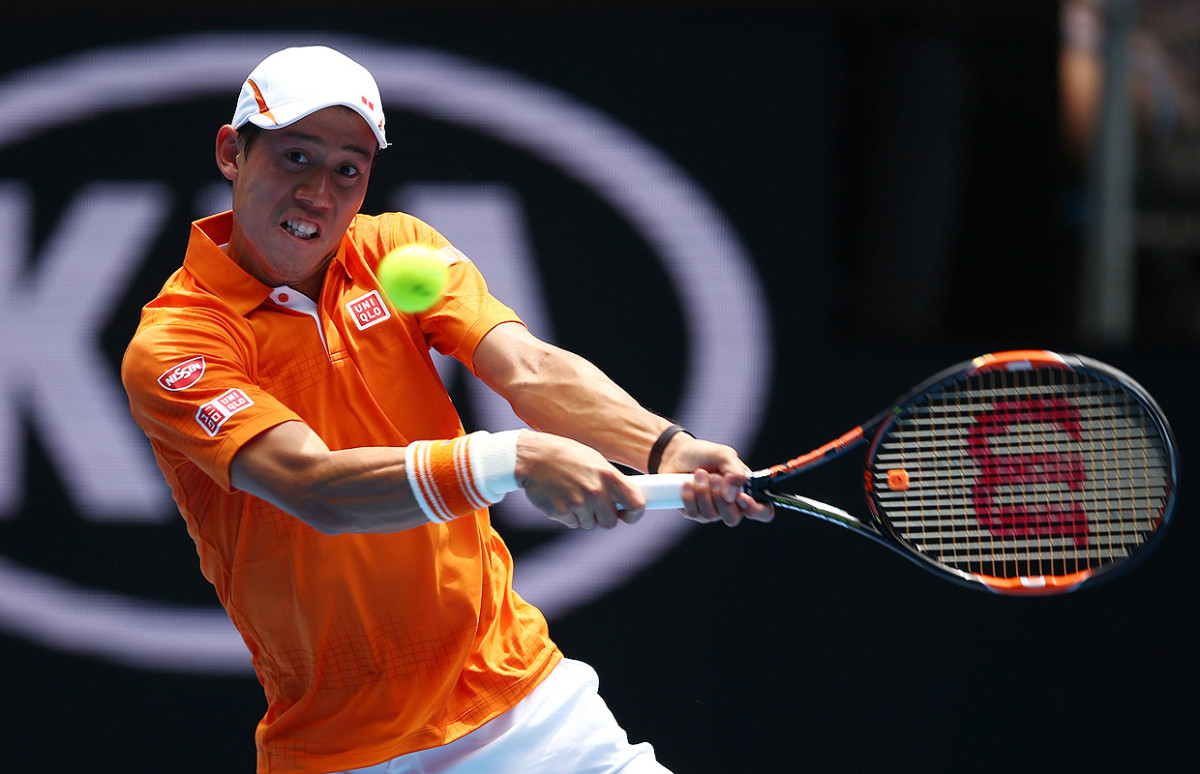
Agnieszka Radwanska
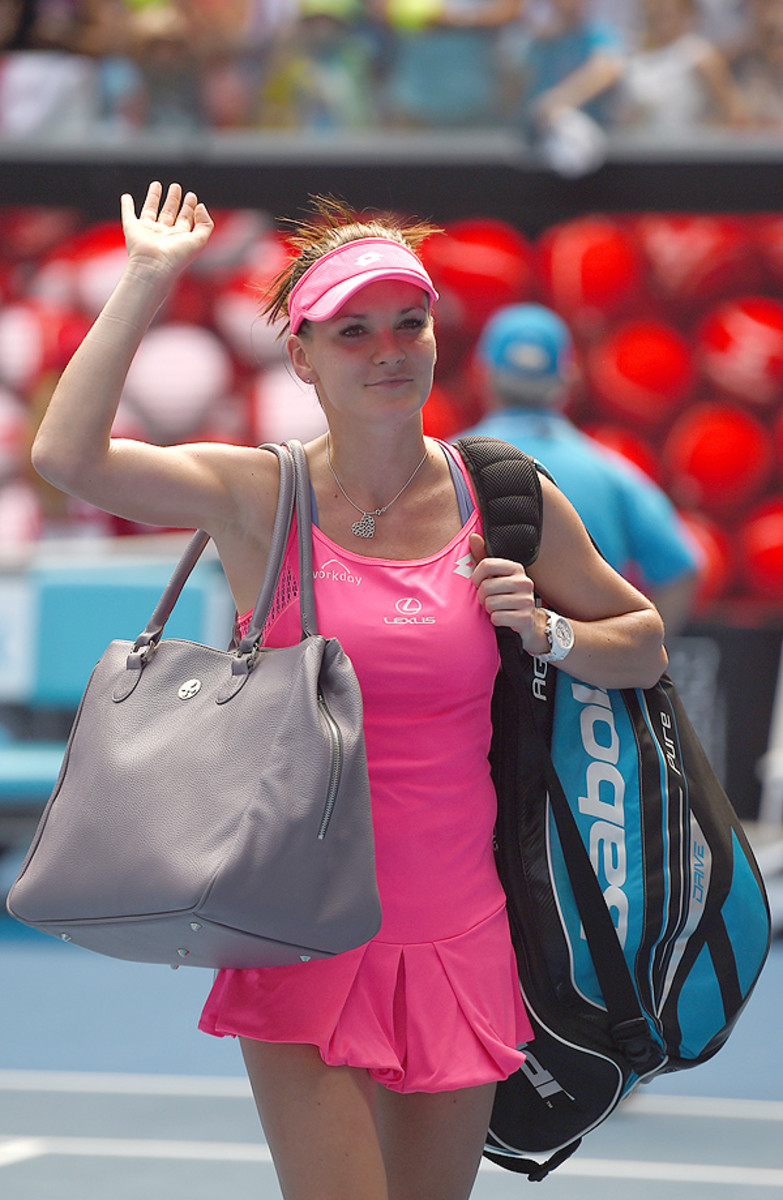
David Ferrer
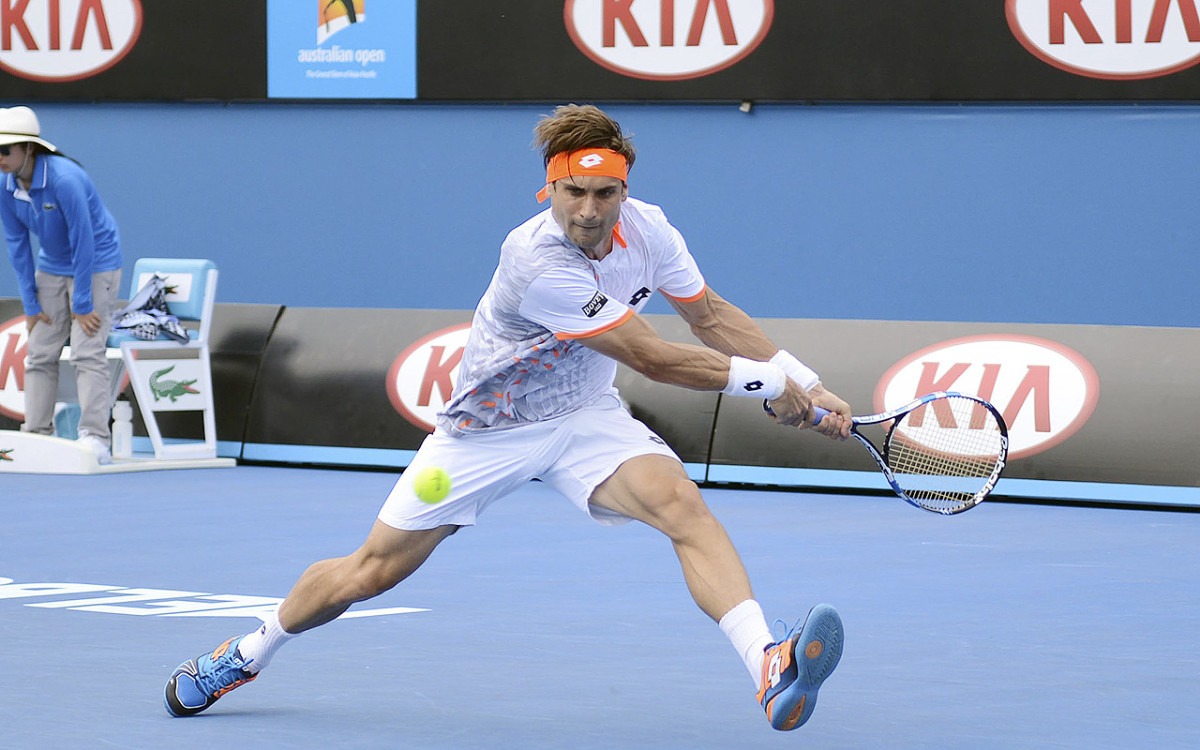
Timea Bacsinszky
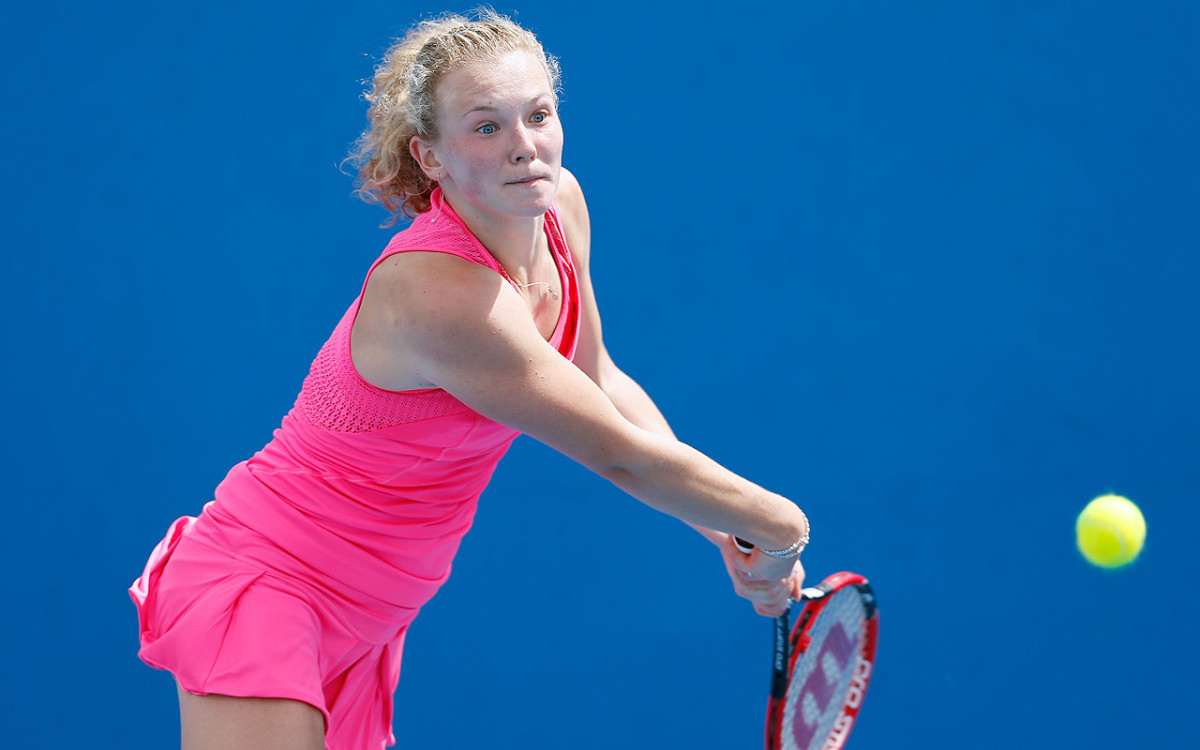
Sara Errani
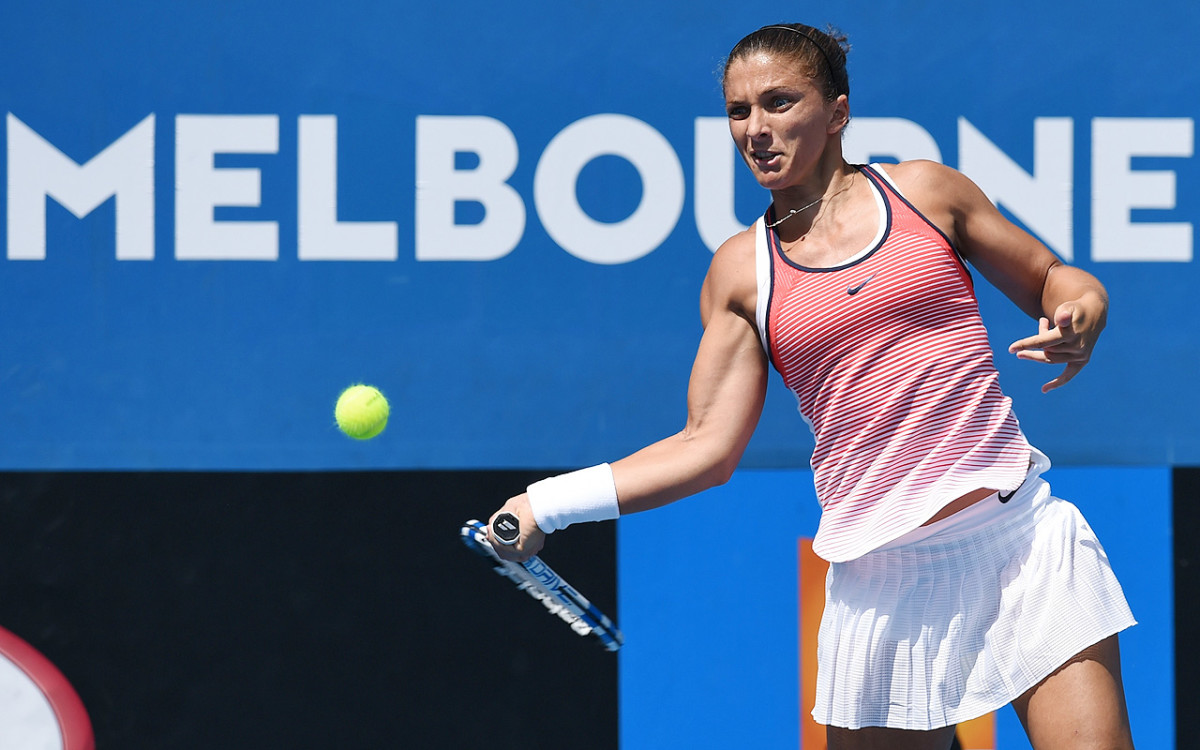
Belinda Bencic
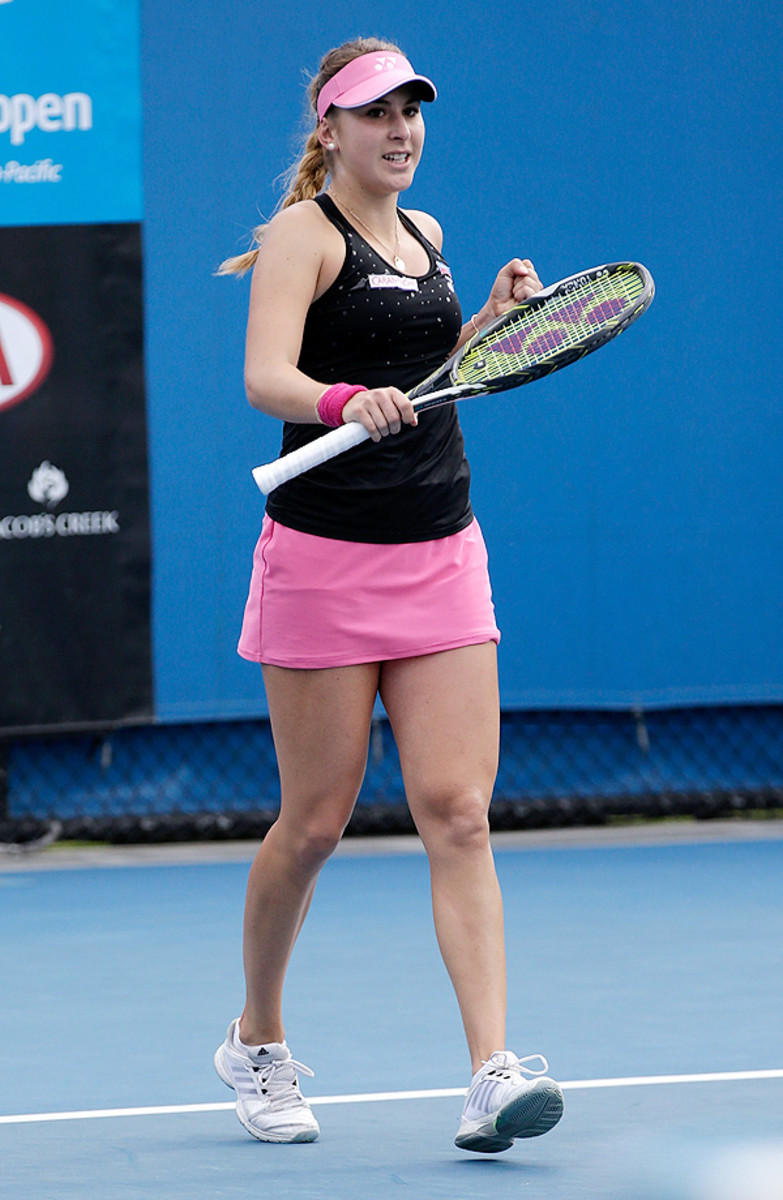
Carla Suarez Navarro
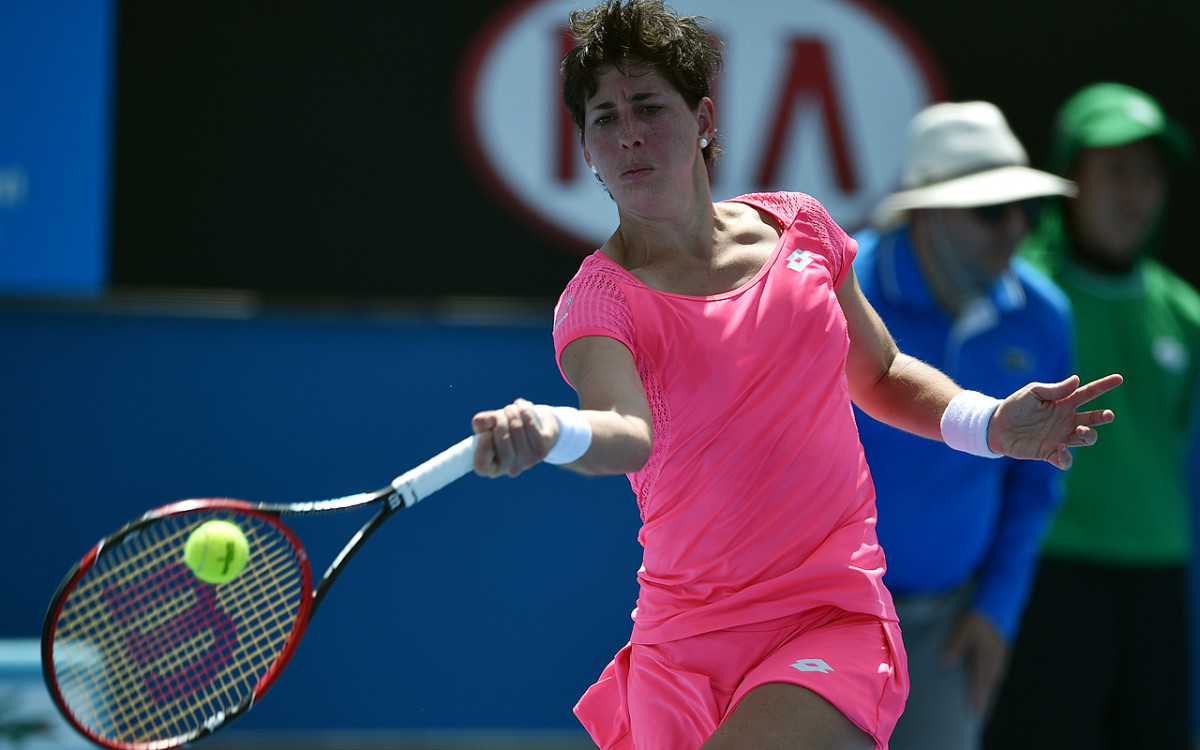
Stan Wawrinka
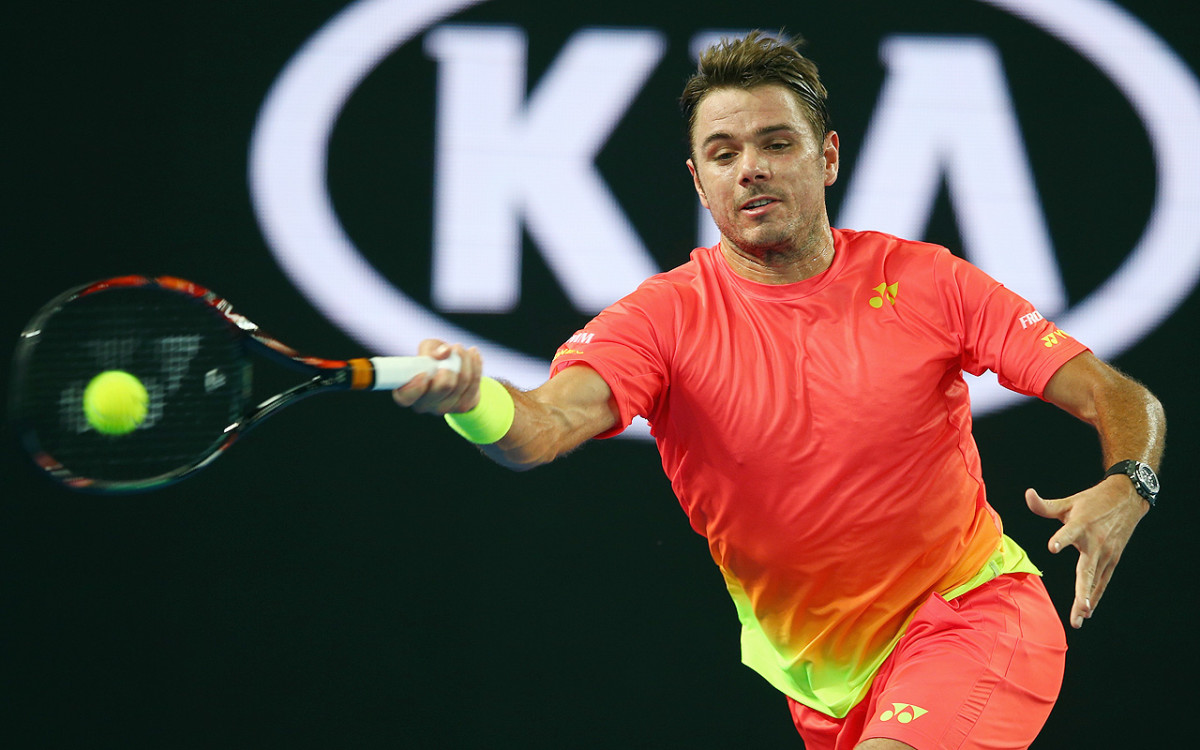
Benoit Paire
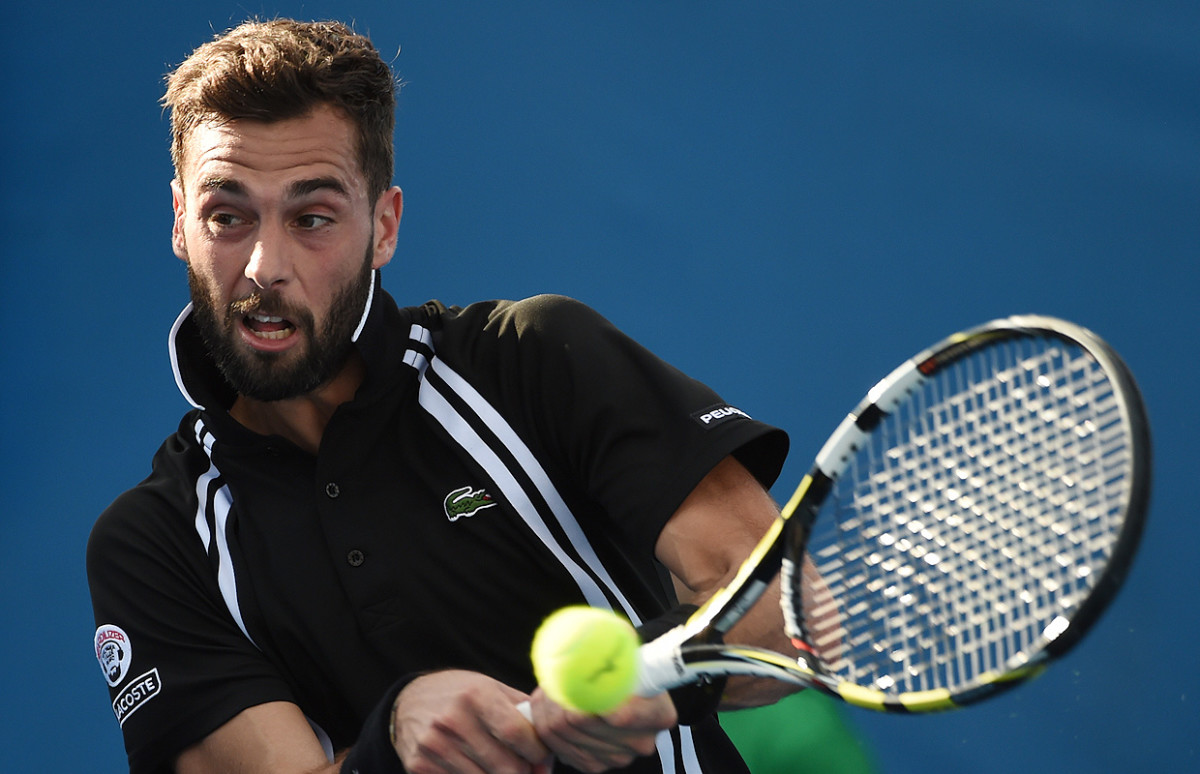
Gilles Simon
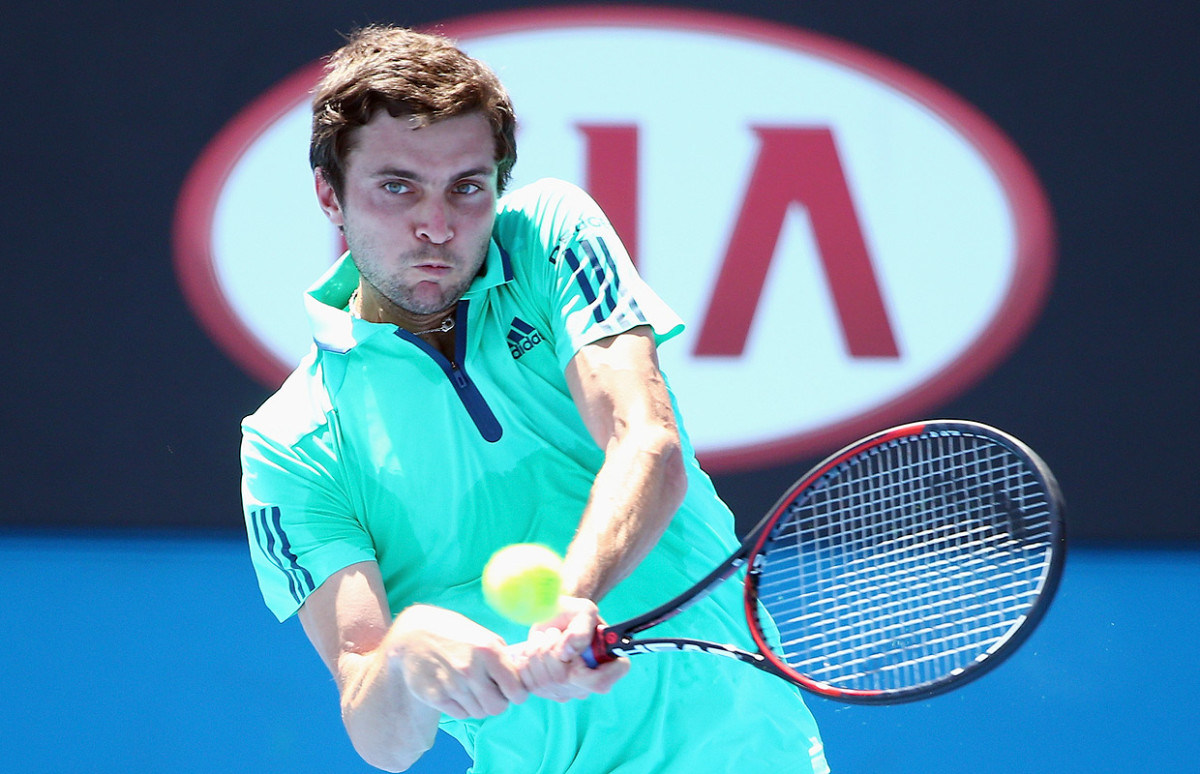
David Goffin
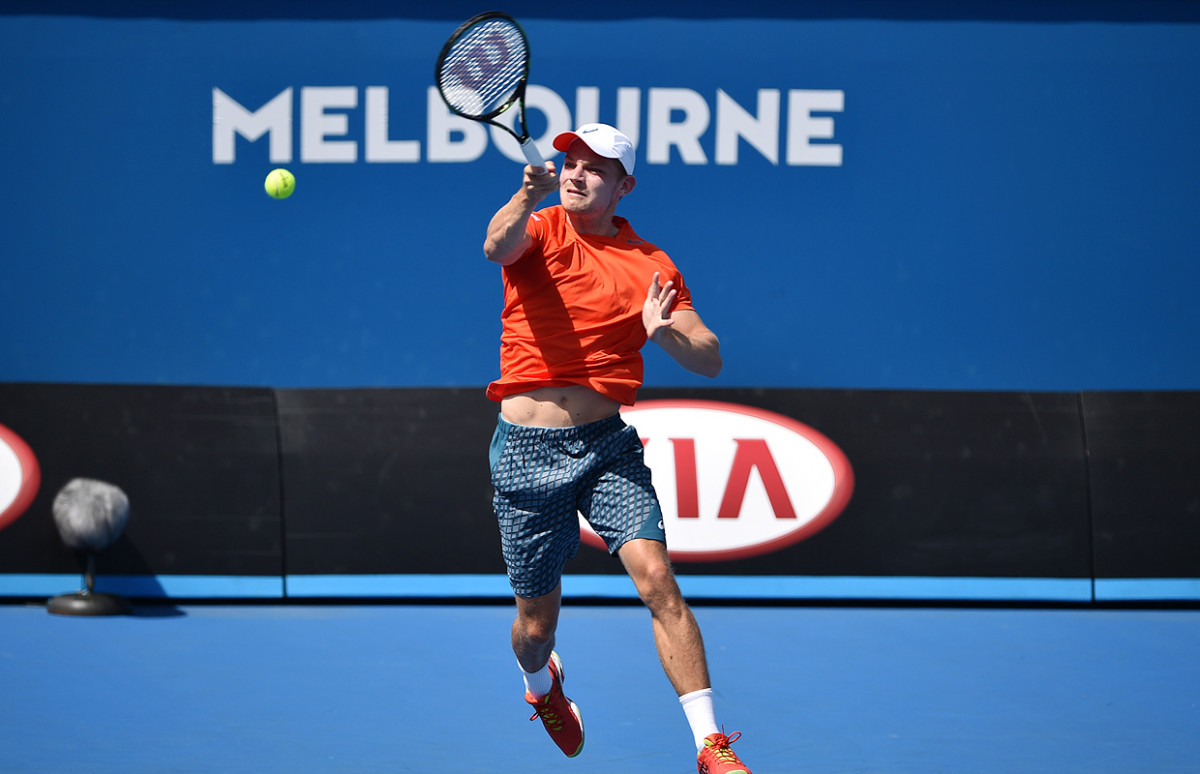
Dominic Thiem
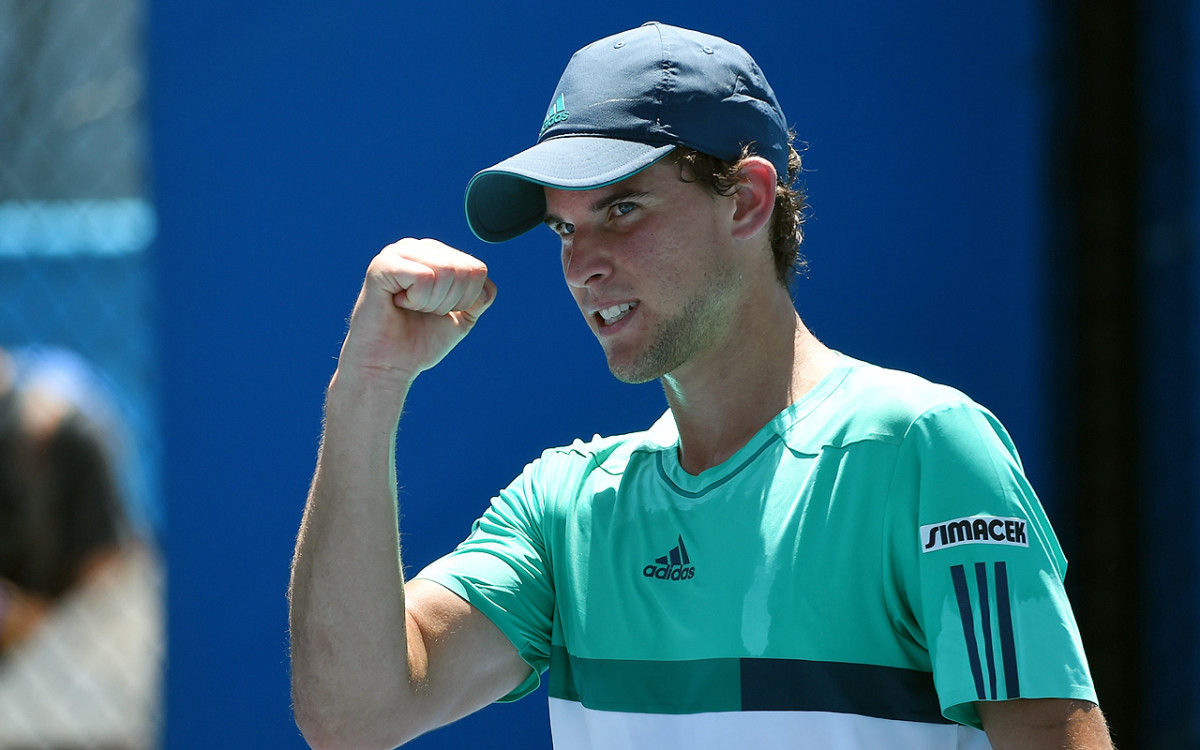
Garbine Muguruza
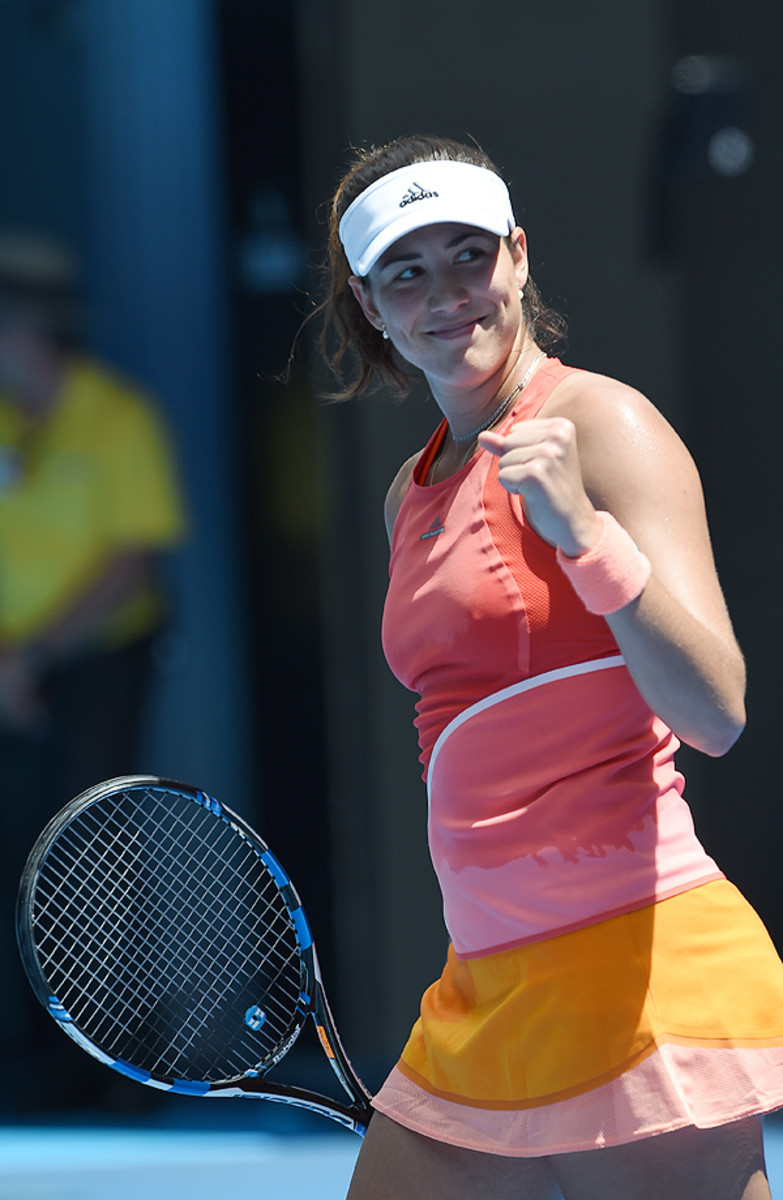
Kevin Anderson
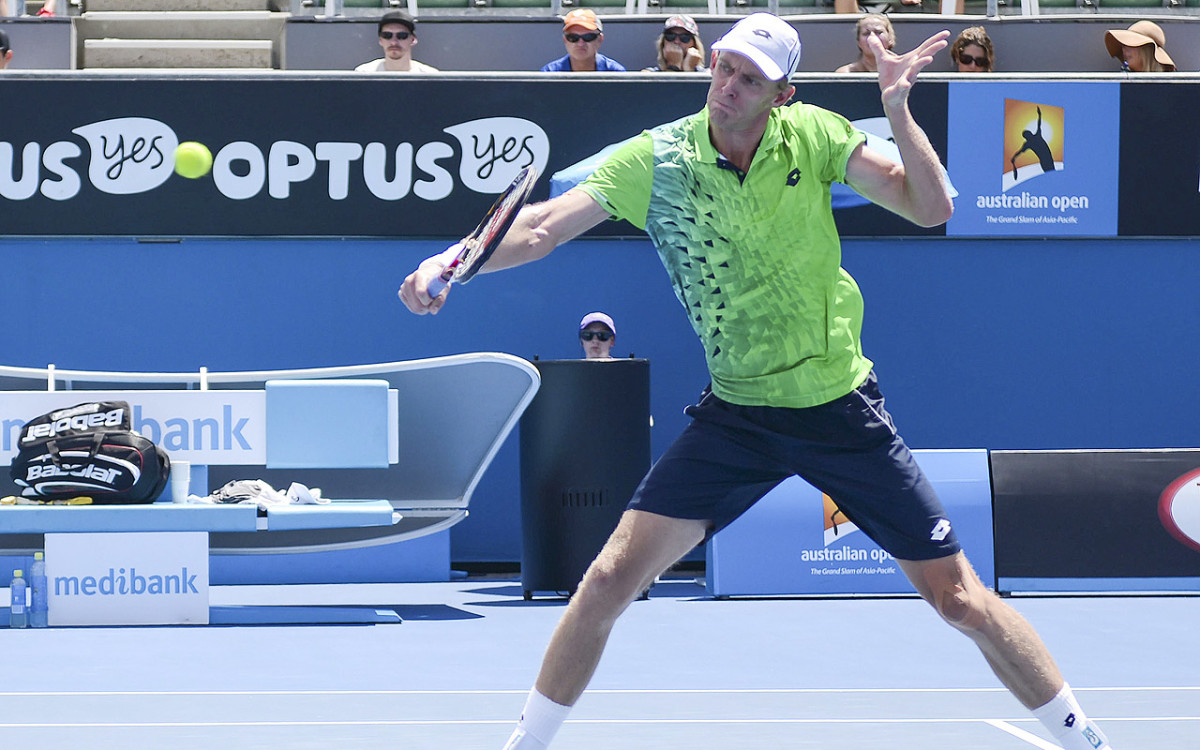
• Dasha Gavrilova was almost Kygrios-ian in her fourth round defeat. Lots of entertaining shot-making and sizzle. Then, she started losing and showed emotional immaturity, each point doubling as a woe-is-me passion play. Then, she issues this tweet and wins us all back:
I was a spoiled brat out there... Emotionaly fried...... sorry about my horrible behavior 💔
— Daria Saville (@Daria_gav) January 24, 2016
• The Grandpa Simpson, “I remember when” observation: One of the first tournaments I covered was the 1998 Canadian Open. I recall distinctly that Mark Philippoussis retuned from a post-Wimbledon trip to Greece and his Alexander the Great tattoo was the subject of great curiosity. Today? I put the player tattoo rate at 50%. Not so exotic.
Lleyton Hewitt’s career ends at Australian Open but legacy lives on
• A nod to ESPN’s Chris Fowler. The guy calls the College Football Playoff championship game for an audience of something like 30 million fans. He comes here a week later and calls a tennis matches for an audience of….well, suffice to say considerably less than 30 million. And there’s no drop-off in his preparation or enthusiasm or professionalism.
• Thanks for your kind words about the Tennis Channel coverage. Feedback is always welcome. We have a lot of fun and it’s heartening to know that gets animated on the air. Please know that when you enjoy the features and essays, you are enjoying the handiwork of Josh Glaser, Shelby Coleman, Angela Evans, Troy Barruso, Andrew Romero, Tiffany McLoughlin and Brian Nelson.
Another note: As you may have read, Tennis Channel was purchased by the Sinclair Broadcast Group last week.
• From the know-your-audience department. I’m thinking the boys at the All England didn’t give rights and clearances here for this positively bizarre local commercial:
[youtube=https://www.youtube.com/watch?v=jCYBJYHq8Jc]
• Strange times for the Bryan Brothers. The best doubles team of all-time has now gone five Slams without winning a major and only taken one big prize since Wimbledon 2013. Speaking of doubles, this has to be on the short list for point of the tournament.
Many hands make doubles work in this @CPAAustralia Shot of the Day. #AusOpen https://t.co/Sj2AaUL4dX
— #AusOpen (@AustralianOpen) January 26, 2016
• For the talk of British tennis, deserving as it was, spare a thought for Laura Robson.
• The overall loser of the tournament? Rafael Nadal. What do I mean? He lost to Verdasco, who lost to Sela, who lost to Kuznetsov, who lost to Monfils, who lost to Raonic who lost to Murray, who lost to Djokovic.
• Trolling the juniors, we noticed that grunting seems to be on the wane. How’s that for closing on a positive note?
WE’LL DO IT AGAIN IN PARIS (IF NOT INDIAN WELLS)
